- Mayan Ruins
Tulum Ruins Tour
$ 99 USD -30%
Google: 4.5 - 17,870 reviews
Min 4 years old
Experience the culture and history of the ancient city of Tulum on this 2-hour family-friendly tour. Your cultural adventure begins with a hotel pick-up in one of our courtesy vehicles.
Once we’ve arrived at Tulum, you’ll be led by our experienced guides in small groups around the ancient Mayan Ruins of Tulum, learning about the Mayan civilization’s history, architecture, and archaeology. During your cultural tour, you’ll see structures that have stood the test of time, being more than 800 years in age.
This historical site welcomes thousands of visitors daily, though this small-group tour will have premiere access to the Tulum Ruins, giving you an experience free of long lines so you can focus on the beauty of Cancun’s rich history. Concluding your visit to the historic site of Tulum, we’ll drive you right back to your hotel in a temperature-controlled bus.
Visit the ancient Mayan city of Tulum in one of the most memorable excursions in Cancun with our knowledgeable guides who, through colorful stories, will help you feel as if you are standing in Tulum in the 13th century.
Our small guided tour format and attention to detail will make your day memorable and educational as you walk through the Mayans’ most well-preserved and majestic ruins.
During this half-day trip, you will have time to learn about the rich history and culture of the Mayan civilization yet still have time to return to your resort and enjoy the rest of your day by the pool or on the beach.

Explore the Ancient Mayan Ruins of Tulum
Take a step back in time to Tulum, a 13th-century Mayan city located on the coast of the Yucatan Peninsula in the south of Cancun. Many of Tulum's original structures have stood the test of time and are remarkably preserved as ancient ruins accessible to tourists.
Out of the many historical tours offered, none is better than our in-depth, half-day excursion here at Cancun Adventures. Led by experienced regional guides, our tour gives you the opportunity to get up close and personal with the many pieces of ancient Mayan history the ruins of Tulum have to offer—all while learning amazing archaeological facts along the way.
Discover the Rich History of the Walled City
Surrounded by amazing views of the Caribbean, this city is named after the Maya word for “wall”. Tulum was given this name as it is one of only a few walled cities built by the ancient civilization.
Get a glimpse of the mighty limestone seawall that has stood for nearly a thousand years, stand in the shade of structures with history etched in their very stone, and enjoy Playa del Carmen's brilliant tropical climate. If you're looking for a quality educational and cultural tour of the Mayan ruins , there is no better choice than a visit to Tulum.
Tour Tulum from Cancun — All in Half a Day
In the region south of Cancun there’s no shortage of activities to explore and sights to see. To help you get the most out of your trip, we've made this Tulum tour the perfect length. In a half-day, you'll get to experience the Tulum ruins in all of their ancient glory—with ample time to get back to enjoy a relaxing evening.
Round-trip transportation is provided to and from hotels in Cancun and Playa del Carmen. Out of the many day trips to Tulum in the region, this is the perfect one for travelers on busy schedules. Travel to Tulum all in one day for a historic tour unlike any other tours in Cancun!
What's included in this experience
- Round-trip transportation in an air-conditioned van from most hotels in Cancun and Playa del Carmen
- Professional bilingual guide
- Entrance to archeological site
What do you need to know before you book
- Minimum Age: 4 years. Child pricing applies to ages 4 to 11 years.
- Not recommended for guests with limited mobility
- Round-trip transportation is included from select hotels exclusively for our guests who book their tours at least 24 hours in advance
- Please consider additional traveling time from your hotel to this Tulum tour, depending on your hotel’s location.
- Single-use plastic bottles are not allowed within the archaeological site.
What to bring
- Comfortable shoes
- Sun protective clothing
- Extra money for souvenirs
- Please bring a refillable water bottle, as single-use plastic bottles are not allowed within the archaeological site.

The Best 11 Mayan Ruins Tours from Cancun to Do in One Day

Disclaimer: This page may contain affiliate links. If you make a purchase using one of those links, I may earn a commission at zero cost for you. You can read my disclaimer policy and privacy policy .
If you’re looking for the best Mayan ruins tours from Cancun, you’ve come to the right place! I have selected the top-rated tours that you can join from Cancun and immerse yourself in the rich history and culture of the ancient Mayan civilization while listening to a certified guide sharing their knowledge.
You can visit the famed site of Chichén Itzá, explore the Mayan archeological site of Tulum, or visit Coba and Ek Balam–two unique sites nestled into the jungle.
Or maybe you’ll decide to theme your trip and hit multiple destinations during your vacation.
Read on to discover the best Mayan ruins tours available according to your preferences, budget, and travel style.

The Mayan Ruins at a glance
Did you know that sixteen different Mayan provinces populated the Yucatán Peninsula in the early 16th century? Knowing that it’s easy to see how this area came to be known as the gateway to the Mayan world.
Many fascinating archaeological sites are spread across the Yucatán including Chichen Itza, the Tulum Ruins, Uxmal, the lesser-known Ruta Puuc, Mayapan (my favorite), and many more.
Several of these Mayan ruins have been declared world heritage sites, which is all the more reason to visit!
Cancun itself is home to two Mayan archeological sites (El Rey and San Miguelito) and was an important center of trade during the Mayan era. Although these sites are worth checking out, this post is about more impressive ancient sites that are a bit further away.
It’s easier to visit the ruins on this list with a tour company. If you have been reading my blog for a while you will know that I prefer to travel by car and be more independent.
However, I reckon that looking at this majestic Mayan City with a guide is much more interesting because you also get to learn about the building you are looking at.
Also, tours will help you save time if you are in a rush and want to see as much as you can.
However, if you have time and want to drive your car around the Yucatan Peninsula, you can do that too and hire a guide at the site entrance. They are available at almost every major archeological site.
Now let’s get to the good stuff. Here are the best Mayan ruins excursions for a great day trip from Cancun .

The best Mayan ruins tours from Cancun: Chichen Itza
1. chichen itza mayan ruins tour.
If you are looking for my favorite tour operator, look no further than Chichen Itza Tours. This company has a 5-star rating and 104,038 reviews! Talk about social proof!
Pick your favorite tour by this operator:
👉 Chichen Itza Tour Classic
The classic tour is the crowd favorite, offering visitors the opportunity to explore Chichén Itzá, swim in a cenote, eat a delicious buffet lunch, and visit the colonial city of Valladolid all in one go!
This tour includes roundtrip transportation, a buffet lunch, a visit to a cenote, an express stop in Valladolid, the entrance fee to Chichen Itza, a guided tour inside Chichén Itzá, and free time to explore the Mayan ruins on your own.
This tour does not include any drinks or snacks, so be sure to bring water!

👉 Chichen Itza Tour Express
Let’s face it, the classic tour can be a bit much. Those are all fun stops, but stack them one atop the other and you may come out exhausted!
If you aren’t as keen on visiting Valladolid and a cenote but want to focus your time on the archaeological site itself, the “express” is the tour for you!
Head straight to Chichen Itza for a guided tour and free time, then straight back to your hotel.
This tour includes roundtrip transportation, a box lunch, the entrance fee to Chichen Itza, a tour guide who will lead you through the ruins, and time on your own to enjoy them.
👉 Chichen Itza Tour Plus
If you like the sounds of the classic tour plus VIP treatment, the Chichen Itza Tour Plus is a perfect choice. Enjoy all the perks of the classic tour with unlimited drinks and a waiter to serve you on the bus.
This tour includes roundtrip transportation with unlimited sodas, beer, and water served by a waiter on board, a buffet lunch (no drinks included), a visit to a cenote, an express stop in Valladolid, the entrance fee to Chichen Itza, a guided tour inside Chichén Itzá, and free time to explore the mayan ruins on your own.

👉 Chichen Itza Tour Deluxe
Take the amenities one step above the Plus tour with the Deluxe. This tour includes everything you get on the Plus tour, but with a light to-go breakfast and a drink with your buffet lunch.
You’ll also have a towel available for swimming, and an umbrella available if it rains while you’re at the Mayan ruins.
You’ll also have the option of drinking tequila on the bus. Bottoms up!
👉 Chichen Itza Tour Diamante
The Diamante tour takes the amenities one level further. This luxury tour offers even more drink options while on board the bus, including whisky, tequila, or Xtabentun (a Mayan liquor). You’ll also have access to a life jacket as well as a towel during your swim in the cenote.

👉 Private Chichen Itza Tour
Skip the mandatory itinerary of a group tour and go where you want when you want with this private tour. You can even start off with a 6 am departure, beating the crowds and enjoying Chichen Itza in the cooler morning hours.
You’ll have ten hours to do as you wish, whether that means spending a ton of time enjoying Chichen Itza, visiting Cenotes of your choice, and/or hitting up a famed restaurant.
Note: This tour includes an English-speaking driver, but not a guide. It also includes a cooler with water, ice, and beers, toll road and parking fees, and roundtrip transportation. Entrance fees are not included.
👉 Luxury Chichen Itza Tour
The luxury Chichen Itza tour is just like the private tour above, except you get transported in the style and comfort of a suburban!
Top-rated tours to Chichen Itza Mayan ruins on Viator
If you don’t like any of those top-rated options I listed, consider these excellent tours to Chichen Itza, with awesome Cancun cenotes and colonial cities added to the mix.
2. Chichen Itza, Cenote and Valladolid All-Inclusive Tour
This tour will take you on a great adventure complete with Mayan ruins, a cenote, and the colonial city of Valladolid on this fabulous tour! With a 5-star rating and upwards of 8,732 reviews, there’s no question this is one of the best excursions out there!
The tour starts off with pickup from your hotel in the Riviera Maya and transportation to Chichen Itza. Although the drive takes a few hours, you won’t be bored. During the travel time, your expert guide will dive right in by giving you wonderful information about the ruins.
The fascinating information will keep pouring in once you reach the Chichen Itza itself. You’ll learn about the history of the site and the significance of the structures to the Mayans.
Next, you’ll visit Saamal, a beautiful open cenote complete with a waterfall and viewing platforms.
After a yummy buffet lunch, you’ll get a quick tour of the majestic city of Valladolid, with its ancient temples and rich history.
This excursion includes roundtrip transportation from your hotel, a bilingual guide, the cenote admission fee, and a buffet lunch.
It does not include beverages, the Chichén Itzá entrance fee, lockers, life jacks, and gratuities.

3. Chichen Itza English Tour, Buffet Lunch, Cenote,Tequila tasting & Valladolid
Another wonderful option for visiting Chichen Itza is this 4.5-star badge of excellence tour! With over 6,073 reviews to offer social proof, there’s no question you’ll be in good hands. It even includes tequila tasting. Talk about an upgrade!
Choose the VIP option to include hotel pickup, then travel to Valladolid for a quick stop. Stretch your legs and enjoy the beautiful central park and a Catholic church.
Around noon, you’ll get to Chichen Itza! Start off with a 90-minute guided tour, and then 90 minutes of free time. You’ll learn a lot about the ancient Maya, the equinox, the moon, and the stars.
You’ll end the day with a refreshing swim in Selva Maya, a beautiful cenote.
Lunch, tequila tasting, a bilingual guide, and entrance fees to the cenote are included. The tour doesn’t include drinks, the Chichen Itza entrance tax, and life vests for swimming.
Travelers’ loved the service, tour guide, and food on this tour.
The best Mayan ruins tours from Cancun: Tulum
The Tulum ruins are truly one-of-a-kind. These are the only Mayan structures built on a seaside cliff, and the vistas are stunning. You won’t want to miss these!
Let’s dive into the best tours of Tulum Ruins.

5. Viator Exclusive Combo Tour: Tulum Ruins, Reef Snorkeling Plus Cenote and Caves
This is the Top Rated Tour from Cancun to Tulum on Viator with 2524 5-star reviews and counting. You can’t go wrong!
Start the day off by getting picked up at your hotel and being driven to the Tulum archaeological site. After a guided explanation of the ruins, you’ll have free time to take pictures and enjoy the spectacular sights!
Next, you’ll get outfitted with snorkel gear and swim over a gorgeous coral reef populated by colorful fish. In the afternoon, you’ll visit an underground cave full of intricate stalagmites and stalagmites, walk through the jungle, and swim in Cenote Xtun.
Travelers loved how well-organized this tour was, the wonderful guides, and the variety of activities.
This tour includes a bilingual guide, roundtrip transportation with AC, lunch, bottled water, and the use of snorkeling equipment.
It does not include the Natural Marine Reserve Fee, tips, and souvenir pictures (available for purchase).

6. Tulum and Cenotes Tour
Another wonderful tour will take you to three of Tulum’s most-prized sites: the Mayan ruins of Tulum, and the Chen Há and Mariposa Cenotes.
Enjoy an incredible guided tour of the ruins plus free time to explore them and snap photos on your own. Next, you’ll visit Chen Há, a beautiful open Cenote where you can swim to take the edge off the heat. You’ll also visit Mariposa, a cave cenote with tranquil turquoise waters. You can swim here too!
This is sure to be a day full of amazing scenery and information.
This 5-hour badge-of-excellence tour includes roundtrip transportation from your hotel, a multilingual tour guide at Tulum Archaeological Site, and visits to two cenotes. It does not include the entrance fee at the cenote, gratuities, and personal expenses (such as food and drinks).
7. Tulum Adventure (archeological zone-Atv-ziplines-cenote-lunch-drinks-rappel)
Another fun Mayan ruins tour from Cancun is this Tulum Adventure experience. If you’re into adrenaline, this is the choice for you!
Start the day off with a guided visit to the Tulum ruins. Next, swim in beautiful cenote caves, and then zoom through the treetops on a zipline! You’ll also get a boost of endorphins while you whoop and holler your way through the jungle on the back of an ATV . Hang on tight, it’ll be a fun ride!
The best part of this tour is that the groups are small, you don’t have to wait in line, and your guide is guaranteed to be awesome.
The Tulum adventure tour includes roundtrip transportation, a guide, a life jacket, equipment for everything, bottled water, and a delicious lunch. It does not include alcoholic beverages or the camcorder tax.
This 7-hour tour has a 4.5-star rating. Travelers said this action-packed day was tiring but so worth it.

8. Tulum Guided Tour, Magical Cenote, Lagoon Snorkeling, and Beachside Lunch
If the prior tours sound jam-packed to you, consider this lovely alternative instead! Rather than hopping from one destination to another, enjoy the day more fully at only three separate locations.
The day starts off with a guided tour through the ruins of Tulum. The stories and information your guide shares are sure to spark your imagination.
Picture the city as it was at its prime and wonder at its mysteries. After the guided section, you can spend an hour exploring on your own. (Hint: Search for the secret beach.)
By then, the heat will be getting to you, so it’s time to go snorkeling ! Visit Yal Ku Lagoon and don a mask and snorkel. This spot is an incredible location for seeing marine life in an edge system, where seawater and salt water mingle.
Finish off the tour with a delicious beachside lunch at Punta Venado, a pristine location featuring turquoise water and white sand. Delightful.

The best Mayan ruins tours from Cancun: Coba
Another super cool archaeological site you won’t want to miss while you’re in the Yucatan is Coba.
These ruins are located between Valladolid and Tulum and are super unique.
Coba features one main pyramid and several settlements interconnected by roads. Although there are about 6,000 structures at this site, only a few of them have been excavated.
It makes it easy to picture what it must have been like for archaeologists to discover these in the middle of the lush jungle!
9. Coba Ruins Day Trip from Cancun or Riviera Maya
This tour will take you from your hotel in Cancun or the Riviera Maya to the ancient ruins of Coba! During the ride, your guide will give you wonderful information about Coba’s history and its significance to the Mayan civilization.
Once you reach Coba, you’ll have two hours to explore the ruins, climb to the summit of the city’s tallest pyramid, follow the guide for an informative tour, or rent a bicycle to zoom around and see it all yourself.
Next, you’ll visit a Mayan village to see what Mayan communities look like in present-day Mexico. At the end, you’ll take a refreshing swim in a cenote, then head back to your home base.
Coba Ruins Day Trip includes a tasty lunch, light refreshments, a local guide, and transportation in an air-conditioned vehicle. Hotel pickup and drop-off are included.
The tour lasts approximately ten hours and has earned a 4.5-star rating and Viator’s badge of excellence.

The best Mayan ruins tours from Cancun: Ek Balam
Ek Balam is one of the least visited sites in the Yucatan and yet one of the most magical. Visit these Mayan ruins if you prefer less-crowded destinations.
No elbowing people out of the way to see the sites on this one.
Plus, the architecture at Ek Balam is incredibly unique!
10. Visit the ancient Ek Balam, the colonial town of Valladolid & Cenote Hubiku
Set yourself up for an amazing time by joining this awesome tour to Ek Balam, Valladolid, and Cenote Hubiku.
After getting picked up at your hotel, you’ll head straight to Ek Balam. An expert tour guide will lead you through the mystical ruins, explaining them to you and helping to bring them to life in your imagination.
Next, you’ll visit Cenote Hubiku, also known as “the nest of iguanas.” But don’t worry, there aren’t iguanas there now. Instead, you’ll climb down 115 stone steps to this underground cenote which has a circular hole in the cavern roof. Sunlight falls through onto the turquoise water. It’s spectacular and the perfect spot for a refreshing swim and tasty lunch.
Last, but not least, you’ll visit the magical town of Valladolid, one of Mexico’s most picturesque cities. Wander the streets and learn about its culture and history.
This tour includes a certified guide, entrance tickets to Ek Balam and Cenote Hubiku, lunch (no beverage), tequila tasting, and a box lunch breakfast.

11. Ek Balam Tour from Cancun Including Cenote Maya Park
This awesome tour combines a guided visit to the Ek Balam ruins and a more adventurous stop at the Cenote Maya Park where you can either swim and relax in the cooling waters of the magical cenote or enjoy a variety of outdoor activities like rappelling and ziplining.
The tour also includes round transportation from most Cancun hotels and a delicious buffet based on Yucatecan cuisine.
What to wear on an excursion to the Cancun Mayan Ruins
Like for every tour, wearing the right clothes and taking the right equipment will make your trip better and much more enjoyable.
So here are my pro tips on what to wear during a Mayan Ruin excursion.
✔️ Dress lightly and comfortably – linen or hiking pants would be ideal, and a top tank or a linen shirt will help with the heat.
✔️ Hiking or tennis shoes will be ideal – although you are not actually hiking, closed shoes will prevent you from being bitten by bugs, like ants or mosquitos as you walk around the archeological sites. For me, these are a lifesaver. You can bring some flip-flops in the backpack for when you will move to the cenote.
✔️ Swimsuit – for the cenote – check out these beautiful and cheap ones from CupShe (my absolute favorite)
✔️ Sunscreen and a hat (but make sure you wash it away before entering the cenote)

✔️ Mosquito Repellent – mosquitos are omnipresent in the jungle, so make sure you protect yourself

Keep mosquitos away!
OFF! Botanicals Deet-Free Insect Repellent, Plant-Based Bug Spray & Mosquito Repellent, 4 oz
6885 4.5-⭐️ Reviews
✔️ Water bottle – always stay hydrated in Mexico, especially when you go on a tour and stay in the heat for a while. Remember tap water is not drinkable in Cancun , so you can get a cute water bottle and refill it in restaurants or your hotel.
Click on one of the below water bottles to purchase your favorite one ⤵️

✔️ Beach Towel – usually hotels provide a beach towel that you can carry on excursions but they are fluffy and big and occupy a lot of space. So you can buy either a cute linen Turkish towel or a more practical quick dry towel.
✔️ Foldable backpack – you can get a nice and cheap foldable backpack on Amazon and use it on these tours to carry your stuff.
Mayan Ruins Tours from Cancun: Final Thoughts
As you can see, there are many incredible Mayan ruins to visit while you’re on vacation in the Mexican Caribbean. I wouldn’t miss out on the big-ticket ruins of Chichen Itza, the gorgeous seaside site of Tulum, and the mystical jungle ruins of Coba and Ek Balam.
No matter which tour you choose, you are bound to have the experience of a lifetime! In between visiting ruins, you can swim in cenotes, explore the colonial streets of Valladolid, eat delicious Yucatec food, and snorkel over coral reefs! It’s going to be awesome!
Hey there! This is Isabella, the founder and author of this site. I have been living in Cancun for the past 13 years and although I have been roaming around Mexico, Cancun's spectacular turquoise waters and pristine beach draw me back to this popular Mexican beach destination. That is why I decided to start this blog, to show you all the beauty you can find in Cancun and share helpful travel tips to help you plan a fabulous vacation in Cancun!

Tulum Ruins: A Visitor’s Guide
Posted on Last updated: 05/04/2023
Categories Things To Do
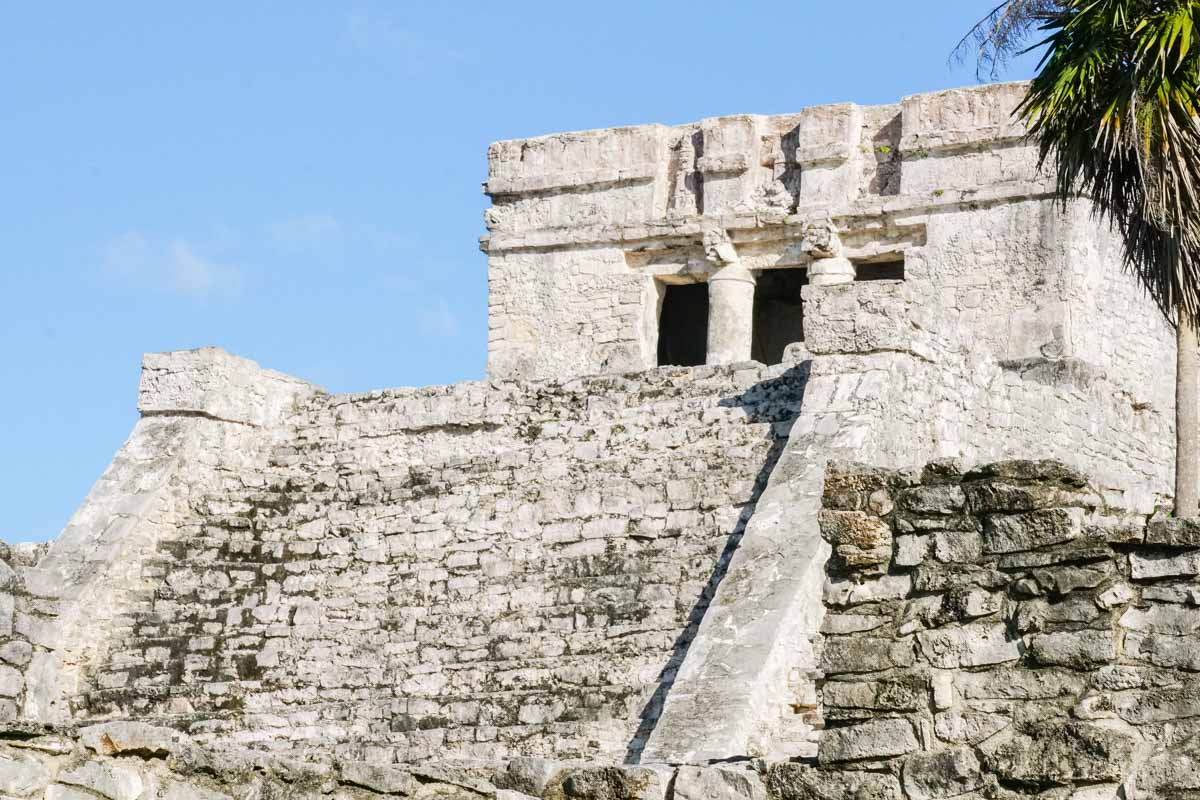
If you’re visiting Tulum, one thing that should definitely be at the top of your list is to pay a visit to the impressive Tulum Ruins. Tulum was once a mighty walled city built by the Mayan people, the ruins of which are still standing today.
The Tulum Ruins are some of the best-preserved Mayan ruins you can see. As such, they attract people from all over the world.
Planning your visit to Tulum’s Mayan ruins? Discover everything you need to know – from their history, how to get there and entrance, in this insider’s guide.
Why Visit the Tulum Ruins?

No visit to Tulum would be complete without seeing its ancient ruins. Here are a few reasons why you should visit this impressive archaeological site.
Gives Insight Into Mayan History
The Mayan people are famous for being one of the dominant empires of the ancient world. They are well-known for excelling at pottery, hieroglyphic writings, calendar making and mathematics.
They’re also famed for their imposing architectural structures, such as the Tulum Ruins. Tulum was initially built to protect its people. The town is also known for being an important trading and religious center between the 11th and 16th centuries.
The Tulum Ruins are one of the most well preserved Mayan sites along Mexico’s coast and provide a glimpse of how the Mayans lived and why they were a renowned civilization.
Stunning Natural Scenery
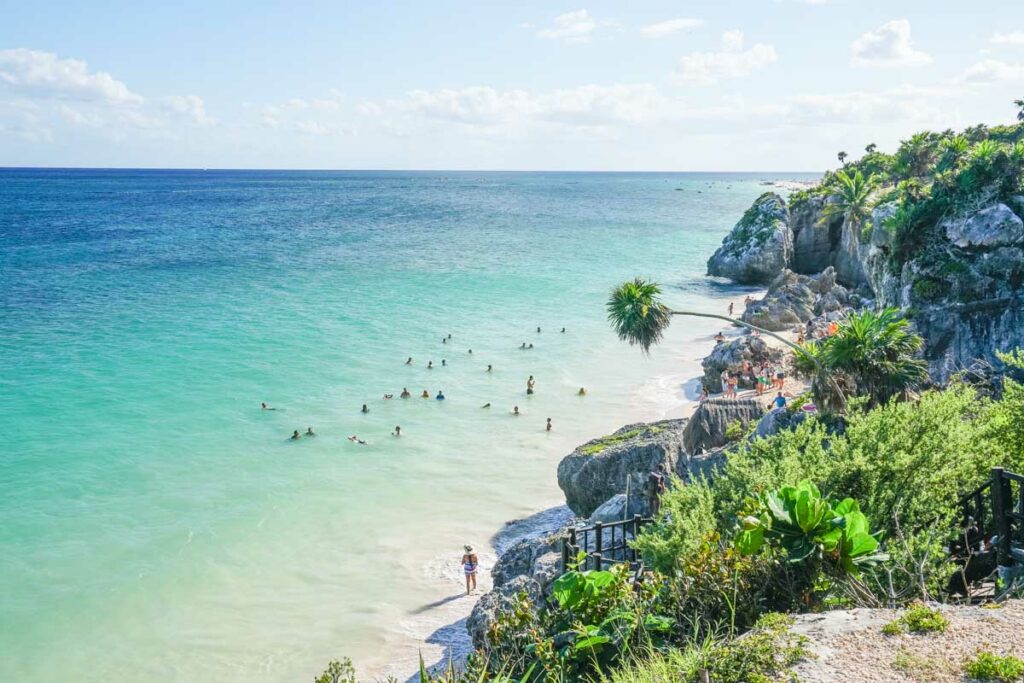
This impressive Tulum archaeological site sits on the edge of a steep cliff. It overlooks the gorgeous Caribbean Sea.
Right below the site lies the Tulum Ruins Beach, one of the area’s best beaches .
The site is also surrounded by palm trees, delicate cactus flowers, and even sunbathing iguanas.
Tulum Ruins: What To Expect When You Get There

The ruins sit inside the Tulum National Park. It is a massive area with a few important structures. These structures include:
El Castillo
The Tulum pyramids are one of the most well-known landmarks in the area. El Castillo is the tallest of these pyramids, standing at 24-feet (7.5 meters) tall. It served as a lighthouse that guided ships into the port.
Temple Of the Frescoes
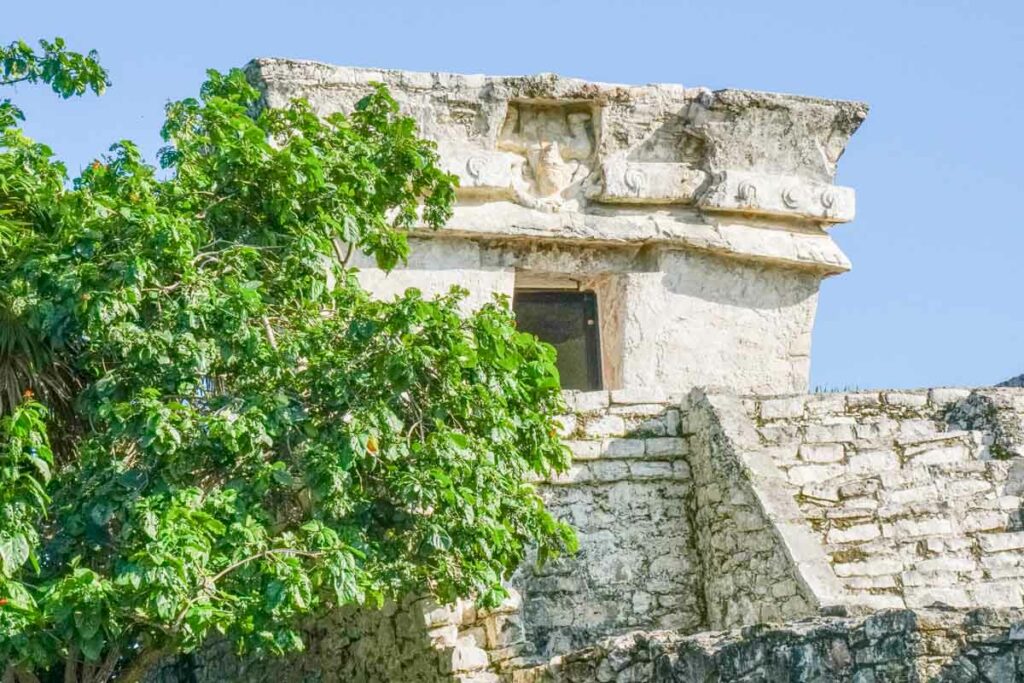
The Temple of the Frescoes is a two-story building in front of El Castillo. In Tulum’s peak, it had an important social and religious significance.
It has interesting architectural elements, murals, decorations, and sculpture. While it has had some wear and tear over the last 800 years, you can still see a few of them today.
House of Columns
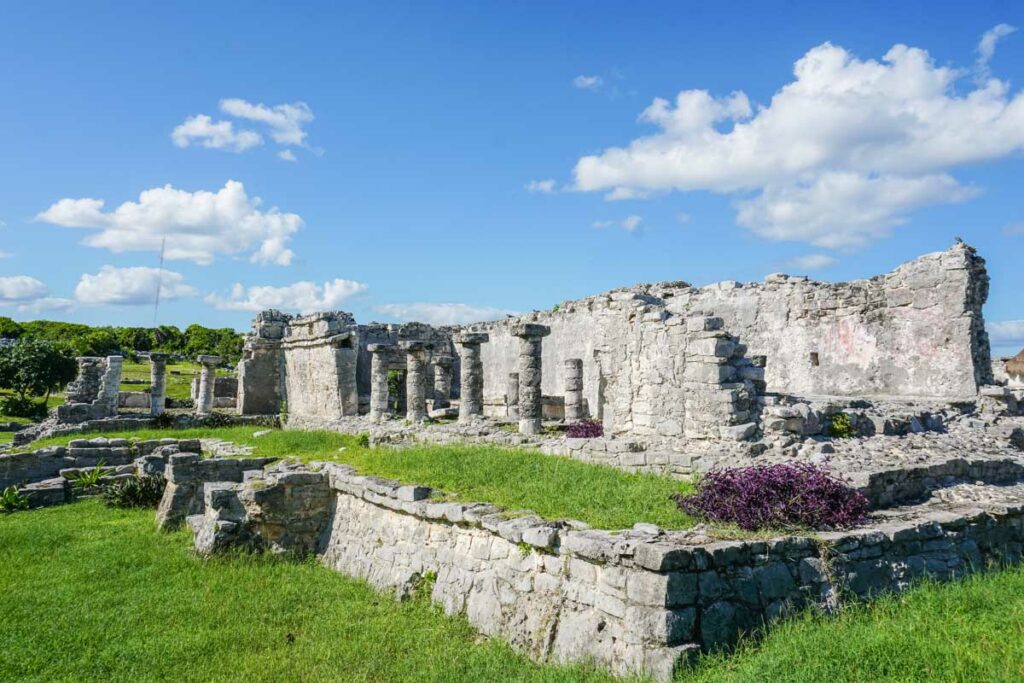
The House of Columns, also known as El Palacio (The Palace), is a large building complex consisting of four rooms. It served as the residence for important Mayan leaders.
House of Halach Uinic

Each Mayan city had a supreme leader and high priest known as the Halach Uinic . The House of the Halach Uinic served as the residence for the leader and is one of the most well-preserved buildings on the site.
The History of Tulum’s Ruins
It’s believed that Tulum is one of the last great cities built and inhabited by the Mayans. Its original Maya name was Zama, meaning “ City of Dawn ,” as it faces the sunrise.
The city served as an important site for the worship of “ The Great Descending God, ” whose image is still found on the temple in the Tulum Ruins. Tulum was originally built as a seaport fortress along the steep ocean cliffs.
At its peak between the 13th and 15th centuries, around 1,600 people called Tulum home. It was a booming trade center and port mainly for the trading of obsidian rock.
Other goods such as jade and turquoise stones, cotton, food, copper, axes, and cacao beans were all traded in Tulum. Tribes from all over Mexico and other Central American countries would travel to the town for trading purposes.
Today, the huge stone wall that surrounds the site protected Tulum and the nearby city of Coba from pirates and invasions from the east.
Planning Your Visit to Tulum’s Mayan Ruins
There are a few things that you should know before visiting Tulum and its ruins. Here is some useful information to help you plan your visit to the Tulum Ruins.
Tulum Ruins Address
Physical Address : Carretera Federal, Cancun – Chetumal Km 230, 307, 77780 Tulum, Q.R., Mexico
The Tulum Ruins sit on the eastern side of the Yucatan Peninsula in the Quintana Roo State of Mexico. It stands on the north side of Tulum Beach and is a few minutes away from the Tulum Center.
Tulum Mayan Ruins Opening Hours
The Tulum Ruins are open seven days a week from 8:00 am to 5:00 pm EST.
It is best to arrive early in the morning, at around 8:00 am, as there are fewer crowds. From around 10:00 am, crowds start to pick up, with larger tour groups arriving.
There is also very little shade onsite, so it’s best to arrive early as it is much cooler.
Getting to Tulum Ruins Independently
There are a few ways to get to the Tulum Ruins.
Car Rental
Renting a car is best for self-exploration. You can rent a car from Cancun Airport, which services the greater Tulum area. This will cost you around $40 per day.
Tulum is about 45 minutes away from Playa del Carmen and 90 minutes away from Cancun. There’s a parking fee of 160 Pesos ($7) at the Tulum Ruins.
By Bus
If renting a car is too expensive, you can take a bus from Playa del Carmen or Cancun. It will cost you around 80 Pesos ($4) for a one-way trip from Playa del Carmen and around 260 Pesos ($13) from Cancun.
Some buses stop directly at the ruins, while others stop at the bus station in Tulum, which is about 1.8-miles (2.9 km) from the ruins.
Colectivo
One of the cheapest ways to visit Tulum and the ruins from Playa del Carmen and Cancun is to take a Colectivo , or group taxi. It costs around 60 Pesos ($3) per person from Playa del Carmen and 130 Pesos ($6) from Cancun for a one-way trip.
By Taxi
If you’re planning to take a taxi from Playa del Carmen or Cancun, it will cost you approximately 600 to 800 Pesos ($30 to $40) for a one-way trip.
From Tulum Town
The Tulum Ruins are about 2.5 miles (4km) from the town center. You can rent a bicycle from anywhere in the town, which will cost you around 170 Pesos ($8) per day, and cycle to the ruins.
You cannot ride a bike inside the site, but there are bicycle racks with locks outside the entrance gate. You can also take a taxi from the Tulum center, which will cost you approximately 60 to 100 Pesos ($3 to $6).
One of the cheapest ways to get to the ruins from the town center is to use a Colectivo, which costs around 20 Pesos (less than $1).
On A Tulum Mayan Ruins Tour
Tours of the Tulum Ruins from Cancun, Playa del Carmen, or any other location in the Riviera Maya can cost anything between $50 and $250 depending on what’s included in the tour. Some tour options include full-day and half-day tours.
Other tour options combine visiting the Tulum Ruins with other activities like visiting the Sian Ka’an Biosphere Reserve and visiting a cenote.
This tour from Cancun , which costs around $99, for instance, offers the following :
- Hotel pick up and drop off
- A certified bilingual guide
- Entrance fees to the Tulum Ruins and Coba
- A visit to Playa Del Carmen
- Entrance fee to one cenote
- A buffet lunch
When choosing which tour to book, it comes down to what you would like to do and your budget.
Tulum Ruins: Frequently Asked Questions
Are the tulum ruins worth seeing.
Absolutely. No visit to Tulum would be complete without visiting this important historical landmark as it gives visitors a glimpse into the mighty Mayan civilization’s past.
How Much Does It Cost to Go to Tulum Ruins?
If you plan on getting to the Tulum Ruins by yourself, the entrance fee is 65 Pesos (around $3.50). If you plan on filming at the Tulum Ruins with video camera equipment, this will cost you an extra 30 Pesos (a little over $1).
What Are the Ruins in Tulum Called?
They are simply called the Tulum Ruins. The ruins are part of the Tulum Archaeological Zone.
How Far is Tulum from the Mayan Ruins?
The Tulum Ruins are about 2.5 miles (4km) from the town center.
Tulum Ruins, Mexico: Map
Looking for More Tulum Guides?
- Insider’s Tulum Travel Guide
- Things to do in Tulum
- Tulum Dining Guide
- Jaw-Dropping Mayan Ruins in Mexico
- Skip to primary navigation
- Skip to main content
- Skip to primary sidebar
- Skip to footer
Green Global Travel
World's largest independently owned Ecotourism / Green Travel / Sustainable Travel / Animal & Wildlife Conservation site. We share transformative Responsible Travel, Sustainable Living & Going Green Tips that make a positive impact.
The 16 Best Mayan Ruins to Explore

Disclaimer: This post may contain affiliate links. All hosted affiliate links follow our editorial policies .
Having spent several years working on permaculture gardening projects in Latin America, I’ve had the pleasure of visiting many of the region’s best Mayan ruins. It’s amazing when you consider the fact that these ancient structures span more than 2,500 years of Mesoamerican history .
Though the era of Maya civilization dominance ended some 500 years ago with the Spanish invasion, their historical and cultural influence lives on today. Most people immediately recognize their ancient architectural style, their colorful clothing, and their cuisine.
The Maya people contributed to our modern-day calendars, our use of numbers, our systems of government, and much more. They produced incredible pyramids comparable to those in Egypt. They were great decipherers of the stars. They created their own written language– the only one known of the pre-Columbian Americas. They even gave us hot chocolate!
In 2012, many spiritual travelers went batty because the Mayan calendar predicted a new age (which some perceived as an apocalypse of some sort) starting on December 21 st . Luckily for us all, it turned out that the ancient text might have been misinterpreted.
READ MORE: 10 Ancient Archaeological Sites (World Travel Bucket List)

Even without such extraordinary events on the horizon, millions of tourists choose to visit the 4,400+ documented Mayan ruins each year. Not only are these impressive structures monuments to the rich history of the Maya, but they’re also located in areas renowned for their extraordinary natural beauty.
At its apex, the Mayan empire stretched from the most easterly reaches of Mexico’s Yucatan Peninsula all the way down to Honduras and El Salvador. The Maya had a large, diverse civilization, with dozens of languages, regional distinctions, and elaborate rituals.
With each new site you visit, there is more of this history waiting to be discovered. Best of all, modern Mayan people still occupy these areas, preserving the customs of old and creating new ones to boot. Here’s a look at my picks for the 10 best Mayan ruins to explore:
- Mayan History
- The Decline of Mayan Civilization
- Mayan Ruins Map
- Mayan Ruins in Belize
- Mayan Ruins in Guatemala
- Mayan Ruins in Honduras
- Mayan Ruins in Mexico
- The Maya of Modern Times
- More Mayan Sites

MAYAN HISTORY
The Maya civilization was beginning to form, via hunter-gatherer groups, as early as 2600 BCE. But it was in the Pre-classic period (1800 BCE – 250 CE) that villages and agriculture developed and became organized. During the Classic period, between 250 CE and 900 CE, the Ancient Maya reached their peak power.
The civilization never exactly unified cohesively, but was more like an assembly of small states. Each had a king, with the stronger cities dominating the weaker ones. Then, the Ancient Maya cities were dramatically and somewhat inexplicably abandoned.
In the Pre-classic period, the Maya mastered agriculture. This was likely due to the cultivation of more productive maize crops and the development of nixtamal , a process that drastically increased its nutritive value. The corn was grouped with beans, squash, peppers, avocados, and tomatoes, to create fields with valuable symbiotic relationships.
Thanks in part to more reliable, stationary nutrition, cities gradually developed during the Classic period. As the civilization hit its stride, people had more time for intellectual pursuits.
Science, art, and architecture advanced during this era, as did trade, religion, and social hierarchies. They developed a calendar and writing systems. They built huge pyramids, vaulted ceilings, and elaborate ball courts. They used advanced techniques with ceramics, mathematics, and astronomy.
READ MORE: Museo Maya de Cancun (Museum of Archaeology)

THE DECLINE OF MAYA CIVILIZATION
At this time, these thriving cities grew considerably, both in size and population. Some historians believe that this growth is what ultimately caused the demise of the ancient Maya civilization.
The “collapse” of the Maya still remains a mystery, though there is no lack of theories as to its cause. What we do know is that the fall of the great Maya cities was not an immediate occurrence, as would happen with something like a pandemic or natural disaster.
The gradual decline took around 150 years. Scholars have cited three factors in the demise, with each having some influence. There was increased warfare, both within the civilization and possibly from outside. Overpopulation was straining their available resources. And that strain may have exacerbated by a series of droughts, starting around 800 CE.
However, it is extremely important to note that this collapse was not the end of the Mayan culture. In fact, the Maya remain a huge presence today in the Mexican Yucatan, the Guatemalan Highlands, and parts of Belize.
In these places, millions of Mayans continue to live in small villages, speak their indigenous languages, and uphold ancient religious and agricultural customs.
READ MORE: Exploring Rio Secreto, the Riviera Maya’s Underground River
MAYAN RUINS MAP
The 10 best mayan sites to visit.
The civilizations of the Ancient Maya covered a huge sprawl of the Americas, including shrubby drylands, murky swamps, picturesque coastlines, and lush tropical mountains.
This means that many different ecologies and landscapes were at play. This, in turn, led to ruins in overgrown jungles, massive pyramids towering over desert-like expanses, and coastal cities overlooking the Caribbean.
As a traveler, it’s difficult to find such diversity deriving from a cohesive culture in other parts of the world. These are ten of the most revered Mayan sites to visit…
MAYAN RUINS IN BELIZE
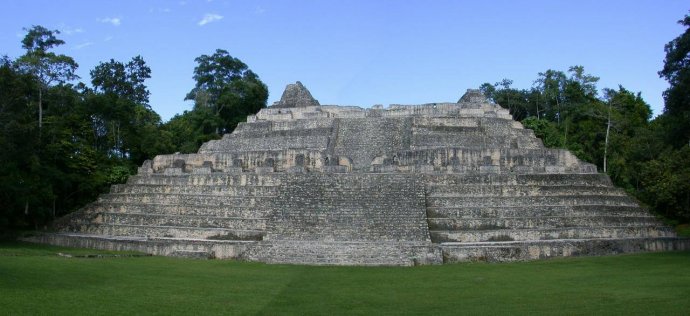
Caracol (Spanish for snail) was named by the colonial explorers, who noted the number of snails at the site. But the Maya referred to this city as Oxwitzá, or “three hill water.”
Whatever we call it, the site dates back to around 330 AD. But it peaked in the Mayan sweet spot of 600-800 AD, by which time it had become one of the most important regional political centers of the Maya Lowlands. It was completely empty by 1050.
Caracol is located less than 50 miles from Tikal (of whom it was once a client state, and eventually an enemy) and swaddled in centuries of jungle. At the site, there are several plazas, a couple of ball courts, incredible art, and over 100 tombs. The highlight is the “Sky Place,” or Caana, which has four palaces and three temples.
These are the largest ancient Mayan ruins in Belize, covering nearly 34 square miles. Caracol is now part of the Chiquibil Forest Reserve, and has not been overly excavated. In other words, there will be plenty of wildlife to spot on this journey.
Where to Stay near Caracol
READ MORE: Scuba Diving the Belize Barrier Reef

Xunantunich
Built some 1300 years ago, Xunantunich (whose name means “Sculpture of Lady” in the Maya language) was the ceremonial center in the Belize Valley.
The site is located along the Mopan River, near the border with Guatemala. Its central feature is Belize’s second tallest structure (at 130 feet), which is rather generically referred to as “El Castillo.”
Though archaeological evidence indicates the area was populated as early as 1000 BC , it didn’t blossom until it was connected with nearby Naranjo in the late seventh century. The site consists of over a dozen palaces and temples, half a dozen plazas, ball courts, and much more that still has yet to be unearthed.
One of the highlights of Xunantunich is that visitors are allowed to climb to the top of El Castillo. The stunning scenic view from the top includes the surrounding ruins, then stretches out over miles and miles of jungle. Another nice part of this site is that it doesn’t have the overwhelming crowds that mass tourism attractions like Chicken Itza get.
Where to Stay near Xunantunich
READ MORE: The Ancient Mayan Ruins of Xunantunich
MAYAN RUINS IN GUATEMALA
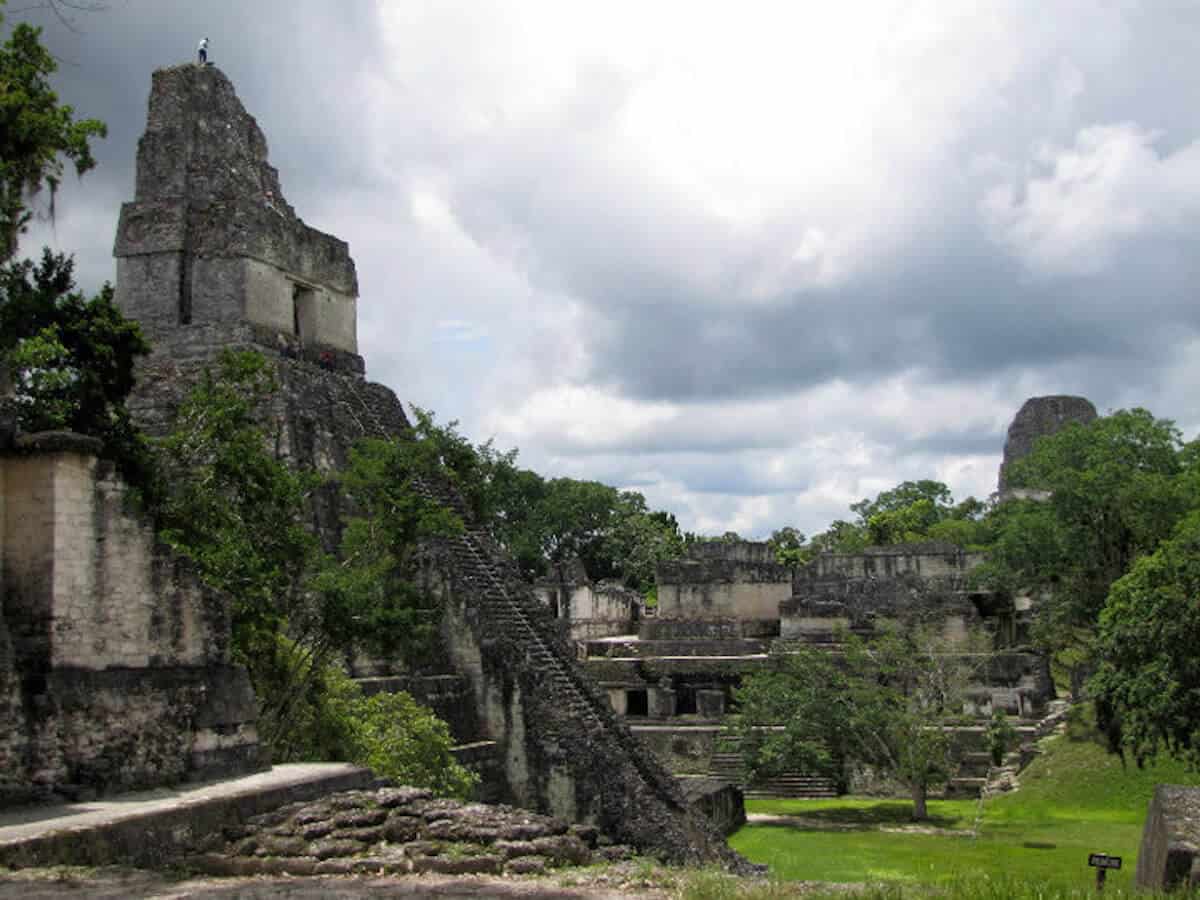
Tikal is such a wild and remarkable sight that George Lucas actually cast it as a planet in the original Star Wars . It was given UNESCO World Heritage Site status shortly thereafter (in 1979), and remains amongst the most visited Mayan sites.
Archaeologists believe that Tikal was one of the great cities of the eighth century, housing over 100,000 people. But it was largely abandoned by the middle of the ninth century.
Tikal has several canopy-piercing pyramids with a myriad of trails connecting them. In between the site’s estimated 3000 structures, great swaths of jungle teem with wildlife. Along the way, visitors can expect to spot Howler Monkeys, Pisote (a member of the raccoon family), Tarantulas, and Wild Turkeys.
There are a couple of towering buildings that visitors can climb at Tikal. And, for those willing to pay for a guide (which is recommended), there are lots of secret spots to discover and an elaborate water harvesting system that is easy to miss.
Where to Stay near Tikal
READ MORE: The Chicken Bus, Guatemala’s Unusual Transport
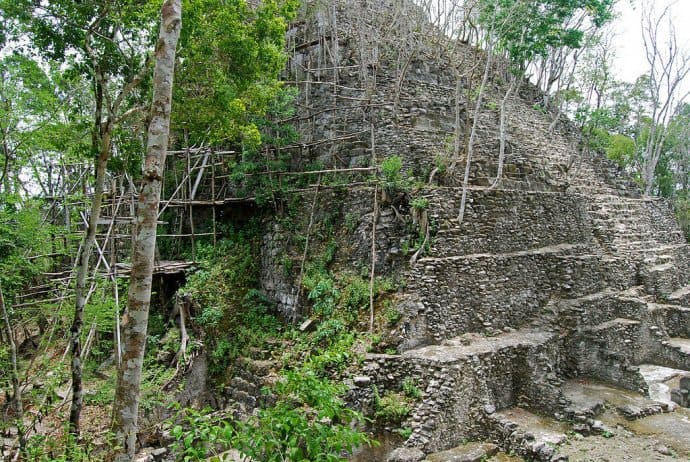
At the moment, I’d say El Mirador (known as “ the Lost City of the Maya “) is arguably the best Mayan site for those with a thirst for adventure to visit.
Once home to an estimated 200,000 people, it’s one of the oldest and largest ancient Mayan ruins. And, despite being discovered back in 1926, it still isn’t easily accessed.
Now clad in jungle, El Mirador was founded in the 6th century BC, rose to glory about 300 years later, and was dearly departed by 150 AD. The ancient ruins include hundreds (if not thousands) of buildings, including the largest known structure built by the Maya, the Dante pyramid complex.
Even El Tigre, another pyramid in the site, is several times bigger than Tikal’s largest. And yet no major excavation effort has ever been attempted at El Mirador. So it’s a great place to get a grasp of how wild and untamed these sites look when they’re first discovered.
It takes a hot, insect-laden 5-day hike to visit the great city. And most of what’s there is still buried in the jungle. But man, what an experience!
Where to Stay near El Mirador
READ MORE: 40 Things You Should Know Before Traveling to Guatemala
MAYAN RUINS IN HONDURAS
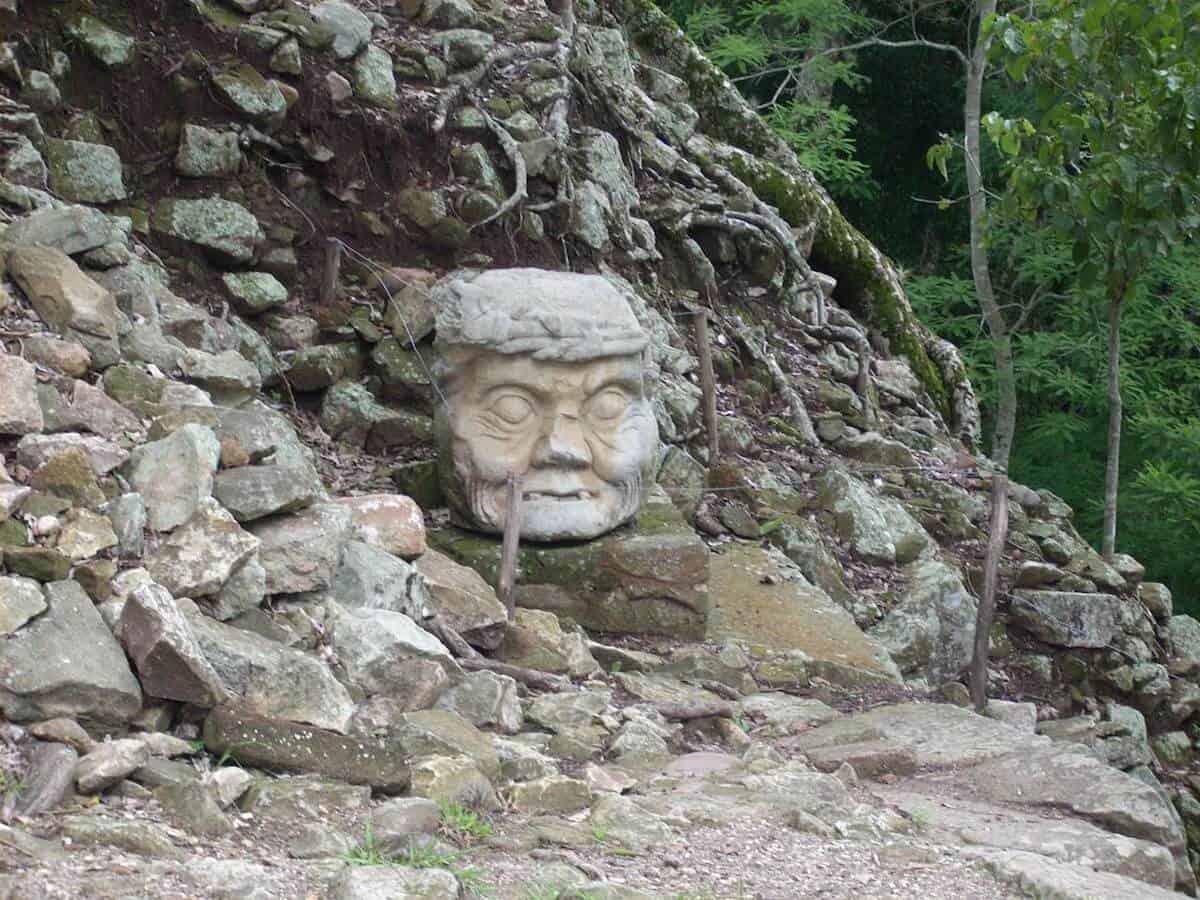
Copán
The earliest evidence of human habitation in the Copán Valley of Honduras dates back to 1500 BC. But the Maya are believed to have appeared there just this side of AD, with the arrival of Yax Kuk Mo, a leader from Tikal.
Copán thrived during the Classical period of the Mayan civilization, which lasted from 600-900 AD. It’s now a protected UNESCO World Heritage Site .
Copan Ruinas lies just across the border from Guatemala. It has large, open plazas, as well as a number of altars and monoliths. It is also home to the world’s biggest archeological cut , revealing several layers of floor beneath the Great Plaza.
Like many Mayan ruins, this site centers around a main complex, with many other smaller developments around it. The central complex has five major plazas, including the Hieroglyphic Stairway Plaza, which has the longest known Mayan inscription (consisting of over 1800 glyphs).
Where to Stay near Copán
READ MORE: Macaw Mountain, Honduras: The Park of Living Jewels
MAYAN RUINS IN MEXICO
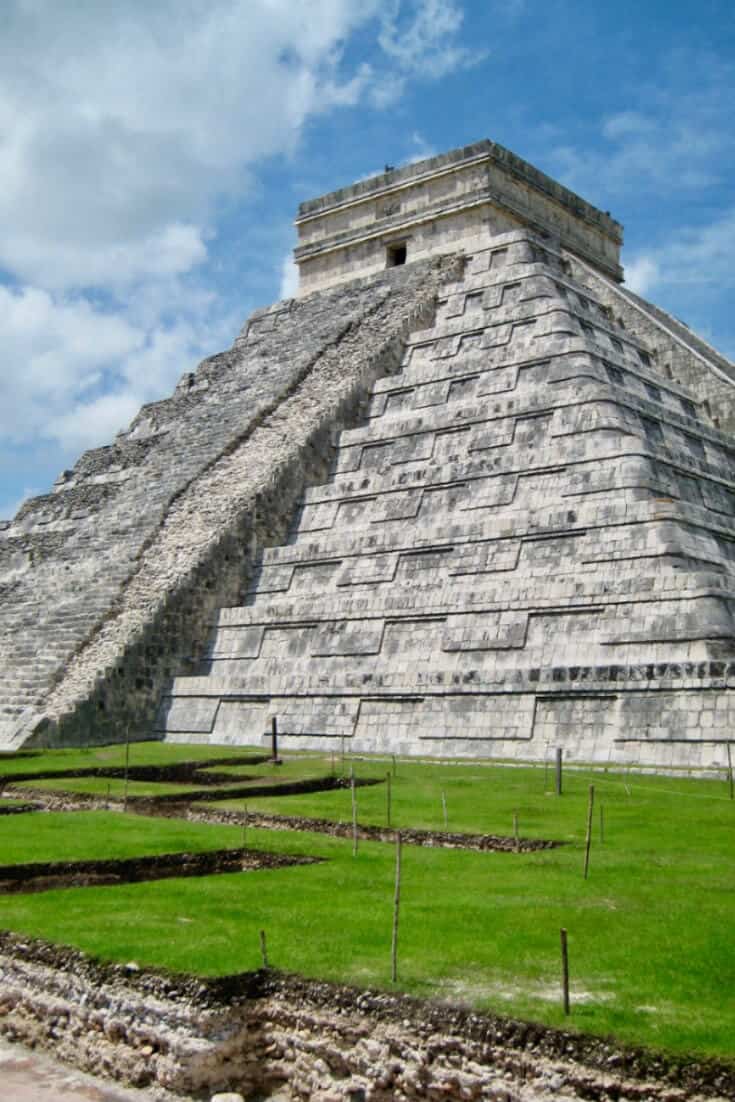
Chichen Itza
Chichen Itza’s El Castillo (a.k.a. the Temple of Kukulkan) is probably the most recognizable of all the Mayan ruins. It doesn’t hurt that this sacred historic site is located in the Yucatan Peninsula, just a couple of hours drive from Cancun.
The ancient city functioned as an important locale and urban powerhouse for over 400 years (from 750 to 1200 AD). As a tourist attractions today, Chichen Itza is a fun collection of mysterious designs and dazzling feats.
There are numerous references to astronomy and the Mayan calendar hidden within the different structures. It also has the largest ball court in the Americas – a facility for a high-stakes basketball/soccer type game. A sacrificial death was the losers’ honorable fate.
When visiting Chichen Itza, going early in the day will make for a much more intimate experience. Now considered one of the New Seven Wonders of the World, the site gets very busy and bustling by midday. Visiting during one of the equinoxes promises an amazing shadow serpent that displays just what talented designers the Ancient Maya were.
Where to Stay near Chichen Itza
READ MORE: Swimming with Whale Sharks in Cancun
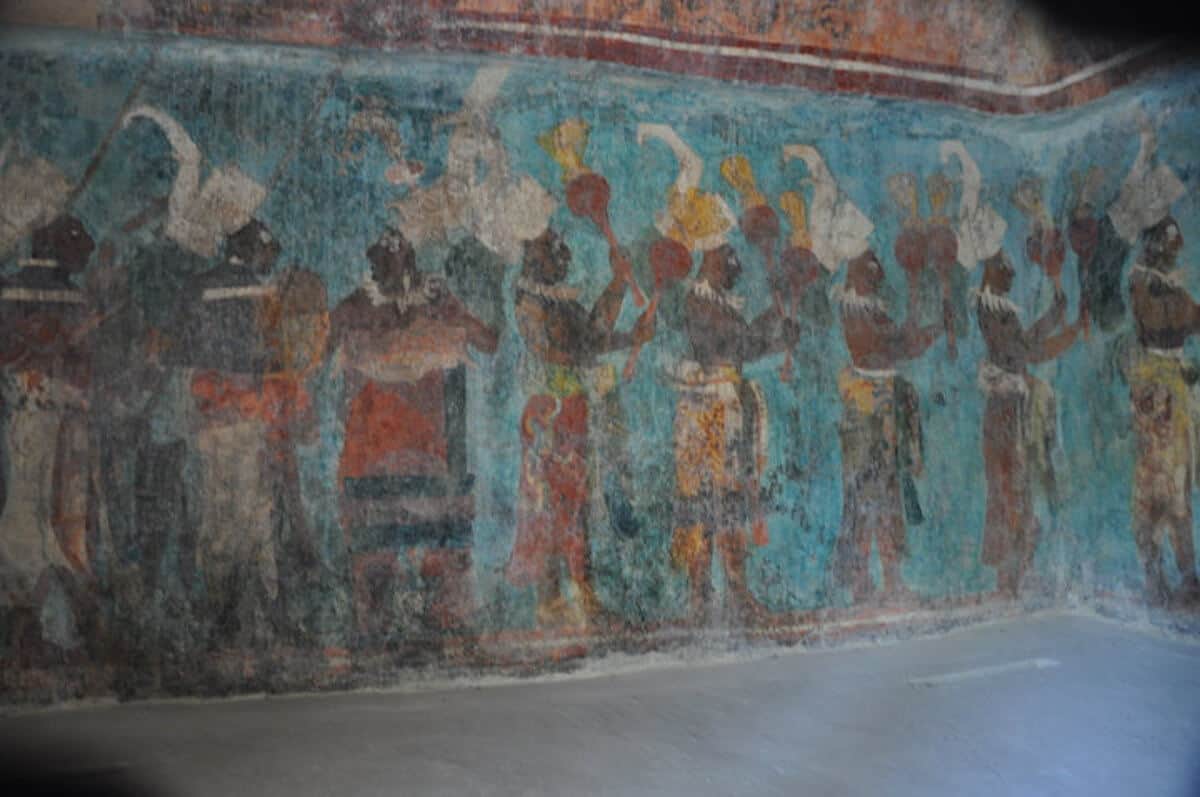
In Chiapas (the same state as Palenque), along the Lacanha River (for which Palenque was originally named), Bonampak is a relatively small Mayan site by comparison.
It dates back to the Early Classic period, with the bulk of its construction not happening until the 8 th century. Rather than aweing people with huge temples and pyramids, this site is most notable for its magnificent murals .
Bonampak’s famous murals capture scenes of war, ceremony, and royal life. Covering the walls of three rooms, they offer a very unique look at the skilled fresco-style artwork of the Maya, as well as glimpses into the lifestyles of the ruling class.
The paintings are highly regarded for their vivid colors, which is something rarely seen at other Mayan sites.
Where to Stay near Bonampak
READ MORE: Caribbean & Latin American Art History
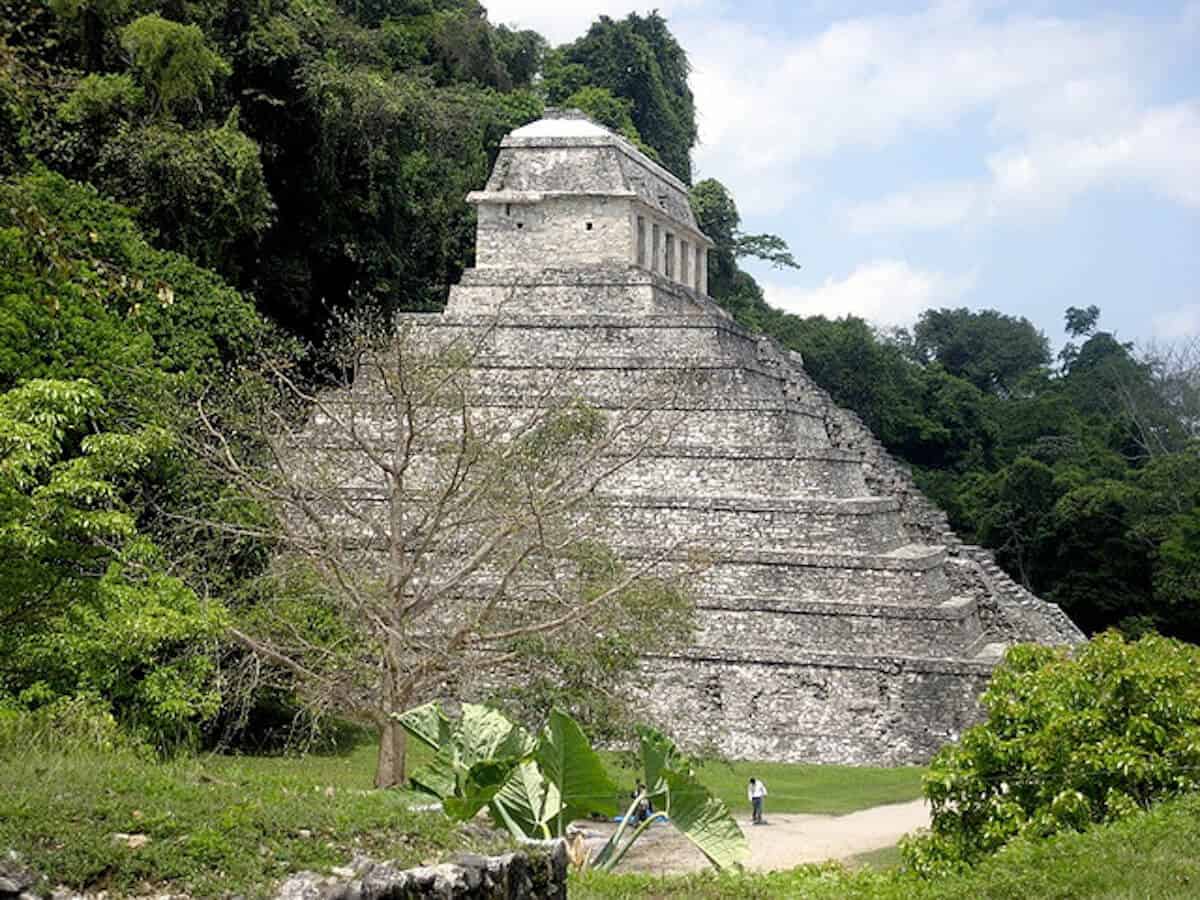
Palenque is perhaps best thought of as Mexico’s version of Tikal. The Mayan ruins are set deep in a jungle that is believed to have been settled as far back as 500 BC.
The city, however, was at the top of its game during the 7th century, when it was under the rule of “Pakal the Great.” Imagine him as the New World equivalent to Egypt’s King Tut.
Thanks to of an abundance of soft limestone in the area, Palenque is notable for its intricately carved reliefs. Its former designation, Lakamha , means “big water.” This name was most likely in recognition of the beautiful collection of waterfalls in the area and, obviously, the Lakamha River.
Palenque has three temples for three different gods– an aquatic god , a lightning deity, and a sun god. Two of the temples, the Temple of the Cross and the Temple of the Foliated Cross, have crosses that resemble those in Christianity. But they are, in fact, completely unrelated Mayan symbols.
Where to Stay near Palenque
READ MORE: Jason DeCaires Taylor’s Cancun Underwater Museum

Tulum was one of the last big Mayan cities to be built, sometimes in the late 1200s. It’s located on the Caribbean coast, less than 100 miles south of Cancun.
Unsurprisingly, Tulum acted as a seaport for trade (mostly turquoise and jade). Consequently, it is one of the few Mayan sites that is surrounded by a protective wall.
There are many well-preserved structures in Tulum, but its show-stopping feature is the location. The Caribbean backdrop and white sand beaches merge atop a limestone cliff dressed with remarkable Mayan temples. This is a unique site because it is the only one right on the coast, with its own beach.
Other than the sand and surf, Tulum is special because it is so well-preserved and part of the post-Classic period of Mayan history. It’s also a great place for spotting large, free-roaming, camera-friendly Iguanas.
Where to Stay near Tulum
READ MORE: 25 Epic Things to Do in Cancun (For Nature Lovers)
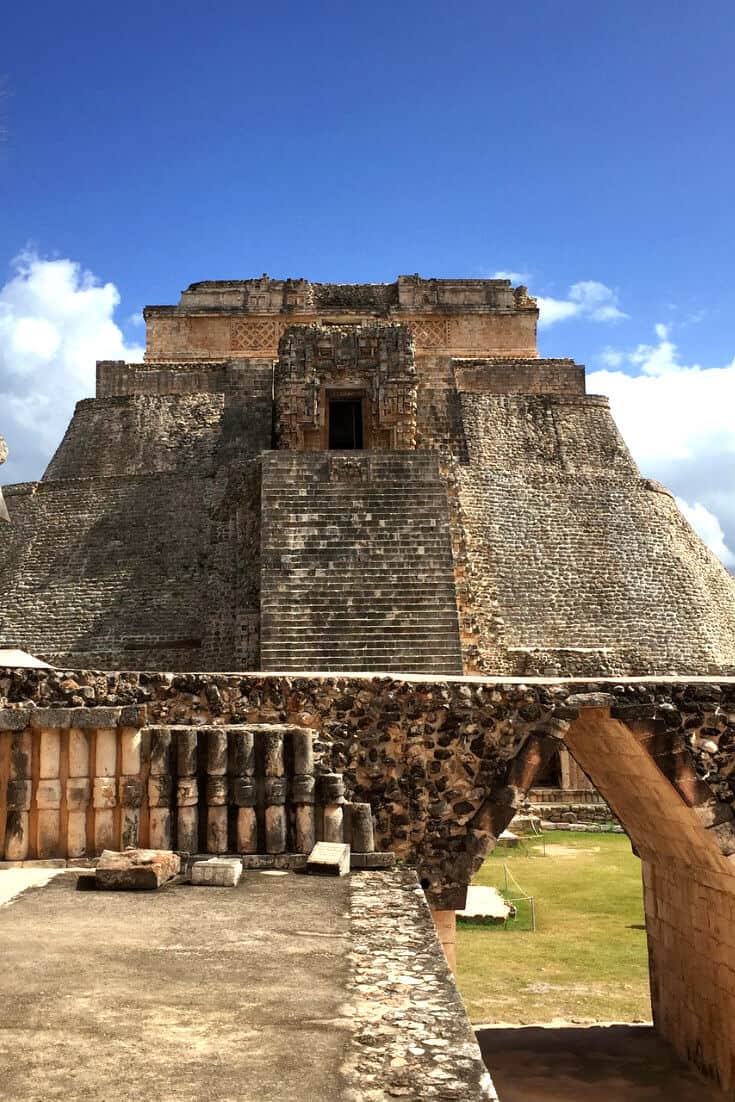
One of many Mayan ruins to be honored with UNESCO World Heritage protection, Uxmal was once a huge population center on the Yucatan Peninsula. It reached its height between 600 and 900 AD, after which nearby Mayan sites took the lead.
The site’s name means “thrice built,” a reference to its largest structure– The Pyramid of the Magician– which was put together in stages.
Uxmal was intended to honor Chac, the Mayan god of rain. Otherwise, it is unique in the Yucatan because it does not have a cenote .
Uxmal covers over 150 acres and includes The Palace of the Governor, a building longer than a football field with over 100 stone masks of Chac. It also has Mayan pyramids, which are always breathtaking to see.
Where to Stay near Uxmal
READ MORE: 10 Latin American Ecotourism Adventures
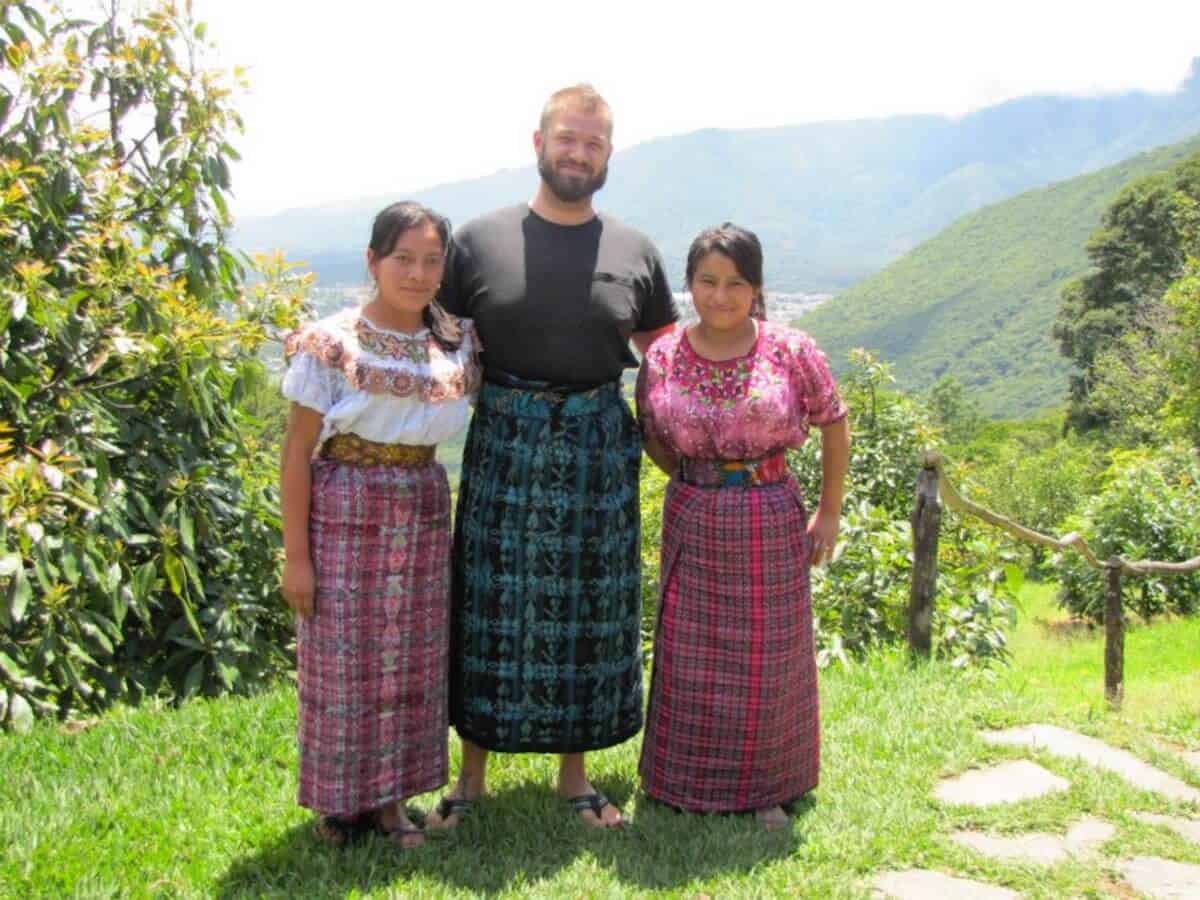
THE MAYA OF MODERN TIMES
Despite the mysterious collapse of their empire, there seems to be no end to the ancient relics and influence the Maya left behind. And, as previously discussed above, there are still so many ruins waiting to be uncovered. But let us be careful not to forget that the Maya are still around, many of them working to preserve their history and cultural traditions.
A visit to any of these awesome archaeological sites will no doubt put adventurers in the midst of a modern-day Maya civilization. There are village markets with world-renowned textiles. There are beautiful cacao farms, upstart coffee cooperatives, and shamanistic rituals. There are traditional dishes and clothing still being worn today.
More than anything, the Maya—like their ancient architecture, sculptures, and scripts—seem to have a culture of resilience . They survived the devastating collapse of all their major cities. They endured depopulation brought on by diseases introduced by the Spanish. They overcame genocidal governments in the 1900s. And still, a century later, they press on.
For more interesting info on the modern Mayan culture, there are many modern examples to explore. In San Cristobal de Las Casas, the non-violent Zapatista movement has been fighting for the rights of indigenous Maya for decades now.
They have created jaw-dropping works of art. In 1992, Rigaberta Menchu , author of I, Rigoberta Menchu: An Indian Woman in Guatemala and Crossing Borders , won the Nobel Peace Prize and is a UNESCO Goodwill Ambassador.
READ MORE: Best Coffee in the World ( A Gourmet’s Guide)
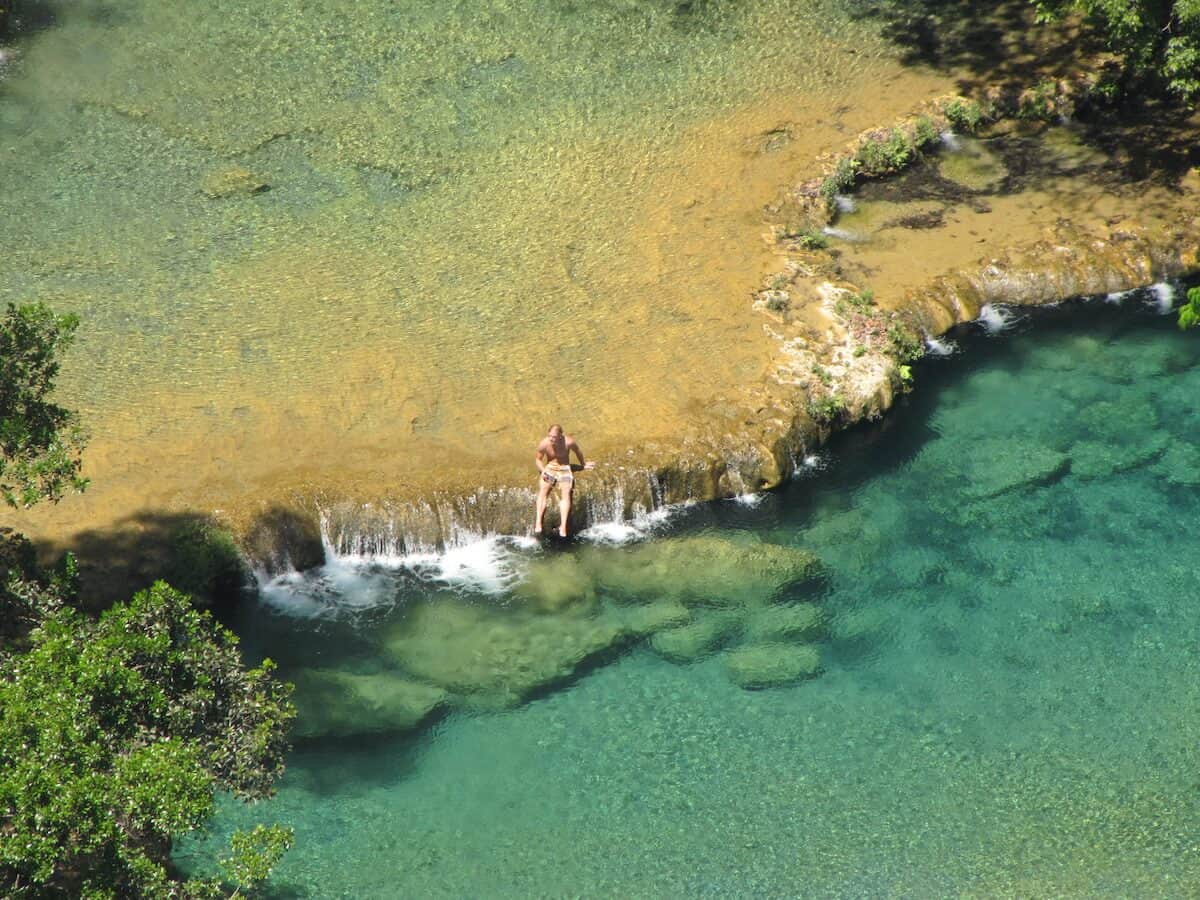
MORE AMAZING MAYAN SITES
The above-mentioned sites are far from the only ones of note. We limited our best-of list to 10 simply because it’s a nice, round number, and covering them all would be nearly impossible. However, for the gung-ho explorer who just can’t get enough of Mayan culture , here’s an ever-so-brief take on some other very noteworthy Mayan sites for visitors.
Calukmal is in the Campeche region of Mexico and involves a lengthy detour to reach. But the drive has mesmerizing scenery, and the location is in a large biosphere reserve. There are lots of artifacts simply strewn about the site, and lots of wildlife roaming through it.
Piedras Negras is located along the banks of the Usumacinta River, which forms the border between Mexico and Guatemala. “Piedras Negras” translates to “black rocks,” and this site is beloved for its fine sculptures. The site is remote and largely blanketed in jungle.
Semuc Champey is not actually a ruin, but it is a famous Mayan site located in Guatemala. It is known to be sacred water and consists of paradisiacal pools that cascade through the jungle. Here the river has carved away limestone to create interesting caves and rock formations.
Quirigua Archeological Park , a UNESCO World Heritage Site located in the Izabal region of Guatemala, contains intricately carved stelae, altars, and statues. Great measures have been taken to protect the artifacts on-site for further study.
Actun Tunichil Muknal , the most popular cave in Belize, is an experience for the fit and adventurous. Once a Mayan burial site, the cave is full of ceramics, pottery, and other ceremonial objects. Its famous skeleton, “The Crystal Maiden,” is from of a 20-year old girl whose bones have been cemented into the floor by natural processes. Some chambers require you to take off your shoes so as to not damage the artifacts.
Cobá, located two hours southwest of Cancun, is estimated to have been home to 50,000 people by the 7 th Century. The ancient city is expansive enough to make renting bikes a good idea, and archaeologists estimate 80% of it remains to be excavated. Highlights include two pok ta pok ball courts and several pyramids, the most impressive of which– Ixmoja– is the tallest in the Yucatan Peninsula at 138 feet. –by Jonathan Engels
About the Author
The financially unfortunate combination of travel enthusiast, freelance writer, and vegan gardener, Jonathon Engels whittled and whistled himself into a life that gives him cause to continually scribble about it. He has lived as an expat for over a decade, worked in nearly a dozen countries, and visited dozens of others in the meantime, subjecting the planet to a fiery mix of permaculture, music, and plant-based cooking. More of his work can be found at Jonathon Engels: A Life About.
As Seen On…

Join the 300,000+ people who follow Green Global Travel’s Blog and Social Media

Captivating Mayan Ruins
Map & expenses
Similar trips
Embark on a two-week adventure exploring some of Mexico’s most captivating Mayan ruins, going through diverse cultures and contrasting landscapes in a land full of history and beauty. From the beautiful Cancun Caribbean coast to the stunning colonial city of Merida, the fascinating blend of heavenly beaches, impressive ruins of ancient Mayan civilization, the turquoise blue water cenotes, and all the astounding nature surrounding them is overwhelming.
Edzna Ruins
Archaeological site
Calakmul Mayan City
Natural and archaeological reserve
Mayan ruins in the ‘Puuc Route’
Cenotes Cuzuma
Water reservoirs on a remote jungle
Enjoy the well-known friendliness of the Mexican residents who preserve their traditions and culture. Explore dazzling off-the-beaten-path destinations encircled by ancient Mayan temples and sacred cenotes to have a closer glimpse of the Mayan culture and history. From the unique ruins throughout Campeche to the unparalleled views of beautiful Tulum, this trip promises unforgettable experiences throughout the stunning Mayan Riviera and beyond.
To start the travel, there will be someone at the airport waiting to welcome you and drive you to your hotel in Cancun.
One of the most fascinating Mayan ruins in Mexico is without any doubt Chichen Itza. Known worldwide for the play of light and shadow that looks like a descending serpent over the steps of the pyramid known as “The Castle”. Today you will explore this fascinating Mayan city, now UNESCO World Heritage Site.
The sensation you feel when discovering the genius of that prehispanic civilization is certainly indescribable. Another impressive effect in “The Castle” is the sound that is reflected in the upper part when several tourists clap simultaneously at the bottom. Later, we will drive to Merida.
Enjoy a walking tour to the beautiful old city center surrounded by flower gardens, fountains, palm trees, and of course its impressive architecture. You will also visit the huge Mayan World Museum, one of the most important and ultra-modern in Mexico. Holding more than 1,100 relics, this visit promises an impressive display of the past and present of the Mayan culture.
With a particular style of architecture, the ancient structures, temples, housing, and buildings built on this route are connected by an ancient Mayan pathway. Today we will visit the Mayan ruins of Kabah, Sayil, and Labna, these sites were constructed over a thousand years ago in the hilly area of Yucatan, indeed the word “Puuc” comes from the Mayan for hills and therefore its name.
We will first visit the archaeological site of Xlapak, one of the greatest jewels of the Puuc architectural style. In the Mayan language, its name means Old walls and The Palace. It has a richly decorated main structure.
After the archaeological visit, we will go to the Natural Reserve Anillo de Cenotes (Ring of the Cenotes). This wonder is a semicircle-shaped alignment related to the fall of the meteorite more than 50 million years ago. Here we will visit the Homun and Cuzuma communities, situated in the center of the ring; the communities are dedicated to showing and preserving these natural wonders. The area offers the unparalleled chance of exploring a huge variety of cenotes and caves, each one with a beauty that impacts.
You can find here a Cenote for every taste, from those with a unique and calm beauty of transparent green waters you will not want to ever leave to those that offer the most thrilling experiences such as pulling a liana or descending more than seven meters for a dive. This natural paradise will surely not leave you indifferent.
We will leave Merida today and head to one of the most beautiful Pre-Columbian sites in Mexico, Uxmal, an astonishing grand finale to the journey down the Puuc Route Ruins. Explore this impressive complex with several religious and political palaces, housing structures, ball courts, and its most outstanding building, 35 meters tall and a notable oval base, is the highest in the complex and is known as: “The Pyramid of the Magician”, local legends say that it bears that name because it was built in a single night.
After this impressive visit, we will reach the walled city of Campeche where we will do a walking tour to enjoy its colorful streets that mix with baroque temples and sober bastions. Its colonial houses, museums, forts, and traditional neighborhoods will certainly rejoice in your sight.
Today you will visit the off-the-beaten-path archaeological site of Edzna, its imposing temple, the Pyramid of the Five Floors is 39 meters high. This ancient Mayan city is fantastically well preserved therefore it is easy to imagine what this city would be like at its peak, full of color, crowds, and movement. More than 200 structures have been located to date, such as building and housing complexes, bases, platforms, ball games, roads, etc. In addition to the monumental constructions, the ancient inhabitants of this city also created an ingenious hydraulic system.
Today we will go south to Xpujil town, located in the middle of the jungle. It is ideal to enjoy the exuberant local flora and fauna. Along the way, we will visit three nearby sites that stand out for their rare Mayan palatial architecture.
The first of them is Becan, in the Mayan language its name means “Cannon formed by water”. It is an ancient city characterized by being surrounded by a moat, unique in the Mayan area. On the other hand, Structure VIII has as a peculiarity its access through a tunnel that connects two of the main squares of this city.
The second site, Chicanna which means “The Mouth of the Serpent” due to the elegance and decorative richness of its buildings, has been considered by some researchers as the elitist center of the region. The third and last that we will visit today is Xpujil, its name means “Cat’s Tail” in allusion to a herbaceous plant that looks like it. It is composed of approximately 17 architectural groups and numerous platforms of a residential nature scattered over an area of approximately 5 square kilometers.
We will visit today one of the most fascinating Mayan ruins in this area, Calakmul, its name means “Between two adjacent stones”. This secret gem of the Mayan archeology remained hidden for more than 1,000 years and is a place where you can feel like a true explorer and be overwhelmed by the power of man and the greatness of nature.
With structures up to 45 meters high, more than one hundred commemorative stelae and several tombs adorned with numerous vessels and elements such as masks, jadeite necklaces, and marine snails, among others. The extraordinary beauty and complexity of this Mayan city have caused it to be a Mixed World Heritage Site by UNESCO. Due to its great natural and wild wealth is also a Biosphere Reserve that is home to about 100 mammals including the puna or the iconic jaguar.
Today you will be transferred to the magical town of Tulum, with beautiful white sand beaches, lagoons, cenotes, and caverns that impress with their beauty and natural splendor. Upon arrival you could visit Paradise Beach to enjoy a breathtaking sunset, its calm and beautiful waters are perfect for enjoying a drink on the beach while admiring the ruins above.
After breakfast you will start visiting the amazing walled city of Tulum, located on a cliff overlooking the clear turquoise waters of the Caribbean Sea, the spectacular location of this site is worth a visit. Later, we will visit the Cenotes in Dos Ojos.
From the top of the tallest ancient pyramid of Coba, the jungle canopy looks like a living green colossal carpet. Archaeologists consider the Mayan ruins of Coba to be an unbelievably decisive city for the Maya civilization. Nonetheless, due to its faraway position, this gigantic site is not as trendy with travelers as other ruins. But there are abounding reasons to explore the city of white roads.
Coba does not have as many visitors as other destinations, so you can climb some of the temples for a contrasting and uncommon viewpoint. The lifted stone roadways connect clusters of residential sections to the main plaza and small lakes used as an adjacent water supply. There are three very cool ways to explore the site forward on these roads. You will be able to hike, hire a bici taxi, or the most favorite, rent a bicycle!
One of the most beloved reasons to see Coba is that it is not as uncovered as other sites in the Mayan world, so you will feel like you are hiking through a jungle, with many great structures still covered by the jungle canopy. Here is the tallest pyramid in the north of the peninsula at 42 meters high, some interesting stelae where important events of the upper class of society were sculpted are preserved on the esplanade in front of it.
Our last visit of the day will be to the Mayan underworld, with a refreshing stop at the Cenote Choo-Ha, a water-filled natural sinkhole whose name means Dripping Water. A spacious cavern where the shallow and crystalline jade-colored waters surround an earthy island, the whole cavern is filled by stalactites and stalagmites that are constantly leaking, hence its name. After this adequate stop where you can enjoy a refreshing swim, you will be taken back to your hotel.
You will have a free day to enjoy the Mexican Caribbean, beautiful white sand beaches and palm trees, turquoise blue sea, spectacular lagoons, and underwater caverns. This unique region, rich in Mayan culture and history, is also rich in diversity, gastronomy, and natural resources.
This journey through some of the most fascinating Mayan ruins in Mexico has come to an end and today a private transfer will take you to the Cancun International Airport for your flight back home. But if you are craving for adventure has not stopped yet, you can contact us and we will help you extend the trip.
map, expenses & price
Expenses included: -All private transportation. -Thirteen nights of hotel accommodations. -Professional certified guides. -All park entrance fees. -Tours and excursions as listed. -Daily breakfast.

8 days & 7 nights

17 days & 16 nights

12 days & 11 nights
Travel Advisory
El Salvador
© MAYAN GATEWAY | TERMS OF SERVICE | PRIVACY
Speed optimized by Speedable
13 of Mexico’s Absolute Best Mayan Ruins
05/23/2021 by Emily Becker 3 Comments
This post was written by Emily Becker, BMTM’s resident Mexico travel expert.
The ancient Mayan Empire extended throughout the present-day Yucatán Peninsula, Chiapas, and into parts of Guatemala, Honduras, and Belize. There is a lot of mystery around and speculation about what happened to some of these cities, as many of them had been abandoned even prior to the arrival of the Spanish in the 16th century. Some stories say the Mayas received messages from the heavens warning them about the colonizers; some believe that the residents died from disease and famine, among other things.
There is a common misconception that the Mayan people ceased to exist after the Spanish came, but the reality is quite the contrary. There are still Mayan communities tucked into the jungle all throughout the Yucatán Peninsula and parts of Chiapas. They continue to speak different dialects of Mayan and practice the same traditions and rituals from centuries ago. I’ve also taken quite a few Mayan classes — it’s a complex language that fascinates me.
The Mayan people are responsible for much of what is considered to be Mexican culture in these parts of the country. The cuisine is heavily influenced by Mayan recipes, certain phrases in Spanish have been adapted from Mayan words, and even the version of Catholicism practiced here has taken on certain aspects of Mayan beliefs and customs.
Want to learn more? A great way to start diving into the mundo maya is to take in some of the best archaeological sites. Having lived in the Zona Maya for a short time in college and then again for about a year, I have visited my fair share of ancient Mayan ruins, which are always a humble reminder of how incredible these civilizations were and how connected they were with nature and the cosmos.
Here are my favorites, by state:
Table of Contents
Quintana Roo
The state of Quintana Roo (also known as the Riviera Maya) is full of incredible archaeological sites. While most of its tourism comes from beach resorts in and near Cancún, Playa del Carmen, and Tulum, there is so much more to see there.
Being a coastal state, the history of the ruins in Quintana Roo differs from other places where the Mayas built their cities. The Mayas of Quintana Roo were and continue to be fishers and expert marine navigators, which impacted how they built the structures that now lie in ruin throughout the state. Here are a few of the best ruins to check out there:
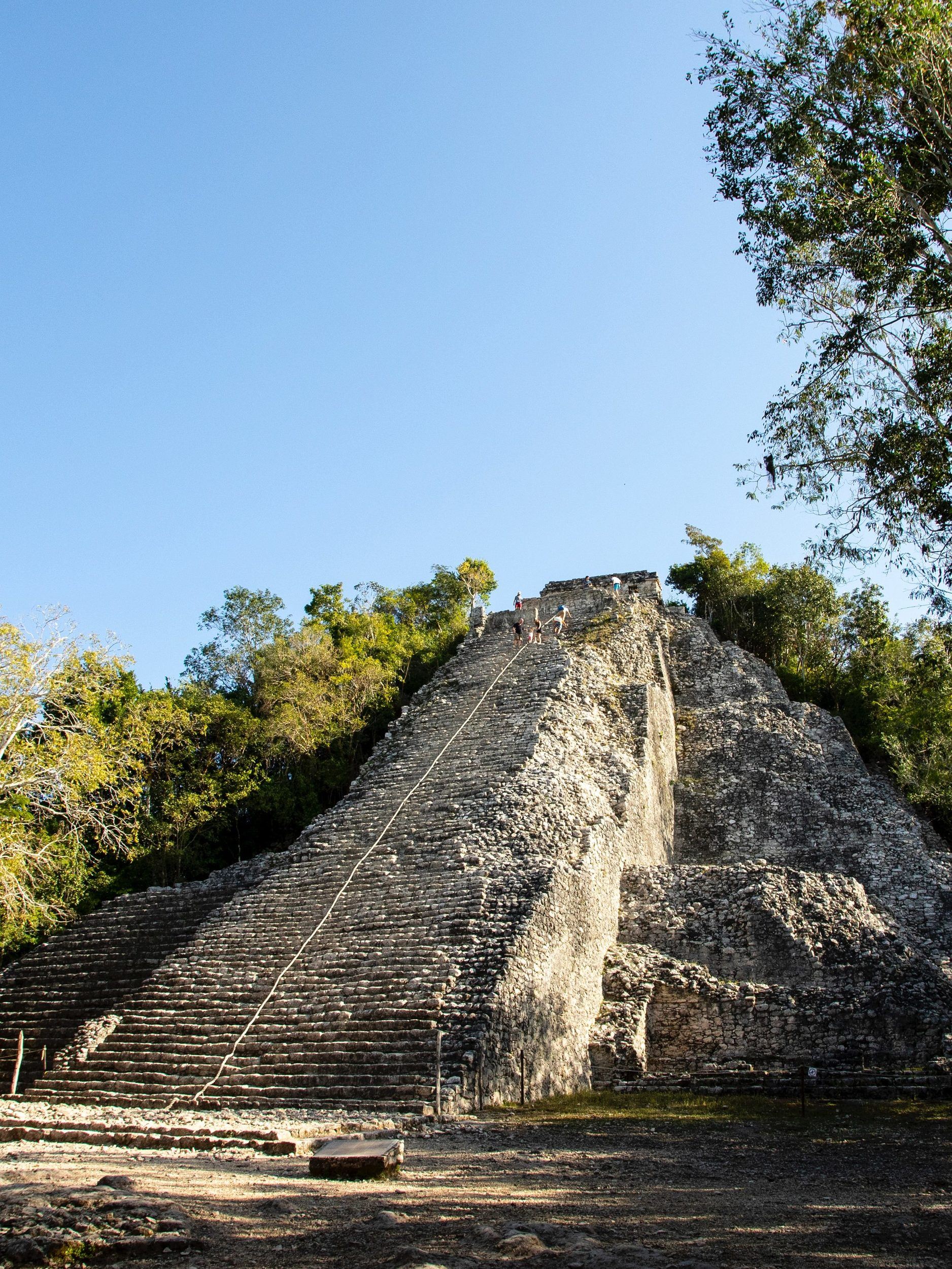
These ruins are between Lago Cobá and Lago Macanxoc in the jungle. This is unique, because it was once the most populated Mayan city, with over 50,000 people living there at its peak.
The site’s largest pyramid Nohoch Mul used to be accessible for climbing. I reached the top back in 2017, and the view is impressive. Due to COVID-19 restrictions, however, the site does not currently allow visitors to climb it. Fingers crossed they open it again someday!
Besides the Nohoch Mul Pyramid, there are plenty of other treasures around Cobá. There is an ancient Mayan ball court and a network of stone highways called the sacbe . One of these is 62 miles long and connects Cobá with the ancient city of Yaxuna.
Since the site is free on Sundays for Mexican residents, it’s best to avoid visiting on that day. To avoid crowds and scorching hot temperatures, visit in the early morning, right as the site opens up. Between 8am and 11am is the sweet spot.
- Cost: 80 pesos ($4 USD) entrance fee
- Hours: 8am to 5pm daily
- Transportation: There are ADO and Mayab buses that go to Cobá from Tulum for about 50 pesos ($2.50) each way. Make sure to check the schedule, as the trips are sparse throughout the day. There are also colectivos that run between Tulum and Cobá, which you can find outside the ADO station in Tulum. However, renting a car is the best option for visiting.
- Parking: There is a fee of 50 pesos ($2.50) per car.
- Getting around inside: You can rent a bike for the day for 50 pesos ($2.50) or a bike taxi for 70-125 pesos ($3.50–6.25), plus tip.
- Guides: Bilingual guides are available at the entrance for around 200 pesos ($10). You can haggle for both a guide and bike taxi for about that price as well.
- Tours: There is a tour that includes a visit to a cenote, along with a guide for the Cobá ruins. Book on GetYourGuide .
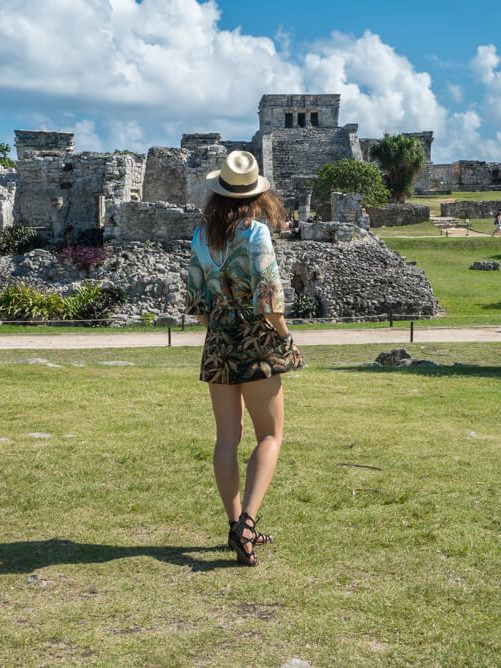
There are few places in the world where ancient ruins jut up from the coastline like they do in Tulum. This archaeological site is absolutely breathtaking. I know it’s one of the most popular places on the Riviera Maya, and some people might say it’s overrated, but think it’s genuinely one of the coolest things to see in the area.
The Tulum ruins, which have special spiritual and ceremonial significance in Mayan culture, are some of the most easily accessible in the region. There is also a staircase that leads down to a beach, which is a fun way to break up your visit.
It gets very hot in Tulum in the afternoon, which is why I recommend going to the ruins as early as possible, so you can spend the rest of your day floating in a cenote or at the beach. Like all other ruins in Quintana Roo, avoid going on a Sunday, when entry is free for Mexican residents, as that is the busiest time of the week.
- Cost: 80 pesos ($4) entrance fee
- Hours: 8am to 5pm daily; the ticket booth closes at 3pm
- Transportation: From anywhere in Tulum, you can either walk, ride a bike, or take a taxi to the Tulum Archaeological Zone. Another option is to take a colectivo from the centro, which costs just 20 pesos ($1). From Playa del Carmen, you can take an ADO bus to the Tulum ruins for just 50 pesos ($2.50).
- Parking: There is a fee of 180 pesos ($9) for the entire day.
- Getting around inside: While the ruins are quite spread out, you can easily walk through them.
- Guides: Hiring a guide for these ruins is quite expensive, at around 400-600 pesos ($20-30 USD). Consider a tour, which includes more than just the guide, to get more bang for your buck.
- Tours: Since going in the morning is the best way to see the ruins, check out this half-day Tulum tour , which begins early in the morning.
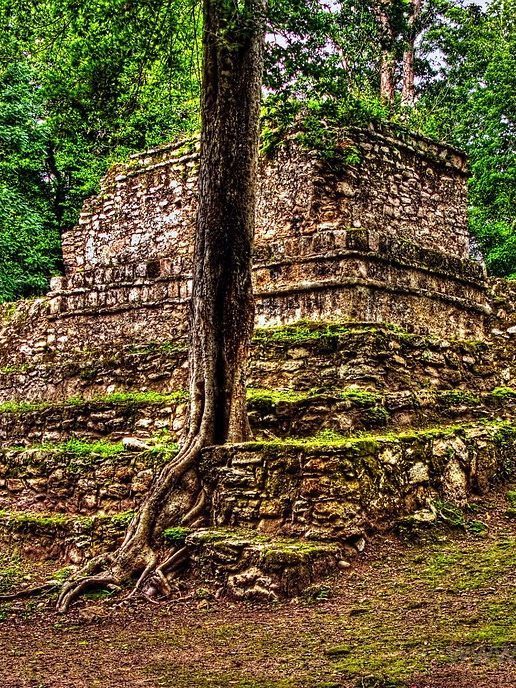
This small site is just off the highway about 15 minutes south of downtown Tulum. It’s one of the few ruins in the area where you can expect to see very few people at any given time, with the exception of Sundays, when the park is more crowded.
Muyil is a hidden gem that has the same level of incredible architecture as Tulum, but it’s more secluded and has a completely different environment. It borders the Sian Ka’an Biosphere, which is the area’s largest natural protected zone and is home to a plethora of native flora and fauna. You could spend an entire day exploring the grounds of Muyil and a bit of Sian Ka’an while you’re there.
There is a small hidden path behind the main castle of the ruins, which leads you to a wooden hut. There you can pay 50 pesos ($2.50) to enter the Sian Ka’an Biosphere. This path will take you to an observation deck where you can gaze out onto the lagoon behind the ruins and take in the jungle views.
I recommend you start your visit right when the site opens up at 9am in order to avoid the afternoon heat as much as possible. The area is quite buggy, so make sure you bring some eco-friendly bug repellent. While much of the site is within the jungle, if you decide to venture out to the lagoon, you’ll definitely want to make sure to have sunscreen ( reef safe , please!) because the midday sun is intense out there.
- Cost: 45 pesos ($2.25) entrance fee, plus 50 pesos ($2.50) to enter the Sian Ka’an Biosphere area
- Hours: 9am to 5pm daily; the ticket booth closes at 3pm
- Transportation: From Tulum, you can take a colectivo going toward Chetumal or Felipe Carrillo Puerto. Tell the driver you want to get off at Muyil. The entrance to the ruins is right off the highway. You can also very easily take a taxi from Tulum for around 200 pesos ($10).
- Parking: There is a free parking lot right at the entrance.
- Getting around inside: You can easily get around on foot at the archaeological zone itself, but if you go into Sian Ka’an, you might need to hire boat transportation to get to different parts of the biosphere.
- Guides: Finding a guide to Muyil is tricky. There isn’t a specific stand there where you can hire a guide, like there are at other more popular sites. Doing a tour is the best way to learn about Muyil.
- Tours: Take advantage of Muyil’s proximity to the Sian Ka’an Biosphere with this Birdwatching and Guided Walk Tour !
Many archaeologists consider Yucatán to be the heart of the Mayan civilization. There you’ll find some of the most well-preserved sites, likely because the state’s government has invested so much in them. Yucatán the state is not to be confused with the Yucatán Peninsula, which also contains the Mexican states of Campeche and Quintana Roo, plus parts of Belize and Guatemala. The state of Yucatán has its own cultural identity and history, which is waiting to be discovered at one of its many archaeological sites:
10. Chichén Itzá
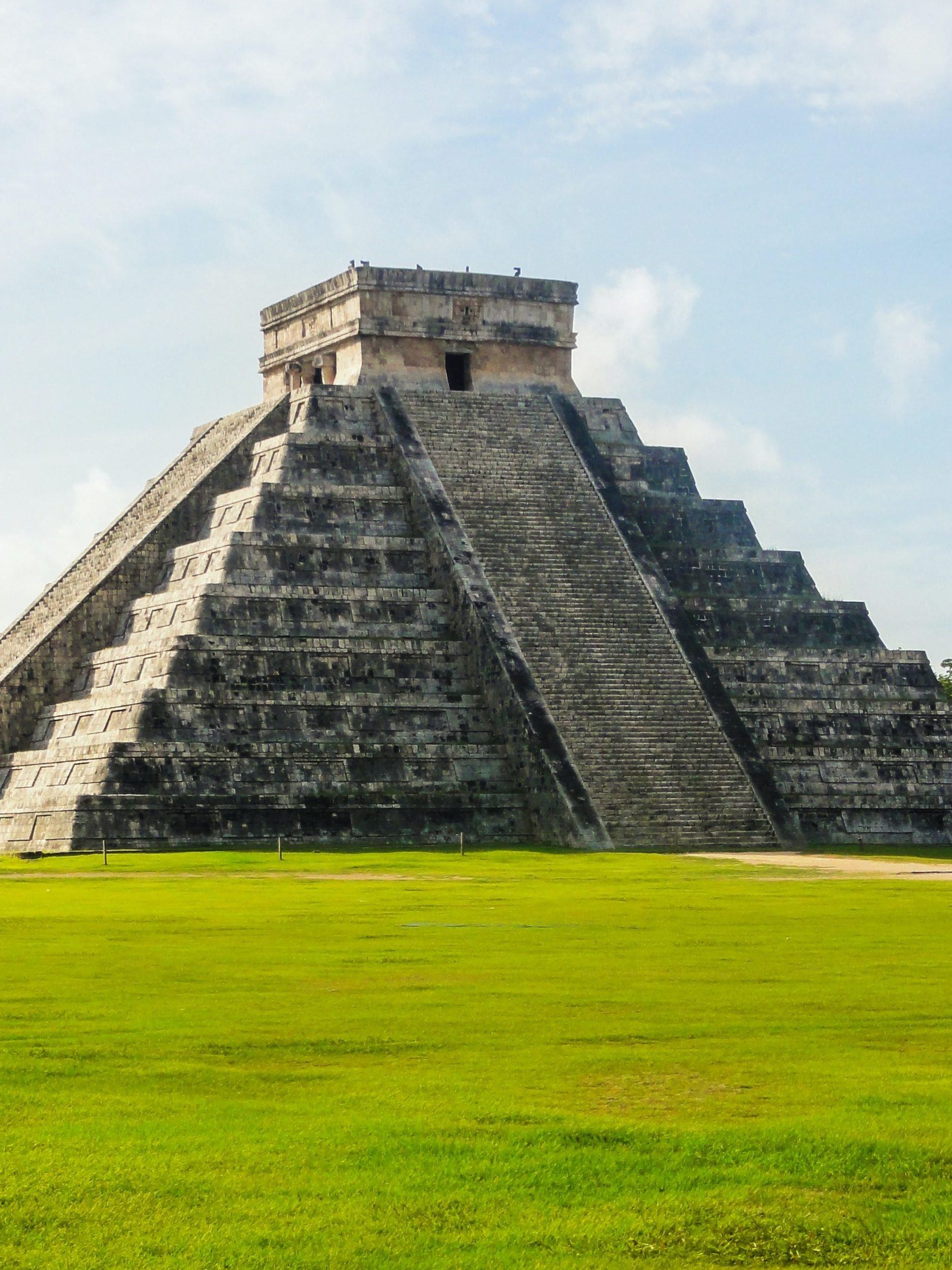
While Chichén Itzá is easily the most visited and most crowded archaeological site in the whole Mayan world, it’s a must-see. I know that going to a crowded place is a big turn-off for many people, but the history and importance of Chichén is too mind-blowing to pass up.
The site is full of places where sacred geometry was a critical part of the city’s construction. For example, the architects of the Kukulcán pyramid were so connected with earth’s rotation that they figured out how to position it to make shadows dance down the pyramid like a snake during the spring and autumn equinox .
To avoid the crowds as much as possible at Chichén, go on a weekday and get there 15 minutes before the site opens. That way, you’ll likely be toward the front of the line to buy tickets and you can get in right away. Avoid going on the weekends at all costs, as that is the busiest time. It only takes about 2 to 3 hours to see everything.
If you do happen to be in the area during the spring or autumn equinox, expect large crowds. The site hosts events to watch the lights and shadows, which are the most exciting events of the year. If you want to catch a glimpse of the shadow show, you might be able to see it up to two days before the actual equinox itself and avoid many of the crowds.
- Cost: 497 ($25) pesos for adults, free for children under 13. You will pay at two separate ticket windows.
- Hours: 8am to 5pm daily; the ticket booth closes at 4pm. For updates on special hours for holidays and events, check out the official website of Chichén Itzá .
- Transportation: Getting to Chichén Itzá is easiest from either Mérida, Valladolid, or Cancún by taking an ADO bus. Check out the ADO schedule and buy tickets at the closest station the day before.
- Parking: If you have rented a car , you can park at the entrance of the site for 80 pesos ($4).
- Getting around inside: The entire site is completely walkable.
- Guides: I 100% recommend getting a guide for Chichén Itzá in order to truly appreciate the site and learn about its significant history. You can hire an English-speaking guide at the site itself for about 600 pesos ($30).
- Tours: If you’re staying in Cancún or Riviera Maya, an all-inclusive tour with a stop in Valladolid is a great option. If you’re in Mérida, consider a full-day tour with lunch .
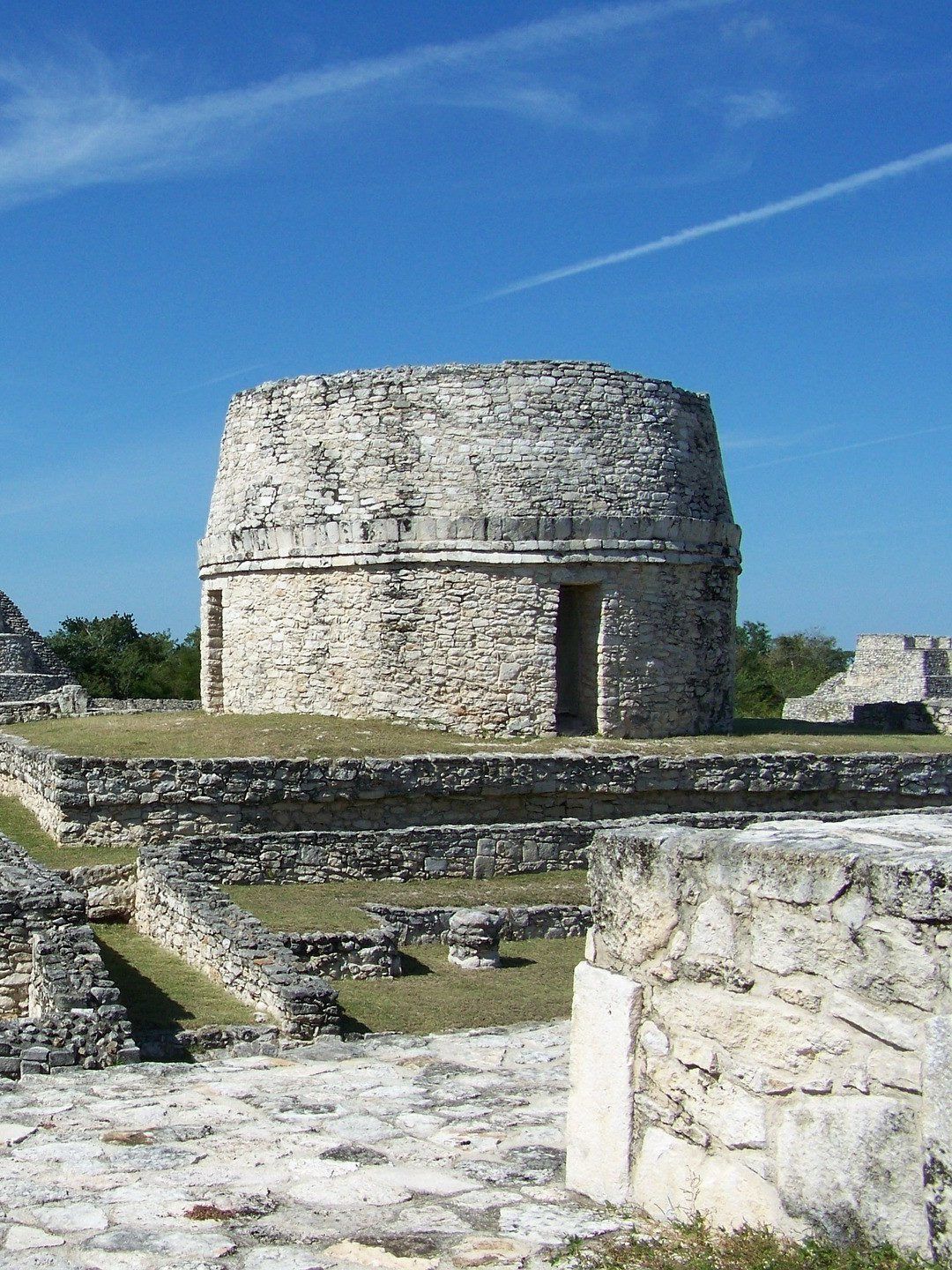
If Chichén Itzá is the mother of all Mayan ruins, Mayapán is the daughter. This site is small yet mighty and has many of the same features of Chichén but scaled down significantly. For example, Mayapán has a much smaller version of the famous Kukulkán pyramid.
Mayapán stands out from other more popular sites because of its murals. While other sites’ murals have heavily deteriorated, the ones at Mayapán’s Hall of the Frescoes have withstood the test of time. Another key feature of the site is the collection of beheaded warriors carved into the stucco on the side of one of the substructures next to the main pyramid.
Since Mayapán is much less crowded than other sites, you can visit at any time of day and any day of the week (except Sundays, when the site is free for Mexican residents and therefore more crowded) and find very few people. The heat of Yucatán is intense in the early afternoon, so aim to visit either in the morning or late afternoon around 3pm until the park closes at 5pm.
The small size of Mayapán means you could spend 1-2 hours exploring everything. In one hour you could easily roam around, see the sites, and take pictures. If you’re a die-hard archaeology fan that wants to read every placard, 2 hours is enough time.
- Cost: 45 pesos ($2.25)
- Hours: 8am to 5pm daily, even on holidays
- Transportation: The archaeological site is a few miles south of Telchaquillo, which is 25 miles south of Mérida. You can take an ADO bus from Mérida to Telchaquillo and then a taxi to the ruins. The trip is quite far if you’re staying in Cancún or anywhere else on the Riviera Maya, so it’s wise to stay the night in Mérida or Izamal.
- Parking: Free
- Guides: The only facilities on the premises are the bathrooms and ticket booth, so you won’t likely find guides there for hire. Your best bet for getting a fully guided experience is doing a tour. If not, you can read up on Mayapán’s history and significance beforehand to get a better idea of what there is to see.
- Tours: If you’re staying in Mérida, this tour of a small Maya community includes a full tour of Mayapán plus a breadmaking class!
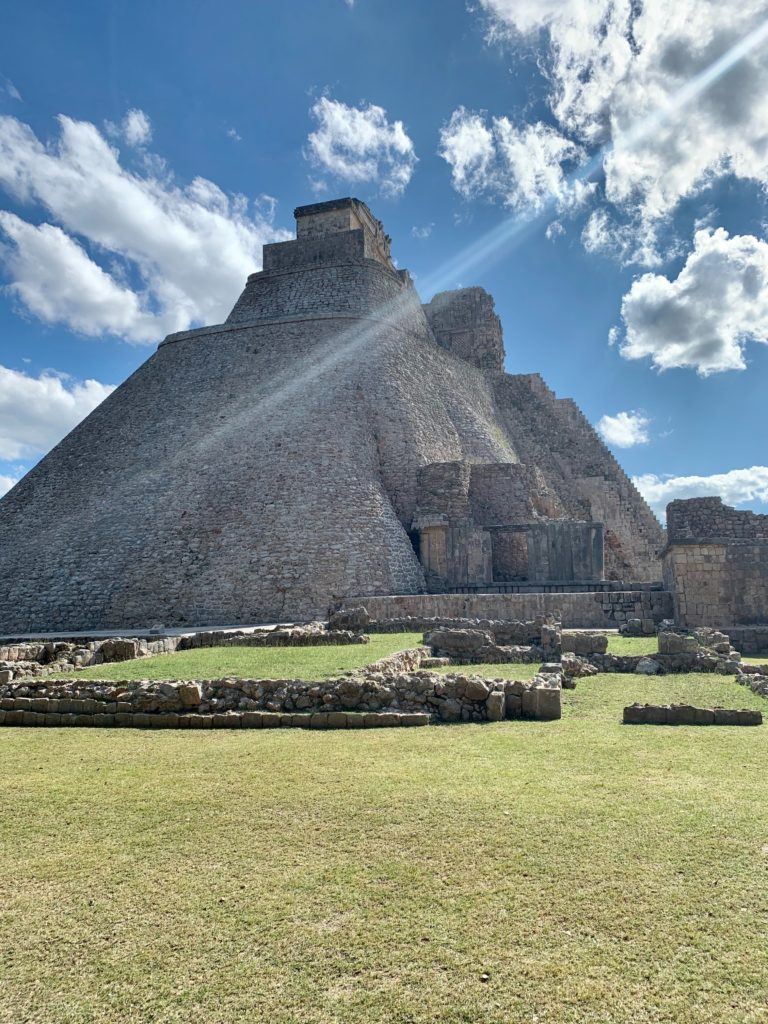
At one time, Uxmal and Chichén Itzá were the two most important cities in the Mayan Empire.
Uxmal was the first Mayan ruin that I ever visited, so it’s a bit sentimental for me. The sprawling site includes towering structures, detailed carvings, and the famous Yucatecan iguanas. I don’t know why, but seeing so many iguanas running around Uxmal really stuck with me.
The Pyramid of the Magician is a must-see. It’s the tallest building at Uxmal, with a height of almost 115 feet and rounded corners. Unfortunately, you cannot climb it, but you can climb to the top of the Great Pyramid to get an excellent view of the grounds. The Nunnery Quadrangle has the most intricate carvings in Uxmal and was fully restored recently.
While Uxmal doesn’t draw the same crowds as Chichén Itzá, it has been gaining popularity steadily and is definitely one of the most visited sites in the state. To avoid the crowds as much as possible, visit as early as you can. Just like Chichén, I suggest arriving a few minutes before the site opens. I know that’s early, but the midday sun in this area is intense in the dry season. In the wet season (May to October), rain is most frequent in the afternoons. Either way, a morning visit will yield nice weather and fewer visitors.
- Cost: 418 pesos ($20). You’ll pay at two separate ticket windows.
- Hours: 8am to 5pm daily (the ticket booth closes at 4pm), even on holidays
- Transportation: You can take an ADO bus from Mérida to Uxmal, which takes about 2 hours. From Cancún, Playa del Carmen, or Tulum, there are also ADO buses that go to Uxmal, but make sure to check the schedule ahead of time as departures can be infrequent. If driving from Mérida, Uxmal is just an hour away.
- Parking: 80 pesos ($4)
- Getting around inside: The entire site is completely walkable, although it is expansive. Take it slow, find shade when you need to take a break, and bring plenty of water.
- Guides: There are English-speaking guides available on-site for around 500 pesos ($25).
- Tours: A tour from Mérida is a great option, and there is one that includes a visit to a chocolate museum along with a tour of Uxmal.
7. Ek Balam
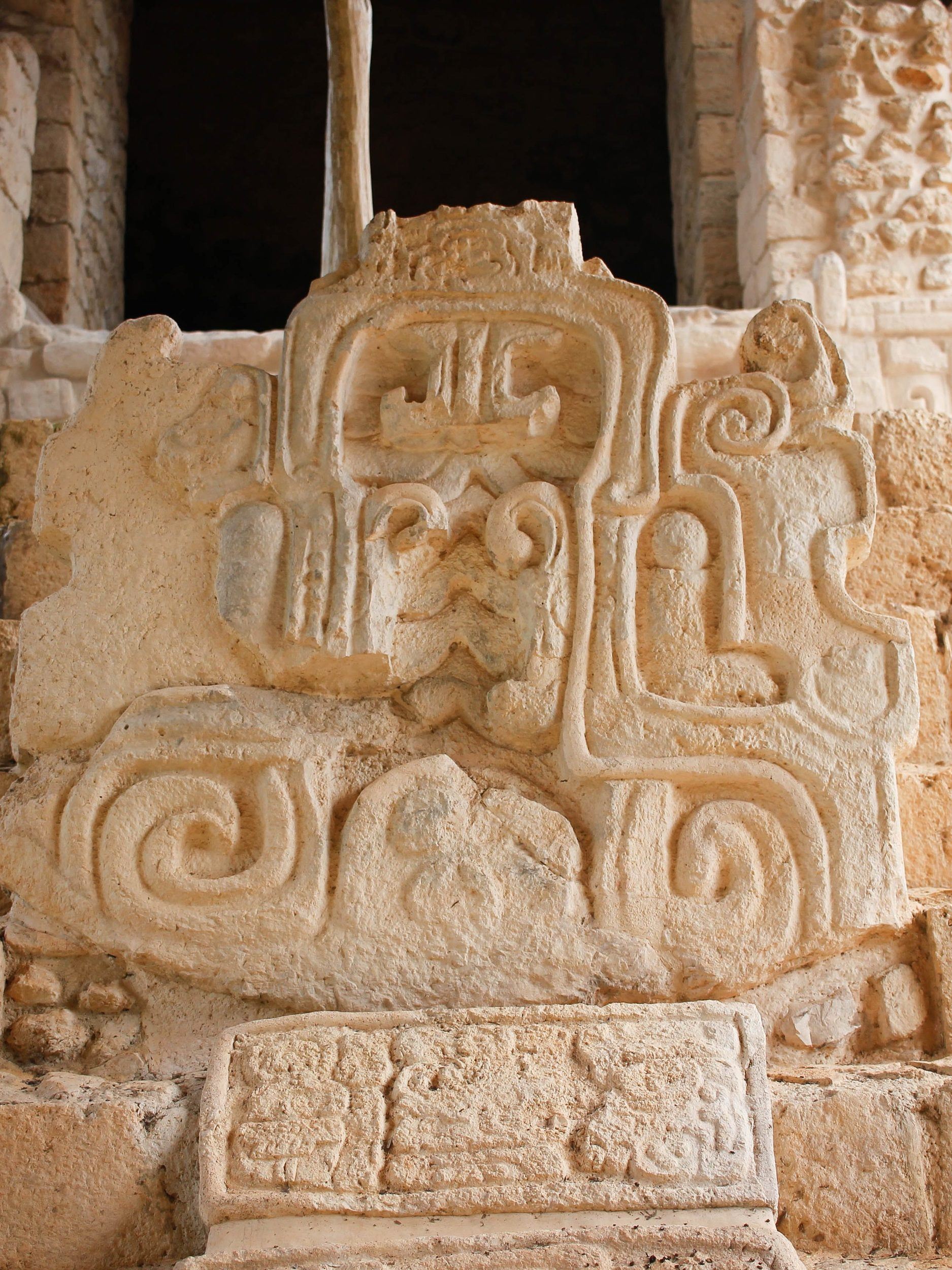
Restoration began on Ek Balam in 1997, so it is still a relatively new archaeological site. Tourism there has only just picked up in the last five years, so now is a great time to go check out the site before it explodes in popularity.
Like many other ruins, the main attraction at Ek Balam is the 96-foot pyramid in the center of the site. You can still climb to the top of it, which gives a sweet view of the surrounding jungle. Part of the restoration of the site included rebuilding the wooden and palm structures, so you’ll see thatched roofs at the top of the pyramid.
There you’ll also find the pristinely preserved stone carvings that make Ek Balam special. These carvings include feathered serpents that are quite common in Mayan art and sculpture. There are also jaguar sculptures that celebrate the site’s namesake, balam , which means jaguar in Mayan.
Only the center of the city of Ek Balam has been excavated; archaeologists are working on uncovering the rest of it. If you take any of the short paths around the jungle on the outskirts of the site, you’ll see hills where there are likely more structures waiting to be discovered underneath the trees.
A great feature of Ek Balam is the cenote next to the archaeological site. It is called Cenote Xcanche, and it’s an additional 70 pesos ($3.50) to get in.
I suggest going early to Ek Balam, spending 1-2 hours checking out the ruins and climbing the pyramid, and then taking a dip in the cenote in the late morning or early afternoon. That way, you’ll avoid the crowds as much as possible. The site doesn’t allow food or drinks besides water, and there aren’t very many food options nearby, so make sure to fuel up before you go!
- Cost: 413 pesos ($21). You’ll pay at two separate ticket windows.
- Transportation: Ek Balam is about 13 miles north of Valladolid, which is where you’ll have to go first if traveling from Mérida, Playa del Carmen, Cancún, or Tulum. You can easily get to Valladolid via an ADO bus from any of those cities. At the intersection of 44th Street and 37th Street in Valladolid, you’ll find colectivos that can take you to Ek Balam for 50 pesos ($2.50).
- Parking: Free, but you should tip the attendants 5-10 pesos (25-50 cents) to “watch” your car.
- Getting around inside: The site is walkable, but if you want to get to the cenote, you can rent bikes on site and bike there and back.
- Guides: There are English-speaking guides available on-site for around 600 pesos (500 for Spanish) ($25-30).
- Tours: If staying in Mérida, there is a tour available on GetYourGuide that includes an indigenous craft workshop, a visit to Ek Balam, and a stop at Cenote Xcanche.
Campeche is a state that often gets overlooked because of its proximity to super touristy Yucatán and Quintana Roo. I think Campeche is underrated and deserves more recognition! This vibrant state is known for its history of pirates, its delicious seafood, and all the brightly colored buildings in its charming cities.
This state is one of the least populated in Mexico, and much of it is covered by jungle, including the Calakmul Biosphere. The government has gone to great lengths to preserve the biodiversity of Campeche, so a visit to any of these ruins also promises an impressive look into the flora and fauna of the area.
The architectural style of the buildings at these sites is unique to this state, which is a testament to the diversity of decorative art, dialects, and traditions in the Mayan world.
View this post on Instagram A post shared by Autumn Daidone (@mainegoatlady)
The primary part of the ancient city of Becán is surrounded by a 16-foot deep moat and includes 20 structures in total. The best thing about Becán is its unique architecture and remote location, as you might be able to spot some wildlife.
Becán is still very much off the regular tourist track, so you can expect to see very few people there at any given time of year and any time of day. Keep in mind that it gets very hot and humid in Campeche, so visiting in the early afternoon isn’t advisable unless you are totally okay with intense heat.
While you won’t find a stand with guides available for hire at Bacán, there are plenty of signs that have English explanations for each of the structures to guide your visit. All of the buildings, including the largest pyramid, are accessible for climbing if you fancy a higher-up view of the grounds.
- Cost: 65 pesos ($3.25)
- Transportation: The closest touristy city to Bacán is actually Bacalar , Quintana Roo. From there it’s about a 1.5-hour drive. There is one bus that goes from Bacalar to Xpujil, the nearest town to Bacán. The bus only runs once a day, however. Your best option to enjoy the ruins is to have a rental car ; that way you can also check out Calakmul and other nearby sites that are further off the tourist track.
- Getting around inside: You can easily see everything at the site on foot.
- Guides: There are no guides at the ruins, but all the signs are in English.
- Tours: You really won’t find many (if any) tours including Bacán online. This is likely because of how far it is from popular sites. Not being a big tourist spot could actually be a good thing, because it means that there will be fewer visitors there.
5. Calakmul
View this post on Instagram A post shared by Coco Rivas (@cocorivas)
Calakmul is easily one of my favorite Mayan ruins. The site is nestled in the heart of the Calakmul Biosphere, just 22 miles from the Guatemalan border. The biosphere itself is home to several species of monkeys, toucans, jaguars, and other native species.
Calakmul was once one of the most important Mayan cities in the lowlands region. Calakmul is considered to be one of the most structurally rich archaeological sites uncovered to date. It has 117 stelae (stone slabs with carvings), 8 sacbes (raised paved roads), and an extensive network of canals and water reservoirs.
Only a small portion of the 27-square-mile city is open to the public, but it includes a 148-foot pyramid that you can climb to the top of. The view of the biosphere from up there is breathtaking. While not as popular as Chichén and Tulum, Calakmul is the most visited archaeological site in Campeche, so you’ll find more people there than you would at Becán or Edzná.
There is a lot of information to uncover about the site, so I highly recommend hiring a guide to walk you through. With a guide, you could spend 3-4 hours at Calakmul. Like most of the other sites, the best time to go is right when it opens, and avoid going on Sundays.
- Cost: 80 pesos ($4) to enter the archaeological site, 160 pesos ($8) total in fees to enter the biosphere and access the road to the ruins.
- Hours: 8am to 5pm daily; the ticket booth closes at 4pm
- Transportation: It’s easiest to get there by rental car . You can also take an ADO bus from Cancún to Xpujil (it takes 8 hours), which makes stops in Playa del Carmen, Tulum, and Bacalar, so you can get on the bus in any of those cities. There are some hotels near Xpujil if you want to explore the Calakmul biosphere for more than just one day. From Xpujil, you can take a taxi to Calakmul for around 500 pesos ($25).
- Getting around inside: While the ruins are easy to explore on foot, the biosphere is not. If you want to see the biosphere, a tour is the best way to do it.
- Guides: There aren’t many English-speaking guides available at the site, so it’s best to arrange a guide at your hotel if staying in Xpujil.
- Tours: Ka’an Expeditions is the best place to book a tour of the ruins and biosphere. They have several options, including a sunrise hike at the biosphere and opportunities to connect with the nearby Maya communities.
View this post on Instagram A post shared by The Mayan Train (@themayantrain)
Said to mimic the layout of the ancient city of Teotihuacán near Mexico City, this site is intriguing and packed with historical significance. The Itzá family from Chichén Itzá also had great influence in Edzná, and therefore much of the architecture is reminiscent of Chichén. Like many Mayan cities, it is still a mystery why the inhabitants of Edzná abandoned it.
The tallest structure at Edzná is the Gran Acropolis, which is a 5-level pyramid with a small room at the top. You can climb up and take a peek inside. Another must-see is the Temple of Masks, which is a small building with two stucco masks: one represents the Sunrise God to the east, and the other the Sunset God to the west.
This unique archaeological site is often overlooked and therefore doesn’t attract very large crowds. Beyond a ticket booth and a bathroom, the site doesn’t have any other amenities, so make sure to bring anything you need for the day with you, including snacks and plenty of water. Visit in the morning, so you don’t have to travel back to Mérida or Campeche after the sun sets.
- Transportation: There is a colectivo that runs from the main market in Campeche City to Edzná for 80 pesos ($4) and takes about an hour. Otherwise you can take a taxi from Campeche for around 400 pesos ($20). From Mérida, the drive is about 3 hours if you rent a car . Otherwise, you can take an ADO bus to Campeche and then travel to Edzná from there.
- Getting around inside: It is completely accessible by foot.
- Guides: There aren’t any English-speaking guides available for hire at the site itself, but you can request one at your hotel in Campeche or Mérida to accompany you.
- Tours: If you’re staying in Mérida, there is a full-day tour available that goes to Campeche and includes a stop at Edzná.
The Mayan Empire in Chiapas was distinct from the Yucatán Peninsula. There you’ll see a big difference in the architecture, city planning, and art motifs. Many of the best archaeological sites in Chiapas are in remote parts of the jungle, which is a unique and adventurous place to visit.
While the sites throughout the Yucatán Peninsula boast nearby cenotes and beaches, those in Chiapas are nestled in the mountains, along rivers, and near some of the country’s best waterfalls. Intrigued? Here are my top three Mayan ruins in Chiapas:
3. Palenque
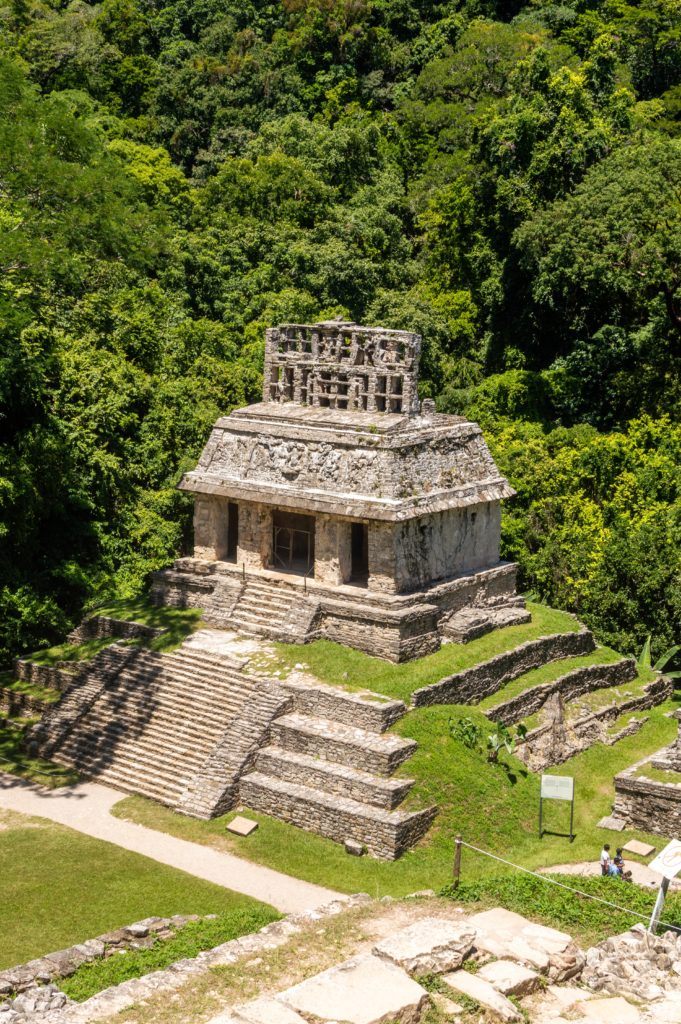
If you do anything while you’re in Chiapas, go to Palenque. It’s an absolute must-see archaeological site and by far my favorite in Mexico. I’ve been there several times, and what keeps me coming back is the fact that archaeologists are discovering new things about Palenque every year. In fact, only 10% of the settlement has been fully excavated, meaning there will be more and more discoveries to come.
Palenque’s location in the lush mountains of Chiapas and the multiplatformed structures give the site a harmonious feel. The greenery is completely different from the Yucatán Peninsula, and the architecture is distinct.
The Temple of Inscriptions is perhaps the most important structure on the grounds. When it was discovered, archaeologists were baffled by the 80-foot staircase that descends to the burial chamber of King Pakal, the most powerful ruler of Palenque. While the innermost chambers of the tomb are now closed to the public, much of it remains open and is fascinating to explore.
I recommend hiring a guide and visiting the on-site museum. A quick zip through it will provide enough historical information to appreciate the ruins, but having a guide present to answer questions is the best way to get the most out of Palenque.
Just like other popular sites, visiting Palenque in the early morning is ideal. There’s plenty of shade to cool off in if you do decide to visit in the afternoon, but it will be more crowded from late morning to late afternoon. Bring plenty of bug spray, as the humidity lends itself to some intense swarms of mosquitoes! The best time of year to visit is between November and March, when it’s cooler and drier.
- Cost: 80 pesos ($4), plus 35 pesos ($1.75) to enter the national park, plus 20 pesos ($1) for a quick ride to the entrance of the site
- Hours: 8:30am to 5pm daily (the ticket booth closes at 3pm)
- Transportation: The town of Palenque is fine to stay overnight in, and there are colectivos outside of the ADO bus station marked with “Ruinas” that can take you to the ruins for 40 pesos ($2). If you’re traveling from San Cristóbal de las Casas , the drive is about 5.5 hours via rental car, and up to 8 hours via ADO bus.
- Getting around inside: The site itself is a bit smaller than Chichén Itzá, so it’s completely accessible on foot. If you want to explore the national park around the archaeological site, you might want to consider taking a taxi or driving to the different entrances.
- Guides: There are English-speaking guides giving tours in groups, which cost about 200-300 pesos ($10-15) per person, depending on the size of the group.
- Tours: There are plenty of amazing tours available for Palenque on GetYourGuide. This one from San Cristóbal de las Casas includes stops at two waterfalls along with a guided tour of the Palenque ruins.
2. Yaxchilán
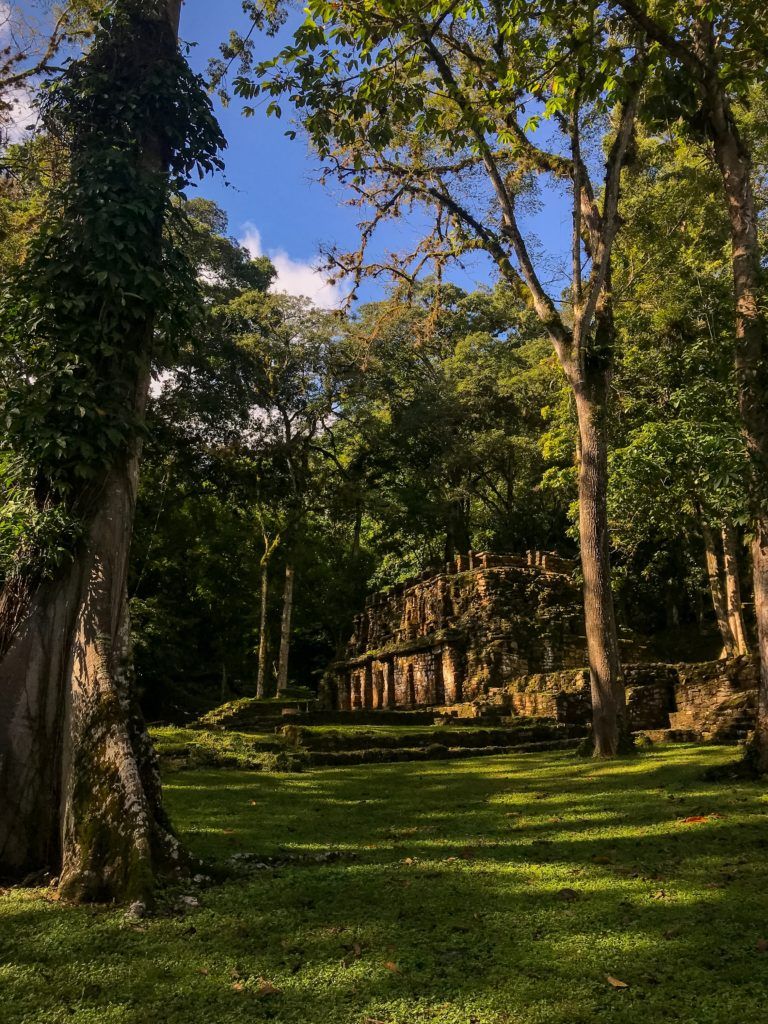
Located along the Usumacinta River, which divides Mexico and Guatemala, this remote site is one of the most sacred places in Chiapas for the Lacandon Maya people of the area, who make pilgrimages there. The structures on the grounds have beautifully preserved stucco carvings, altars, stelae, and murals. These features tell the story of the ancient civilization and led archaeologists to conclude that Yaxchilán was at war with Palenque for many years before it eventually fell.
Yaxchilán has a lot of historical significance for the Mayan Empire, but what makes it worth visiting is its location. To get there, you have to take a boat along the Usumacinta River, and the surrounding nature is absolutely breathtaking. The trip feels like something straight out of an Indiana Jones movie, making it perfect for adventure lovers.
I wouldn’t recommend trying to visit Yaxchilán on your own, as it can be complicated to coordinate buses, colectivos , and the boat. Even if you drive yourself, finding a boat to take you can be tricky. The best way to visit is on a tour, which also includes a guide and takes off the pressure of having to do extra planning.
Rainy season in this area of Chiapas begins in June and ends in late September, which is the worst time to go. The river tends to rise significantly during the rainy season, so transportation to the ruins can be dangerous. The best time to go is between October and March, as the temperatures are cooler and it is much drier.
- Cost: About 30 pesos ($1.50), although there is no official information about the entrance fee provided by the Mexican government
- Hours: 8am to 3pm daily
- Transportation: From San Cristóbal or Palenque, you can take an ADO bus or colectivo to Frontera Corozal. From there, you can take a boat to the ruins. The boat costs 1,200 pesos total ($60), divided by however many people are aboard. The boat will wait to fill up, which can take hours unless someone offers to pay for the remaining seats. For this reason, I only recommend visiting Yaxchilán on a tour from either San Cristóbal or Palenque.
- Parking: There are free places to park at the boat launch in Frontera Corozal, but you will have to pay an attendant 5-10 pesos (25-50 cents) to watch your car.
- Getting around inside: The entire site is walkable.
- Guides: Once you get to the site, there are no guides available, and the only modern structure is a tiny ticket booth. If you want a guide, you’ll have to hire one in Frontera Corozal unless you’re on a guided tour.
- Tours: From Palenque, you can take a tour of Yaxchilán and Bonampak with stops in the Lacandon jungle.
1. Bonampak
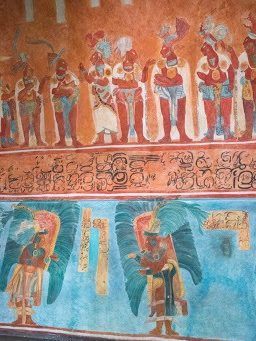
Bonampak has the best Mayan Empire murals that have yet been discovered. These frescoes tell the story of the ancient city of Bonampak in great detail, giving archaeologists a clear look into the past. You’ll find these incredible paintings in three different structures. In an effort to preserve them, only 150 people are allowed into the site per day, and only four people are allowed in each building at a time.
The entrance to the archaeological site is about 5 miles from the ruins themselves, so you will have to take a colectivo or rent a bike to get there. While it’s a lengthy bike ride, it’s quite scenic and can be a fun way to take in the jungle atmosphere.
Bonampak is much easier to get to on your own without a tour than Yaxchilán, but I still recommend visiting on a tour that also includes neighboring Yaxchilán, which has a similar history. Transportation in this area of Chiapas can be unpredictable, and the highway should be avoided after dark.
- Cost: 75 pesos ($3.75)
- Hours: 8am to 4:30pm daily; access closes at 3pm
- Transportation: From Palenque, you can take a 3-hour bus, which will drop you off about 2 miles from the entrance to the ruins. From there, you can take a colectivo to the entrance. If you opt out of taking a tour, the easiest way to visit Bonampak on your own is via rental car , which you can drive right up to the ruins.
- Guides: Once you get to the site, there is only a small ticket booth and bathrooms. There are no English-speaking guides available, but the plaques around the ruins are all in Spanish and English.
- Tours: From Palenque, you can take a tour of Yaxchilán and Bonampak with stops in different places in the Lacandon jungle.
Before You Visit:
- Make sure to have cash: Most sites (even Chichén Itzá) don’t accept cards of any kind, so make sure that you have enough pesos on hand to pay for your entrance, parking, food, and anything else before you go. If the site happens to have an ATM, it will likely charge an absurd fee to withdraw money, so it’s best to arrive prepared.
- Pack like a pro: Do not forget that many of these sites are located in remote places, often in the jungle. Come prepared with bug spray (eco-friendly whenever possible) and sun protection. Wear comfortable shoes and clothes that you won’t mind getting sweaty in.
- Study up: I’ve noticed that the stories that some guides tell foreigners about the sites are a bit embellished and not always historically accurate. I think this happens as a result of overtourism in these places. I suggest reading up a bit on the sites you want to visit before you go. That way, it will be much easier to decipher fact from fiction if you happen to get a guide that likes to stretch the truth a bit.
- Respect the rules: Some sites will have signs advising visitors to avoid touching or climbing on the ruins. Most of the time there won’t be anyone there to make sure the rules are followed, so please obey the signs. They are there for a reason, and your epic Insta post isn’t worth damaging and disrespecting the ruins.
Map of the Ruins
Stepping foot on any one of these archaeological sites feels surreal. I often find myself closing my eyes and trying to imagine what these cities looked like back in their prime. It’s hard to imagine the stone buildings filled with people bustling about, selling fruit, and praying at places of worship, but that’s how these cities used to thrive. They were civilizations with advanced mathematical systems in place, some more advanced than those in Europe during the same era.
It’s incredible to me that the structures and artifacts have stood the test of time. However, the most amazing thing is that the direct descendants of the ancient Mayan people continue to practice the same traditions and even some of the same building techniques of their ancestors.
Next time you head to Mexico, consider making a stop at a few of these sites and learning more about the Mayas. For more ideas on things to do in the Yucatán Peninsula, check out our Bacalar or Tulum guide and things to do in and around Cancún . Heading to Chiapas? Get a head start on planning with our Chiapas guide and things to do in San Cristóbal de las Casas .
Pin me for later:
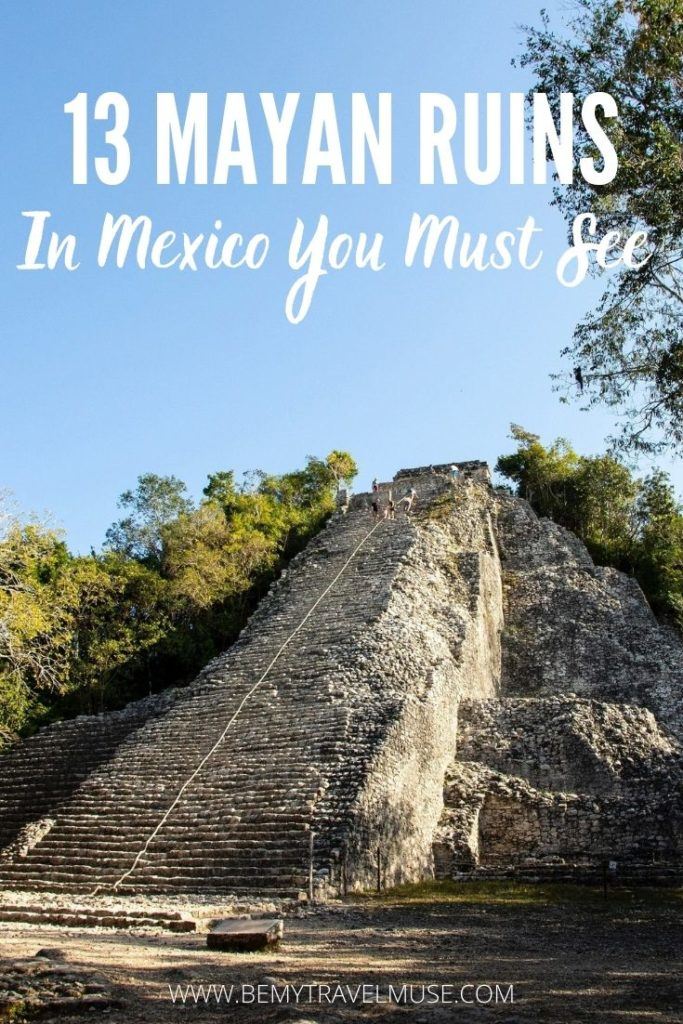
About the author: Emily is a Mexico travel enthusiast based in San Cristóbal de las Casas, Chiapas. She is a part-time freelance writer for BMTM and a part-time doula.
About Emily Becker
Emily Becker is a digital nomad based in Costa Rica. She's been traveling on and off since 2014 and has visited 15 countries—planning to tick many more off her bucket list. In addition to writing for BMTM, she works as a copywriter and project manager.
Leave a Reply Cancel reply
Your email address will not be published. Required fields are marked *
Save my name, email, and website in this browser for the next time I comment.
subscribe to our newsletter
This site uses Akismet to reduce spam. Learn how your comment data is processed .
Libby Winkler says
05/23/2021 at 2:34 pm
Great read! I am a fairly experienced traveler in Mexico and love visiting ruins. I learned of some new ones and have added them to our list for future trips.
Herb Hoelle says
05/28/2021 at 6:56 am
Thank you for all the travel experiences you bring to life!!
Kristin says
06/01/2021 at 10:46 am
Aw thank you!
6 Best Mayan Ruins in Mexico Travel Guide
By: Author Hannah
Posted on Last updated: 28 March, 2024
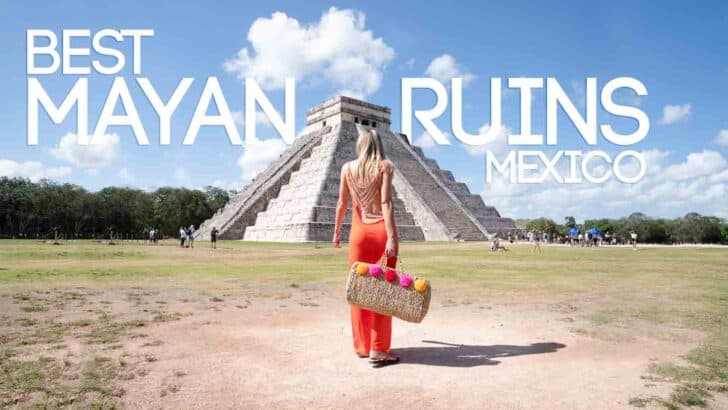
Mexico is known for more than its sun-soaked beaches and festive atmosphere. You’ll find thousands of Mayan ruins throughout Mexico, many of which date back 2,500 years. Home to ancient civilizations, these Mayan ruins in Mexico are some of the best ways to explore Mexico’s history and culture.
Although different Mayan civilizations lived throughout the Americas, they prominently resided on the eastern side of Mesoamerica, or what we now know as Mexico. Some of the earliest Mayan settlements were found in 1800 BC; however, many cities came to power during the 6th century.
The Mayans left behind grandiose structures, beautiful art, and symbolic objects like pottery and jewelry. Nowadays, you can visit the deserted cities and Mayan ruins, which shed light on what life was like thousands of years ago.
Choosing between Mexico’s different ruins and sites can be a little overwhelming. However, there are some key places you must visit during your trip. In this article, we’ll cover a few of the best Mayan ruins in Mexico.
*When looking for the best price and biggest selection of hotels, check prices on Booking.com . We’ve found they are the best option and have a great cancelation policy.*
6 Best Mayan Ruins in Mexico To Visit
1. chichen itza mayan ruins.
Considered one of the best Mayan ruins in Mexico, the archeological site of Chichen Itza is filled with history. Located on the Yucatan Peninsula, these Mayan ruins are just a short drive from Playa del Carmen and Valladolid. It’s also a three-hour drive from Cancun , making it the ideal day trip.
Not only is Chichen Itza a UNESCO World Heritage Site, but it was also voted one of the Seven New Wonders of the World. The impressive, sprawling complex dates back over 1,500 years and was once the economic and political capital of the Yucatan.
During the 9th century, Chichen Itza was home to over 50,000 residents, making it one of the largest Mayan cities at the time. However, many of Chichen Itza’s residents left for newer villages around Mexico. And in the 16th century, Spanish Conquestitors took over the city’s remaining. Between 1200 – 1500 AD, the city was eventually deserted.
The highlight of Chichen Itza is the towering El Castillo, a 100ft high step pyramid. It’s also referred to as the Temple of Kukulkan since it was built in honor of the feathered serpent deity, Kukulkan. Dominating over the rest of the ruins, a glimpse of El Castillo is worth visiting Chichen Itza alone.
Besides El Castillo, there are numerous other sites and temples to see in Chichen Itza. The Temple of Warriors is another magnificent structure. This stone pyramid is surrounded by 200 columns, with pictures of warriors carved into the side. At the top of the temple is a Chac Mool, a platform reportedly used for human sacrifices.
The sacred cenote is also one of the best things to see in Chichen Itza. This deepwater wall is located inside a cave surrounded by cliffs and rocks. While excavating the site, archeologists found treasures, jewelry, and even human remains at the bottom of the cenote. For this reason, it’s believed that the sacred cenote was used for religious sacrifices. If you don’t have time to visit the cenote, make sure to visit one of the other best cenotes in Mexico .
- Address: Carretera Federal, Cancun – Chetumal Km 230, 307, 77780 Tulum, Q.R., Mexico
- Hours : Every day from 8 am-5 pm
- Recommended Tour : Book Now – Viator Exclusive Early Access to Chichen Itza with Private Archaeologist
Related Article: Best Things to Do In Riviera Maya & Places to Visit
2. Coba Mayan Ruins
Tucked away from the city’s bustling crowds, Coba is an exceptional and historically significant archeological site. Located in the depths of a jungle, it may not be as busy or as popular as Chichen Itza or Tulum. However, its remote location makes it one of the best Mayan ruins in Mexico.
During its peak, Coba was home to over 50,000 residents. Historians believe that the first signs of human life date back to 100 AD. However, like many Mayan cities, Coba was soon abandoned during the invasion of Spanish conquistadors.
Once inside the Coba ruins, you’ll have several options for exploring the sprawling grounds. You can rent a bike or take a pedicab to reach the main sites and pyramids. Walking is an option but be prepared for a long journey.
The Coba ruins are known for ‘sacbes’ – or stone causeways. This intricate network of roads was widespread during the ancient Mayan world. The largest sacbes stretch for 62 miles and connect Coba with the ancient city of Yaxuná. It’s the longest and most technically engineered road of ancient life!
Besides walking on the sacbes, you can also visit Ixmoja, the largest pyramid in Coba. This structure can still be touched and climbed, unlike the ruins in Chichen or Itza. If you are wanting to climb a Mayan ruin in Mexico, you must come to Coba. Ixmoja stands 138 ft tall and has 120 stone steps. Once you reach the top, you’ll be rewarded with sweeping views of the surrounding lush jungle.
Another benefit to Coba’s rural location is its proximity to the limestone cenotes. There are three fresh-water cenotes near Coba, which means you can go for a swim or dip if the weather gets too hot! Our favorite cenote nearby is Suytun Cenote .
- Address : Carretera Federal Tulum 307, 77793 Cobá, Q.R., Mexico
- Recommended Tour: Tulum, Coba, and Swimming in a Cenote – Book Now
3. Tulum Mayan Ruins
Dating back 700 years, the Tulum ruins are considered one of the best Mayan ruins in Mexico. The ruins are situated on the coast of Tulum, a charming port village in the Yucatan Peninsula.
Since it’s only a two-hour drive from Cancun, Tulum makes for an easy day trip. Here is our step-by-step guide for getting from Cancun to Tulum . If you are staying in Tulum , we suggest going early in the morning. The Tulum ruins are the most popular thing to do in Tulum , so go early or later in the afternoon.
Perched atop a cliff overlooking the Caribbean Sea, the archeological ruins of Tulum have a breathtaking setting. Although the walled city might not be as large or as impressive as other ruins in Mexico, its cliffside location makes up for it. There’s even a beach right in the middle of the ruins!
Many consider Tulum to be the smaller, more compact version of Chichen Itza. The temples of Tulum are built in the same style as the buildings in Chichen Itza and even mix different architectural influences.
Tulum was initially built as a sea fortress, hence the walled protection and lookout. During the height of its rule in the 13th and 14th centuries, Tulum was home to over 1,500 people. However, when Spanish conquistadors took over the town, they brought life-threatening diseases that killed most of the population.
However, Tulum was still considered one of the biggest trading ports in the Yucatan. Artifacts have been found throughout the site that originally came from Central Mexico and even Central America.
There are three significant structures to see in Tulum. The first building is El Castillo, which is similar in structure and style to Chichen Itza’s pyramid of the same name. Originally built as a lighthouse, this 25ft tall pyramid could see trading boats and canoes sailing towards the city.
The other two sites to see in Tulum are the Temple of the Frescoes and the Temple of the Descending God. Mayans used the Temple of the Frescoes as an observatory for tracking the sun’s movements. The Temple of the Descending God was used as a shrine to honor Tulum’s nameless “diving God.”
The cenotes near Tulum are some of the in Mexico, and my personal favorite is Cenote Calavera . It’s the perfect place to cool down after a hot afternoon exploring the best Mayan ruin in Mexico.
Go early in the morning. The heat is crazy hot at Tulum Ruins. Make sure to read our Tulum packing list for our tips on what to wear to Tulum Ruins.
- Address : Zona Hotelera de Chichen Itza, Chichen Itza, Yucatan, Mexico C.P. 97751
- Admission Fee : 65 pesos per person
- Book Now – 3-in-1 Discovery Combo Tour: Tulum Ruins, Reef Snorkeling, Cenote & Caves
- Book Now – Viator Exclusive Early Access to Tulum Ruins with an Archeologist
4. Ek Balam Mayan Ruins
Another popular ancient archeological site in the Yucatan Peninsula is Ek Balam. This walled city has an impressive 45 structures on-site, some of which you can even climb! There are very few ruins in Mexico you can climb, so make sure to put Ek Balam on your itinerary.
Its name roughly translates to “The Black Jaguar” in Mayan. Besides the sheer number of structures, the ruins are known for housing the tomb of El Balam’s ruler, Ukit Kan Leʼk Tokʼ.
From 770 – 840 AD, Ek Balam was one of the most prominent cities in the Mayan world. The town had around 20,000 people until its fall when the population dropped dramatically. Although there are many speculations as to why the Ek Balam was abandoned, it’s still not completely clear to this day.
Ek Balam is a relatively new discovery, with only its center having been excavated. However, many visitors come to see the Acropolis, which is the largest structure in the ruins. It’s believed to contain the tomb of Ukit Kan Leʼk Tokʼ, one of the biggest rulers of the time.
The entrance to his throne – known as El Trono – is shaped like a giant mouth. Many believe that it’s the mouth of a jaguar.
One of the best parts about Ek Balam is that you can climb to the top of the Acropolis. If you visit on a clear day, you might even be able to see the ruins of Coba and Chichen Itza from the top!
Another impressive feature of the Ek Balam ruins is the city walls. Ranging from 6.6 to 9.8 ft wide, these thick stone walls showcase how vital defense was to the city. The grounds of Ek Balam are vast, with the walls encompassing around 24 acres of land.
With dozens of buildings and structures to visit, it’s advised to spend several hours in Ek Balam.
- Address : Ek Balam, Yucatan, Mexico C.P. 97751
- Hours : Every day from 8 am-4 pm
- Recommended Ek Balam Tours
5. Uxmal Mayan Ruins
Considered one of the best Mayan ruins in Mexico, Uxmal is home to beautifully preserved and ornate structures. This ancient city is also located on the Yucatan Peninsula and was recently recognized as a UNESCO World Heritage Site.
The exact date and population of the city are still largely unknown. Many archeologists and historians believe Uxmal was built between 850-1100 AD and had around 15,000 residents. It is believed that the city ruled around 900 AD when it was the de facto capital of the Puuc region.
The city was soon abandoned after the Spanish conquest during the mid-1400 and 1500s. The original names of the structures are unknown since the Spanish gave them new titles based on their beliefs and thoughts about the buildings.
Although many buildings have been restored, Uxmal contains Mexico’s biggest collection of preserved ruins in Mexico. Many structures are built in Puuc-style, noted by their smooth slopes and thatched roof shapes.
The Governor’s Palace is one of the top things to see in Uxmal. This larger-than-life platform has a 320-foot-long mosaic carved with pictures of serpents, masks, and many god-like figures.
In Uxmal, you can also visit a large ball court, which was often used for playing Mesoamerican ball. Although most of the structure has deteriorated over time, you can still see the courts’ sides and the rings used to hold the balls.
Another notable structure is the Pyramid of the Magician, which dominates the skyline in Uxmal. Its rounded sides and elliptical base make it one of Mexico’s most unique structures. The pyramid gets its name from various folk legends told throughout Mayan history.
- Address : Uxmal, Yucatan, Mexico
- Recommended Uxmal Tours
Don’t let the size of the small, compact ruins of Labna fool you. Recognized as a UNESCO World Heritage Site, this Mayan ruin has some of the finest Puuc-style structures. Along with Uxmal, it’s one of the last Puuc sites remaining in the Yucatan Peninsula.
During its reign between 600-900 AD, the city had a population of only 4,500 people. The site wasn’t discovered until it was discovered by English explorers Stephens and Catherwood in 1842.
As soon as you arrive in Labna, you’ll walk through the two-story-high Palace, which extends almost 400 feet in length. It’s considered one of the longest existing Puuc structures. The Palace also contains many ornate carvings inscribed inside the walls.
Even a large sculpture of Chac, the Mayan rain god, looms over you as you walk inside. However, you’ll find Chac masks throughout the entire site, especially in doorways and corners of the buildings.
Labna is also home to several sacbes, or paved roads. These roads connect the city to other villages and are considered one of the most advanced features of the ancient Mayan civilization.
The most popular sacbes extend from the Palace to the decorated arches, or “El Arco.” Many believe that the arch stands at the entrance of the city. However, it merely connects the main public plazas.
- Address : Carretera Uman – Hopelchen km 101, Mérida, Yuc., Mexico
FAQ Mayan Ruins in Mexico
How many mayan ruins in mexico are there.
With over 4,400 Mayan ruins scattered throughout Latin America, many of the Mayan sites are located in Mexico.
What is the most famous Mayan ruin?
Chichen Itza is the most famous Mayan ruin in Mexico and one that shouldn’t be missed. Since it is the most famous Mayan ruin, it sees many visitors daily, so if you can rent a car and drive yourself to avoid the bus tours.
Which Mayan ruins to visit?
This will vary based on where you vacationing in Mexico and if you have a rental car in Mexico to drive yourself. You won’t be disappointed if you pick any of the above six best Mayan ruins in Mexico.
Which Mexican Mayan ruins can you climb?
There are still a few Mayan ruins you can climb in Mexico. Sadly you can no longer climb Chichen Itza, but you can climb the following Mayan ruins in Mexico: Coba Ruins and Ek Balam.
How old are the Mayan ruins in Mexico?
Evidence shows the Maya started building the Mayan ruins about 3,000 years ago.
Don’t forget to pin me for later!
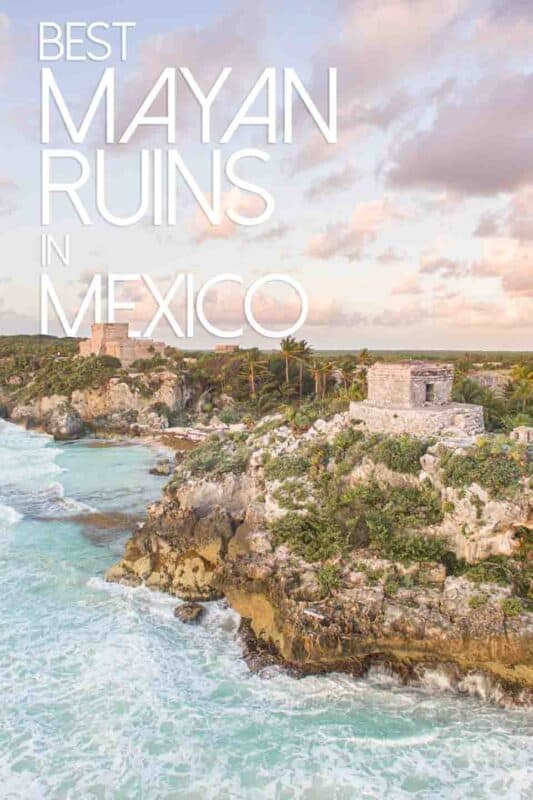
2024 Isla Holbox Ultimate Guide – Must KNOW Travel Tips

Is Isla Holbox worth the trip? YES! Holbox Mexico is one of the best places in Mexico to visit. Skip Tulum! 2024 Complete Holbox guide with things to do in Holbox, best restaurants, where to stay, how to get to Holbox, and more.
5 Things To Know BEFORE Renting a Car in Cancun
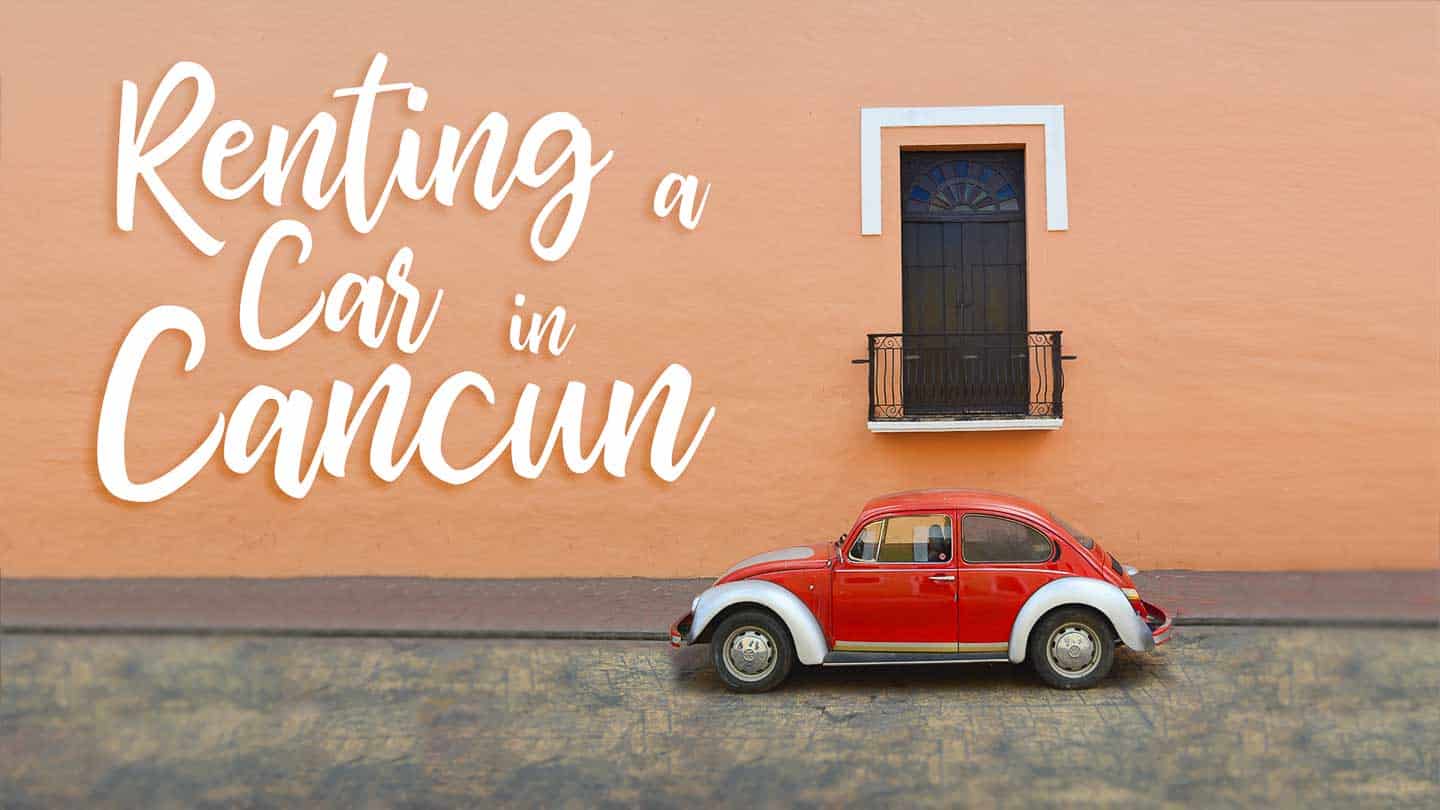
Don’t rent a car in Cancun without reading this first! Cancun car rental guide: driving in Mexico tips, common scams, what to do if police pull you over, best rental car company, and more.
Ultimate List Of The Best Cenotes in Mexico
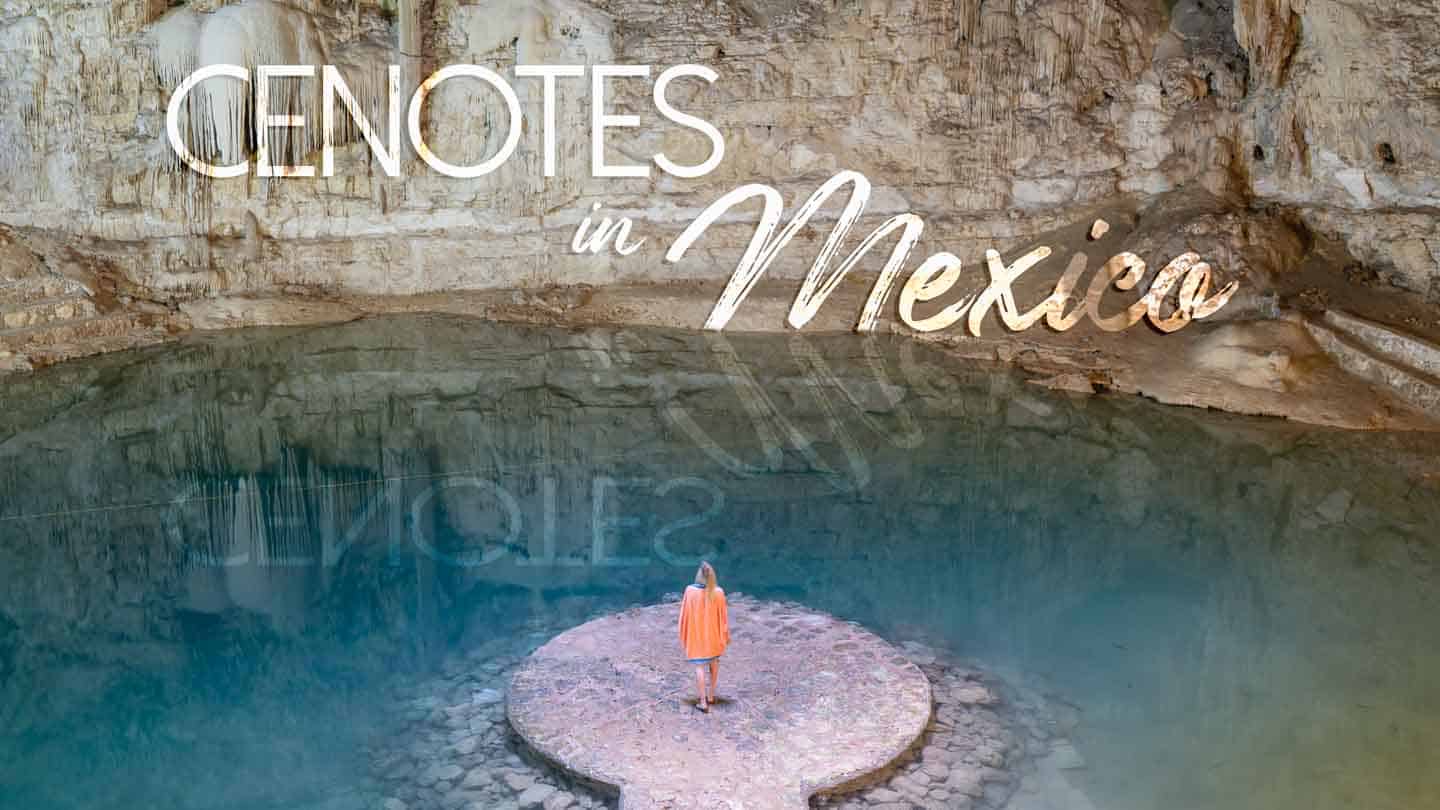
Over 6,000 cenotes in Mexico, guide to the best cenotes in Tulum, Playa del Carmen, Merida & Cancun. Cenote map, entrance fees, hours & more.
Explore More Mexico Travel Guides
- Climbing Coba Ruins – Everything You NEED to Know
- Muyil Mayan Ruins – Everything you need to know before you go!
- Chichén Itzá Mayan Ruins – Everything you need to Know Before
- Top 10 Best Things to Do in Valladolid Mexico
- Isla Hobox – Mexico’s Next Tulum and Best Beaches
- Laguana Bacalar – Skip the Beach and Head Here
- Favorites & Watchlist Find a Cruise Cruise Deals Cruise Ships Destinations Manage My Cruise FAQ Perfect Day at CocoCay Weekend Cruises Crown & Anchor Society Cruising Guides Gift Cards Contact Us Royal Caribbean Group
- Back to Main Menu
- Search Cruises " id="rciHeaderSideNavSubmenu-2-1" class="headerSidenav__link" href="/cruises" target="_self"> Search Cruises
- Cruise Deals
- Weekend Cruises
- Last Minute Cruises
- Family Cruises
- 2024-2025 Cruises
- All Cruise Ships " id="rciHeaderSideNavSubmenu-4-1" class="headerSidenav__link" href="/cruise-ships" target="_self"> All Cruise Ships
- Cruise Dining
- Onboard Activities
- Cruise Rooms
- The Cruise Experience
- All Cruise Destinations " id="rciHeaderSideNavSubmenu-5-1" class="headerSidenav__link" href="/cruise-destinations" target="_self"> All Cruise Destinations
- Cruise Ports
- Shore Excursions
- Perfect Day at CocoCay
- Caribbean Cruises
- Bahamas Cruises
- Alaska Cruises
- European Cruises
- Mediterranean Cruises
- Royal Destinations
- Cruise Planner
- Make a Payment
- Check-In for My Cruise
- Beverage Packages
- Shore Excursions
- Update Guest Information
- Book a Flight
- Dining Packages
- Royal Gifts
- Required Travel Documents
- Transportation
- Book a Hotel
- Redeem Cruise Credit
- All FAQs " id="rciHeaderSideNavSubmenu-7-1" class="headerSidenav__link" href="/faq" target="_self"> All FAQs
- Boarding Requirements
- Future Cruise Credit
- Travel Documents
- Check-in & Boarding Pass
- Transportation
- Perfect Day at CocoCay
- Post-Cruise Inquiries
- Royal Caribbean
- Celebrity Cruises

GO BACK TO GUIDES
Discover The Best Mexico Historical Sites And Mayan Ruins
By Melissa Alvarado Sierra | Published on March 21, 2022
Contrary to popular belief, the Maya still exist in Mexico and other parts of Central America. Close to seven million people belong to a Mayan community, practicing some of the traditions from the ancient world and speaking some of the many Mayan languages. Their ancestors built majestic cities, many of which can be visited and explored today. Some are well preserved and some contain only remnants of their great past, but no matter which one you visit, you'll learn the mystical stories of the people who built a revered civilization.
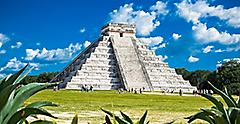
1. Chichen Itza
The sacred and pre-hispanic city of Chichen Itza is one of the most famous Mayan ruins in the Yucatán peninsula and perhaps all of Mexico, with a history spanning almost a thousand years. The structures are an example of fusion Mayan architecture and show how the Maya and Toltec people blended traditional Maya construction styles with highland and Puuc styles.
But Chichen Itza is more than just a famous ruin. It's also an ancient observatory and a place where the Maya could indulge in their sky-watching obsession. Proof of this love for astronomy can be found in the carvings that adorn the pyramids, where hieroglyphs depict the celestial cycles. El Castillo and El Caracol pyramids are perhaps the most astronomy-focused structures — both were built the way they were so their features would align with the moon, the rise of the planets, the solstices and the equinoxes.
Besides its beauty and history, Chichen Itza also holds many secrets. One of the most celebrated is the dormant giant snake that reveals itself across El Castillo at certain moments during the year. This deity is known as Kukulkan and appears to be climbing the pyramid's 365 steps during the spring and autumn equinoxes. Each step represents one day of the year.
Another Chichen Itza sacred secret is Cenote Sagrado, which is a hidden sinkhole beneath the site. It is believed that the cenote was used during Maya ceremonies, including during human sacrifices to the god of rain. Bones and jewelry have been found inside the sinkhole.

2. Palenque
UNESCO describes Palenque in Chiapas as a prime example of a Mayan sanctuary. The craftsmanship here is famous for its elegance, demonstrated in the sculpted reliefs, which portray typical Mayan themes. The interior spaces are wide with many openings. The space also includes galleries which are decorated with sculptures and stucco, something rarely seen in other ruins.
This is the place to visit to experience the Maya's mysticism and Mexico's beautiful jungles. The sounds of Saraguato monkeys and parrots add to the magic of the temples of Palenque, and the road to the site is lined with beautiful and refreshing waterfalls. On the south side, you'll find the archaeological zone of Toniná, and in the east, across the Lacandona jungle, the ancient cities of Bonampak and Yaxchilán.
One of the most interesting things about Palenque is that the hieroglyphs here show the way the Maya communicated. Their words are carved all over the walls. Scholars have found this incredibly useful when researching the Mayan ancient logosyllabic writing system and finding a way to decode it. They found that the Maya living here wrote about trade, alliances and even war.

3. Calakmul
Many buildings from the original site survived in Calakmul. The ruins are found in the center of the Reserva de la Biosfera Calakmul and are located near a lush jungle filled with parrots, toucans and turkeys. Hundreds of bird species call this magical place home along with Saraguato monkeys and howler monkeys. You might even spot a jaguar.
Because Calakmul is very remote and because the dense forest almost completely conceals it, the site remained untouched for hundreds of years until American botanist Cyrus Lundell found it in 1931. The ancient city holds thousands of structures, and only a small percentage of them are currently excavated, restored and open to visitors.
In its glory days, Calakmul was home to about 65,000 people. The area included canals and reservoirs and the residents survived by using an intricate farming system. The Maya who lived here also depicted images of their daily life on murals, and some of these were only recently discovered. They should be open to the public soon.
The Great Pyramid is perhaps the most-visited and famous structure here. It has a base of about five acres and it's 175 feet high, making it the tallest in the Yucatán peninsula.
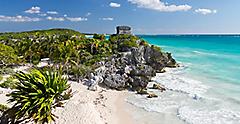
Tulum's Playa Ruinas, which are located in the Riviera Maya, is probably one of the most-photographed beaches in Mexico, likely because it's an idyllic backdrop for social media photos. Beach-seekers and yoga enthusiasts come here from around the globe and visit the famed ruins that are near a turquoise sea and bright white sand.
El Castillo is Tulum's most popular ruin and it's located on a clifftop, because its original purpose was to serve as a watchtower. El Castillo is almost as popular with tourists as Chichén Itza and Teotihuacan, and several of its temples and castles date back to pre-Columbian times.
These ruins may be on a smaller scale than others in Mexico, but Tulum more than makes up for this with its paradisiacal Mexican landscape . Tulum, also known as "the walled city," served as a trading port and some of its structures also date back to the Post-Classic period. When the Spanish arrived, Tulum was still a bustling city.
Don't miss the Temple of Frescoes, El Castillo and of course, the beach at Playa del Carmen, Akumal or any of the other popular ocean spots.
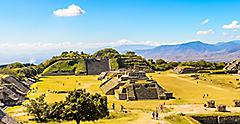
5. Monte Alban
Monte Alban was built on a hilltop and has panoramic views of the ruins of this once-dominant empire. It was inhabited for more than 1,500 years by Zapotecs, Olmecs and Mixtecs, all of whom predated and influenced the Maya. These groups built dams, canals, pyramids and mounds in Monte Alban, creating a fascinating topography. According to scholars, the buildings were built to withstand earthquake activity.
This UNESCO World Heritage Site has two distinct areas: the historic center known as Oaxaca de Juarez and Monte Alban, where the ruins are located. The archeological section was founded around 500 B.C. and was the home of more than 30,000 people. It still has a ballgame court, observatory, religious temple, pyramids, tombs and drawings carved on hundreds of stones.
One unmissable area here is Plaza de los Danzantes, a square where petroglyphs of muscular men dancing can be seen. Scholars say the images depict men performing a ritual dance as a captured enemy is tortured. Other hieroglyphs show a calendar, including one that's aligned with the polar star that points to the north.
6. Teotihuacan
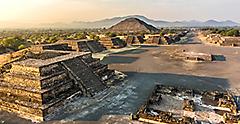
This ancient Mesoamerican site, which is located north of Mexico City, was settled around 400 B.C. and was one of the most powerful cities in the region. The city was lived in, then abandoned, by different groups for hundreds of years until it was discovered by the Aztecs in the 1400s. Its past is unknown, as is exactly who built the monumental site. However, its architecture, carvings and other aspects of the site resemble those settled by the Maya.
Teotihuacan contains many plazas, temples, pyramids and apartment compounds, and the most famous structures are the Pyramid of the Moon, the Pyramid of the Sun and the Temple of Quetzacoatl.
The religion of the people who inhabited Teotihuacan is difficult to discern because of the mystery surrounding the area, but its architecture demonstrates that this was a polytheistic society. The main deity was the Great Goddess of Teotihuacan, who is depicted as a spider.
The complex inspires all who visit because of its technological and architectural marvels. Many call Teotihuacan Mesoamerica's greatest city. It is also the least understood.
7. Ek Balam
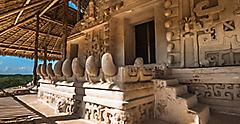
The famous city of Ek Balam is a fascinating site, with a jungle still covering most of its structures. When you first see the area, it will probably remind you of movies you've seen. There's a ball court and arches surrounded by dense vegetation as well as the famous giant Acropolis, which is a restored gallery made up of different chambers.
Inside the Acropolis, paintings accompany the writing on the walls. One painting in particular, the Mural of the 96 Glyphs, is often called a masterwork of calligraphy. Other paintings depict mythological scenes, the moment of death and various deities.
Something to keep an eye out for is the sacbe arch, which is an ancient road that connected Ek Balam to other Maya kingdoms like Chichen Itza. These roads were common in many Maya cities. If you go to the very top of the main temple, you'll be able to see Coba, another ancient city that was connected to Ek Balam by a sacbe.
The main pyramid in Ek Balam is a massive structure measuring 32 meters high. Its entrance was built to look like a huge jaguar mouth, and there are stucco sculptures surrounding the mouth that resemble skulls, Maya angels and shamans.
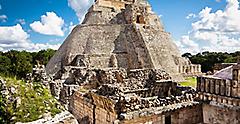
This set of ruins is one of the most famous sites in Mexico . Uxmal means "built three times" in Mayan, and this refers to the intricate construction of the Pyramid of the Magician, which was built on top of other pyramids. It was the home of more than 25,000 people and catapulted to notoriety around 700-900 A.D. The Maya who built it were well-versed in astronomy, and the main pyramid was the pyramid of the Soothsayer. It served as the ceremonial center.
Many buildings were decorated with motifs and sculptures of Chaac, the god of rain. This god was particularly honored because Uxmal lacked natural water supplies. Unlike other ancient cities, this one was not built near a cenote. The inhabitants of Uxmal were desperate for water and revered Chaac in the hope of getting enough rain to support their city.
Scholars consider Uxmal to be one of the high points of Mayan architecture along with neighboring Ladbna, Sayil and Kabah. The most appealing parts of Uxmal are the ceremonial structures because they represent the pinnacle of Mayan achievement in design and art.
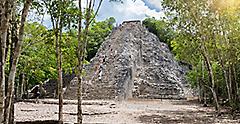
This ancient site is located in Quintana Roo, which is about 25 miles from Tulum. Coba means "water stirred by wind" and the city was first settled around 100 B.C. It's a beautiful, picturesque town surrounded by a bright green jungle. The ruins are spread out across the jungle but are easy to find. Originally, Coba was home to about 50,000 people and was famous for having a system of roadways, or sacbes, as well as many monuments. The ruins house two big lagoons and most of it remains unexcavated because of how recently it was rediscovered. In addition, excavation efforts were stalled by the Caste War and a lack of money to fund an excavation.
The main attraction in Coba is the ancient pyramid, which has 130 steps that visitors can hike up to reach the very top of the pyramid. For views of Yucatan, visit the Nohoch Mul Pyramid, where you can see the two lagoons as well as restricted areas like Macanxoc. Head to the Coba Group area to see the church or to Conjunto de Pinturas for a peek at the Pyramid of the Painted lintel, which has a variety of artwork.
Coba Stelae is where the monuments are located. These monuments depict the clothes, rituals and roles of the people who lived in Coba. The hieroglyphs also depict the social rituals and political structures of the inhabitants, including the dates of and stories about major events in the town.
If you're looking for an adventure that includes architecture, culture, mythology and mystery, Maya ruins are a fantastic choice for your next vacation , no matter which cities you choose to explore.

Written By MELISSA ALVARADO SIERRA
Melissa Alvarado Sierra is a journalist, author and sailor. She's been exploring coastal destinations around the world for more than a decade, always searching for authentic experiences to share with her adventurous readers. Her work has been published or is forthcoming in The New York Times, Lonely Planet, Orion Magazine, AFAR, USA Today and others.
Get Royal Deals, Sign Up Today
Sign up to receive information about our special offers and deals. You can unsubscribe at any time. For more details about how we use your information, view our Privacy Policy .
RELATED ARTICLES

9 Cool Things to Do On Short Cruises From Los Angeles

The Best Destinations You Can Visit On A Mexican Riviera Cruise

The Best Destinations You Can Visit On Cruises From Los Angeles
Explore more.
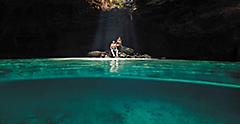
Previewing: Promo Dashboard Campaigns

My Personas
Code: ∅.
Mayan tour: Discover the Best of South Mexico Paradise and Ancient Past (9 Days)
🇲🇽 Mexico Mayan tour: Discover the Best of South Mexico Paradise and Ancient Past (9 Days)
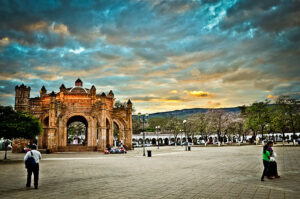
The Mayan tour is for those who want to see the top natural and cultural attractions of the Mayans in Mexico. From the welcoming streets of Chiapa de Corzo, cruise through the amazing Sumidero Canyon and embrace the colonial charm of San Cristobal de las Casas. Explore the natural wonders at Agua Azul and Misol-Ha waterfalls, uncover the secrets of Palenque’s Mayan ruins, and get close to the wild at Miguel Colorado. Step into Campeche’s UNESCO-listed past, spot pink flamingos in Ria Celestun Biosphere Reserve, and decode the mysteries of Chichen Itza and Ik Kil cenote. Discover the tranquil beauty of Valladolid, the beachside charm of Tulum, and the vibrant energy of Playa del Carmen . Your Mayan tour concludes on a high note, leaving you with lasting memories of Mexico’s rich history and natural splendor.
- Take a boat tour in Sumidero Canyon to see impressive waterfalls, mystical caves, and incredibly steep cliffs.
- Have a swim and enjoy and incomparable beauty of Agua Azul, a series of spectacular waterfalls in Chiapas.
- Witness fascinating ancient rituals and beliefs blended with modern Christianity in San Juan Chamula.
- Admire the grandeur of the buildings and the craftsmanship of the sculpted Maya reliefs in Palenque.
- Sunbath on fine white-sand beaches and swim in the clear blue-green waters in Playa del Carmen.
How is this tour different?
Authentic how this tour provides an actual image of the destination, life, and practices of the host community..
We do our best to make our trips educative and fulfilling, in which travelers can interact with local populations, learn about their traditions, and culture, and connect with their core values.
A tour with impact ? How this tour positively affects the destination and local communities on economic, socio-cultural, and environmental dimensions.
We support the UN's Sustainable Development Goals. Our tours are aligned with SDG 8 and 12, focusing on empowering local communities and promoting sustainable consumption and production practices. We take tourists to underdeveloped regions, creating opportunities for economic growth while respecting local traditions and educating communities on sustainable approaches.
Other ? Other advantages this tour offers to travelers.
- Small groups of up to 12 travelers: closer communication, easier coordination, more adventures & fun!
- Off-the-beaten-track tours with maximum immersion in local nature, culture, and traditions.
- The easy-going atmosphere of our tours is perfect for informal travel & making new friends among co-travelers and locals.
Day 1: Chiapa de Corzo
Bienvenidos a Chiapa de Corzo – one of the most beautiful towns in Chiapas, well known for its warm people and colorful Renaissance architecture. Arrive at any time and independently transfer to your accommodation in Chiapa de Corzo. On Friday evening, meet your group and Tour Leader: welcome meeting, optional dinner, and get-together with the rest of the group.
- Accommodation : conveniently located, locally-owned hotel/B&B in Chiapa de Corzo
- Meals Included : breakfast
- Activities Included : welcome meeting

Day 2: Chiapa de Corzo - Canyon Sumidero - San Juan Chamula - San Cristobal de las Casas
In the morning, immerse yourself in the awe-inspiring Sumidero Canyon on a boat trip to enjoy the sight of impressive waterfalls, enter mystical caves, and see the cliff where Chiapanec Warriors committed suicide instead of being forced to surrender to the Spanish Conquistadores. Afterward, move for an orientation walk and optional lunch to San Juan Chamula, the center of the independent Tzotzil ethnic group famous for their unique religious practices. In the evening, arrive at San Cristobal de las Casas. Set in a gorgeous highland valley surrounded by pine forests, this beautiful colonial city has been a popular travelers’ destination for decades. Check-in, orientation walk, optional dinner, and get-together with the group in the evening.
- Accommodation : conveniently located, locally-owned hotel/B&B in San Cristobal de las Casas
- Activities Included : boat tour in Sumidero Canyon; orientation walks in San Juan Chamula and San Cristobal de las Casas
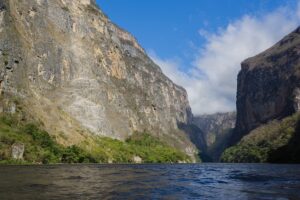
Day 3: San Cristóbal de las Casas - Agua Azul and Misol-Ha Waterfalls - Palenque
In the morning, continue with the tour by visiting two stunning waterfalls. First, see the unique cascading falls of Agua Azul, then swim in a mineral-rich pool beneath the 35-meter-tall Misol-Ha. Hereafter, move to our last stop of the day – “Magical Town” of Palenque. Check-in, a walk in the historic center of the town, and an optional dinner, and get-together with the group in the evening.
- Accommodation : conveniently located, locally-owned hotel/B&B in Palenque
- Activities Included : guided visits to Agua Azul and Misol-Ha waterfalls; orientation walk of Palenque
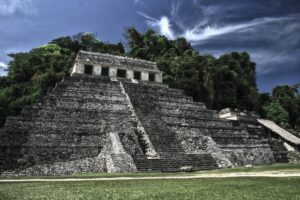
Day 4: Palenque - Miguel Colorado Cenotes - Campeche
In the morning, after breakfast and check-out, go to explore the UNESCO-listed Palenque Archeological Zone. A prime example of a Mayan sanctuary of the classical period, it flourished between AD 500 and 700, when its influence extended throughout the basin of the Usumacinta River. In the afternoon, continue to Miguel Colorado – two large scenic cenotes with a spiffy new eco-center and a private nature reserve. Optional lunch, kayaking, swimming, and zip-lining over one of the cenotes. There, we will also hike along hilly, rocky trails keeping an eye out for spiders and howler monkeys.
Evening arrival, optional dinner, and get-together in Campeche. A true historical fairyland, its UNESCO-listed colonial center represents a tight enclave of restored pastel buildings, narrow cobblestone streets, fortified ramparts, and well-preserved mansions. Check-in, a walk in the historic center of the Campeche, optional dinner, and get-together with the group in the evening.
- Accommodation : conveniently located, locally-owned hotel/B&B in Campeche
- Activities Included : guided visit to Palenque, Miguel Colorado Cenotes (kayaking, swimming, zip-lining, monkey watching), walk in Campeche
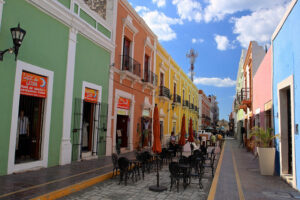
Day 5: Campeche - Ria Celestun Biosphere Reserve - Celestun
In the afternoon, after a visit to the 19th-century Fort of San Miguel in the suburbs of Campeche, continue the Mayan tour in Ria Celestun Biosphere Reserve. This UNESCO-listed protected area is a gift of great beauty where you can observe pink flamingos together with a wide variety of bird species in their natural habitat. Flamingos-watching boat tour, swimming in a local cenote, and transfer to the nearby beach town of Celestun. Check-in, a walk in the town, optional dinner, and get-together with the group in the evening.
- Accommodation : conveniently located, locally-owned hotel/B&B in Celestun
- Activities Included : guided visit to Fort of San Miguel (Campeche); entrance and boat tour in Ria Celestun UNESCO Biosphere Reserve (flamingo watching + visit to cenote)
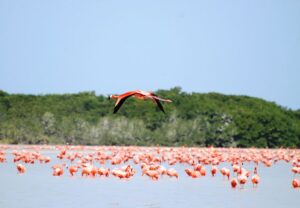
Day 6: Celestun - Chichen Itza - Cenote Ik Kil - Valladolid
In the morning, after breakfast and checkout, head for UNESCO-listed Chichen Itza. The most famous and best restored of the Yucatán Maya sites, it is considered one of the new Seven Wonders of the World. Many mysteries of the Maya astronomical calendar are made clear when one understands the design of the ‘time temples’ here.
In the afternoon, continue to Ik Kil – arguably one of the most beautiful cenotes in Mexico that was considered sacred by the Mayans who performed human sacrifices to their rain god. In fact, in order to reach the water, you have to climb down 26 meters. The water is 40 meters deep while its diameter is 60 meters. Evening arrival, accommodation, optional dinner, and get-together with the group in Valladolid. Once known as the Sultana of the East, Yucatán’s third-largest city is known for its quiet streets and sun-splashed pastel walls.
- Accommodation : conveniently located, locally-owned hotel/B&B in Valladolid
- Activities Included : guided visit to Chichen Itza; entrance to Cenote Ik Kil
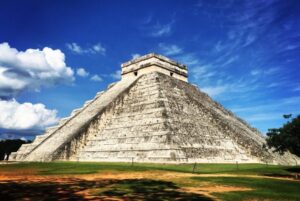
Day 7: Valladolid - Tulum - Playa del Carmen
In the morning, after an orientation walk of Valladolid, go to explore Tulum – the only Maya ruins located directly on the beach. Once there, you will learn the history behind this location as you walk through different areas of the site. You can also walk down to the amazing beach and enjoy the white sand and turquoise water, and see wild iguanas and beautiful tropical foliage.
In the afternoon, arrive in Playa del Carmen, an idyllic place located in the heart of the Riviera Maya with fine white sand and blue-green waters, where you will always find a hammock and an umbrella to sunbathe and rest, especially on the edge of town that offers the quietest beach areas. If you prefer action, in Playa del Carmen you will find water activities such as windsurfing, jet skis, kayaking, or diving in the impressive Maya coral reef. Accommodation, orientation walk, optional dinner, and get-together with the group.
- Accommodation : conveniently located, locally-owned hotel/B&B in Playa del Carmen
- Activities Included : guided visit to Tulum Archeological Zone; orientation walk in Playa del Carmen
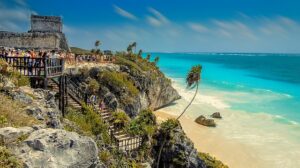
Day 8: Playa del Carmen
Free program: relax on the beach sipping a cocktail, try numerous outdoor activities (scuba diving, snorkeling, sea kayaking, parasailing, ATV riding, etc.), or take a day trip to some of the nearby natural attractions or Maya ruins. Optional farewell dinner and get-together with the group in the evening.
- Accommodatio n: conveniently located, locally-owned hotel/B&B in Playa del Carmen
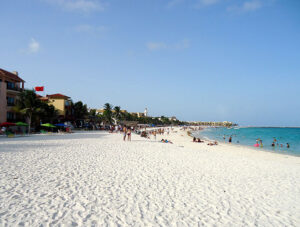
Day 9: Playa del Carmen
Last day of the Mayan tour. Choose by yourself when to leave – Cancun International Airport is just 50 km away and is well served by taxis and buses.
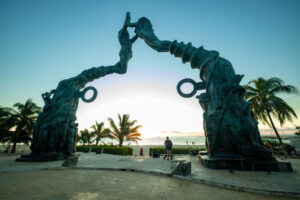
- This tour is private : only your group will participate.
- The price per person is variable and depends on the size of your group (please choose the number of participants in the booking calendar ➡️ to see the final price).
Local Expert Guides
English/Spanish Tour Leader service
Accommodation
8x nights in conveniently located, locally-owned B&Bs/hotels
Transportation
Private vehicle
8x breakfasts
Walking Tours & Orientation Walks: Chiapa de Corzo, San Juan Chamula, San Cristobal de las Casas, Campeche, Valladolid, Playa del Carmen. History & Culture Experiences: guided visits to the Fort of San Miguel (Campeche); 3x archeological zones – Palenque, Chichen Itza, Tulum. Nature Experiences: Canyon Sumidero (boat tour); Miguel Colorado Cenotes (kayaking, ziplining, swimming); 2x waterfalls – Agua Azul & Misol-Ha (swimming); Cenote Ik Kil (swimming); Ria Celestun Biosphere Reserve (flamingo-watching boat tour, visit of a cenote).
Personal expenses
Flights are not included: check our partner deals .
Travel insurance is not included: find insurance tailored for you.
Cancellations
Most of our 1-day tours can be canceled up to 48 hours prior to the departure.
Please see our Cancellation Policy for more info.

Frequently Asked Questions:
How to book.
To reserve the tour, please choose the date and complete the booking form. Once finished, you will receive a booking confirmation in your email.
How can I contact the tour organizer?
You can find the contact phone number and email of the tour organizer in the confirmation email.
Can I talk to someone?
Except for the information on this page, you can see full terms & conditions from each tour organizer before completing your booking.
About Vibe Adventures
Unless expressly stated otherwise, the tour and activity providers (“Organizers”) listed on vibeadventures.com are independent third parties and are not agents or affiliates of Vibe Adventures. Therefore, Vibe Adventures shall not be held liable for any injuries, sickness, accidents, delays, neglect, fraud, poor weather conditions, negative consequences, or expenses arising from or associated with the Organizers, their tours and activities, or those of their affiliates. If the tour does not include insurance, the travelers are responsible for obtaining travel insurance, as well as passports, appropriate visas, and necessary vaccinations.
Cancellations & Modifications
To cancel or modify your booking, please contact the Organizer directly using the email or phone number provided in the booking confirmation. Cancellations and modifications are subject to availability and the approval of the Organizer in accordance with their booking terms and conditions, which are made available to you during the booking process.
If you have any other questions please contact us .
Related tours

Puerto Morelos Tour: Extreme ATV’s, Zipline and Cenote (7 h)
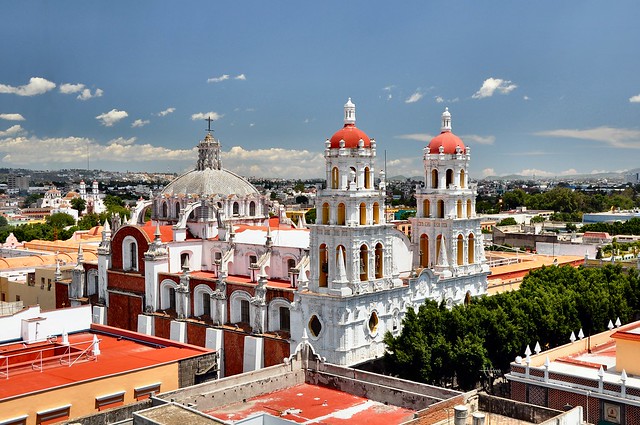
Puebla City Tour: Visit a Colonial Town and Admire Fireflies Sanctuary (10h)
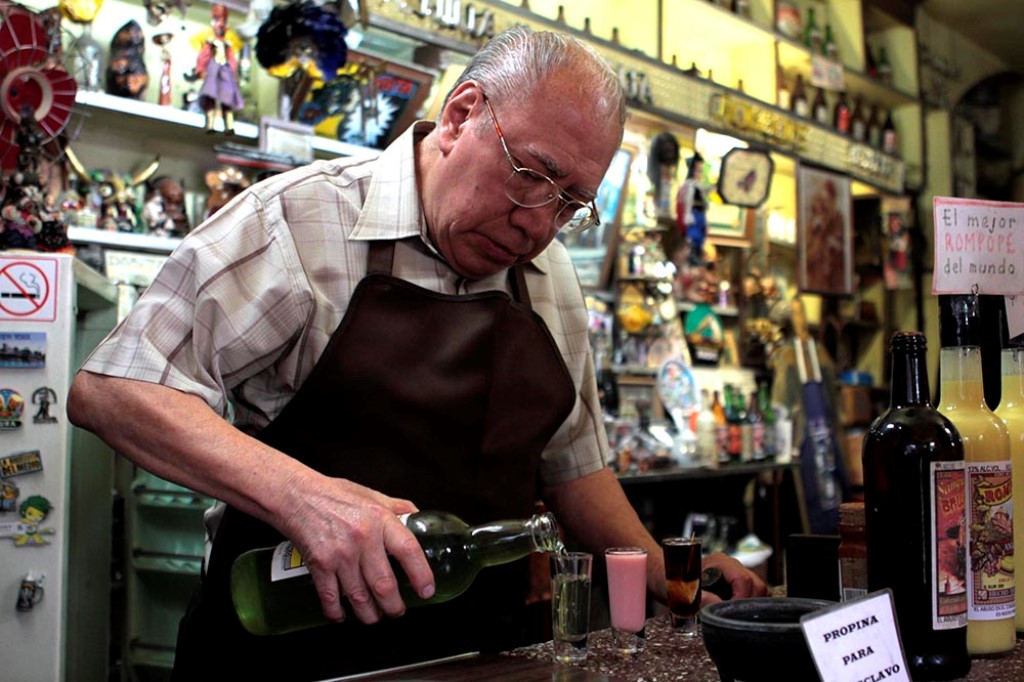
Cantina Tour Mexico City: Savor Spirited Stories and Sips (5 h)
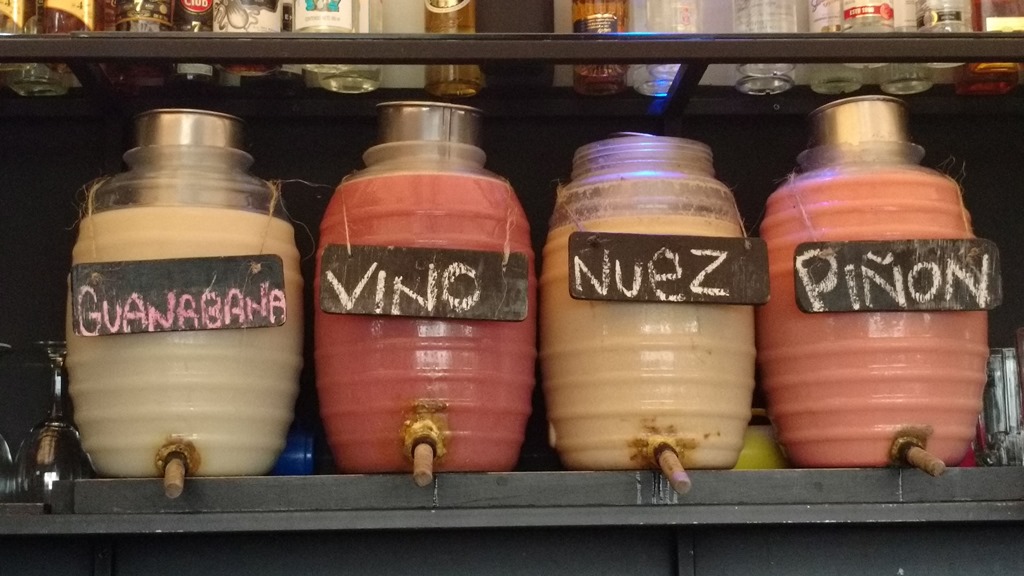
Pulque Bar Mexico City: Taste the Drink of Mexican Gods (4 h)
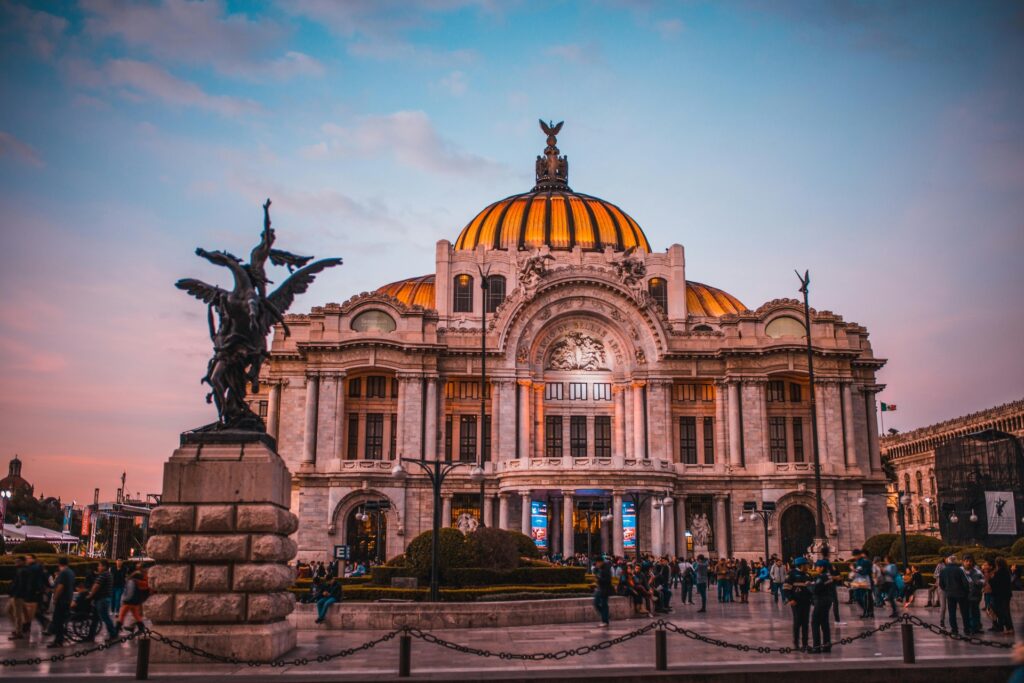
Mexico City Architecture Tour: Venture in the Historic and Modern Marvels (4h)
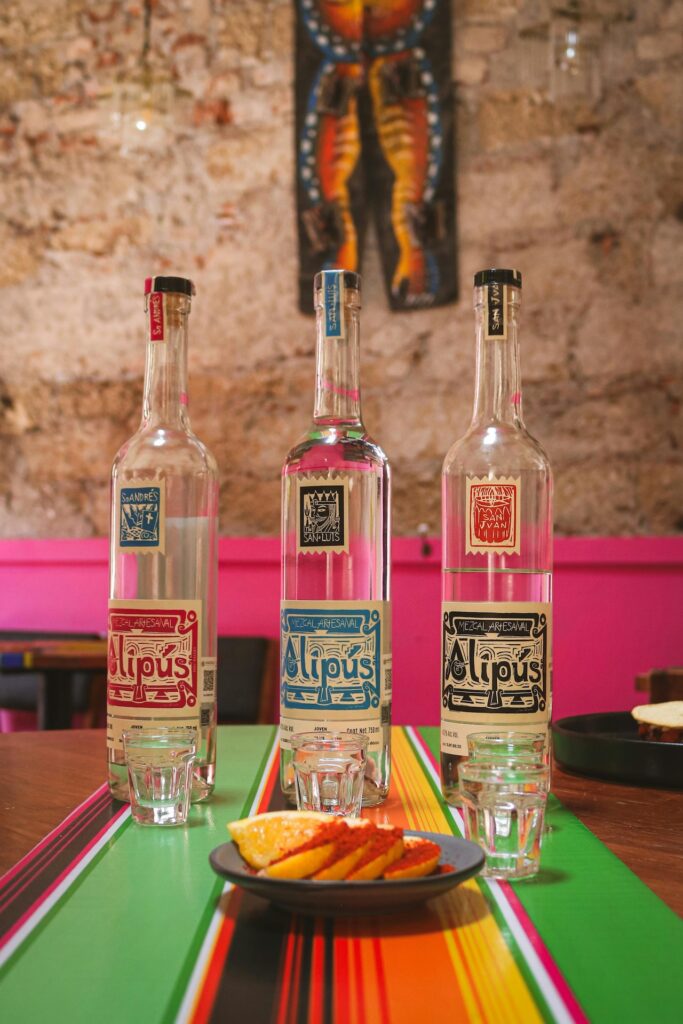
Mezcal Tour Mexico City: Enjoy Cultural Sips and Mariachi (4h)
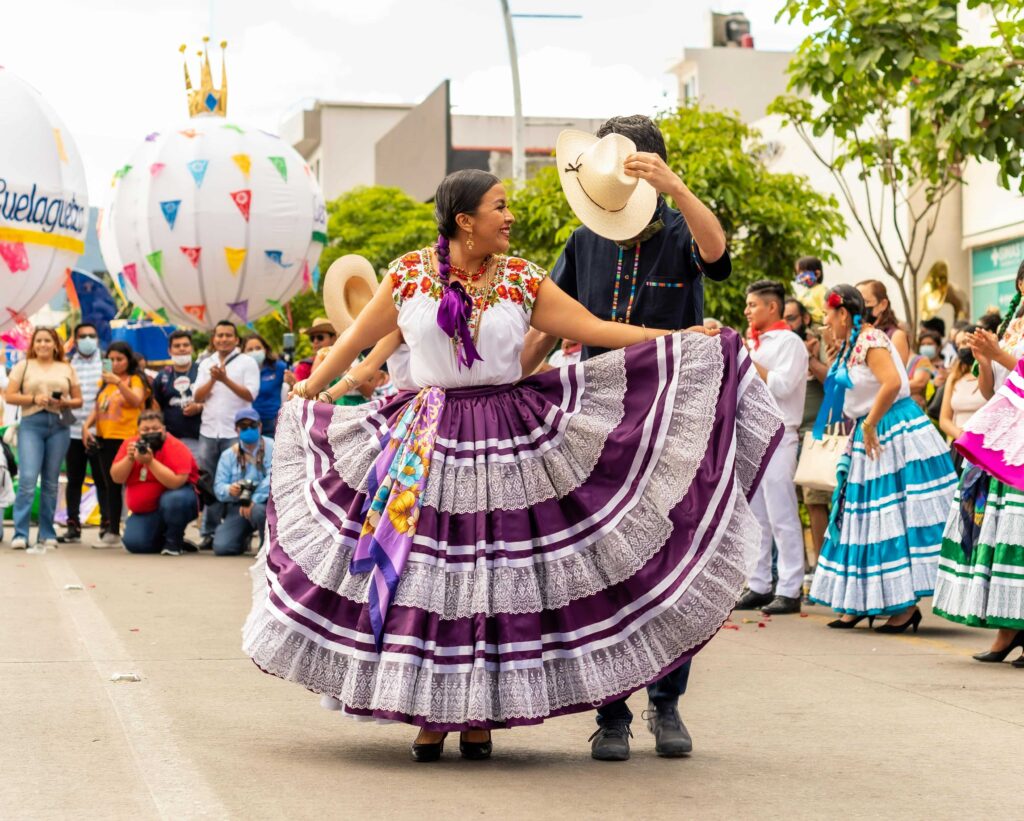
Oaxaca Guelaguetza: Dive into this Cultural Ancient Festival
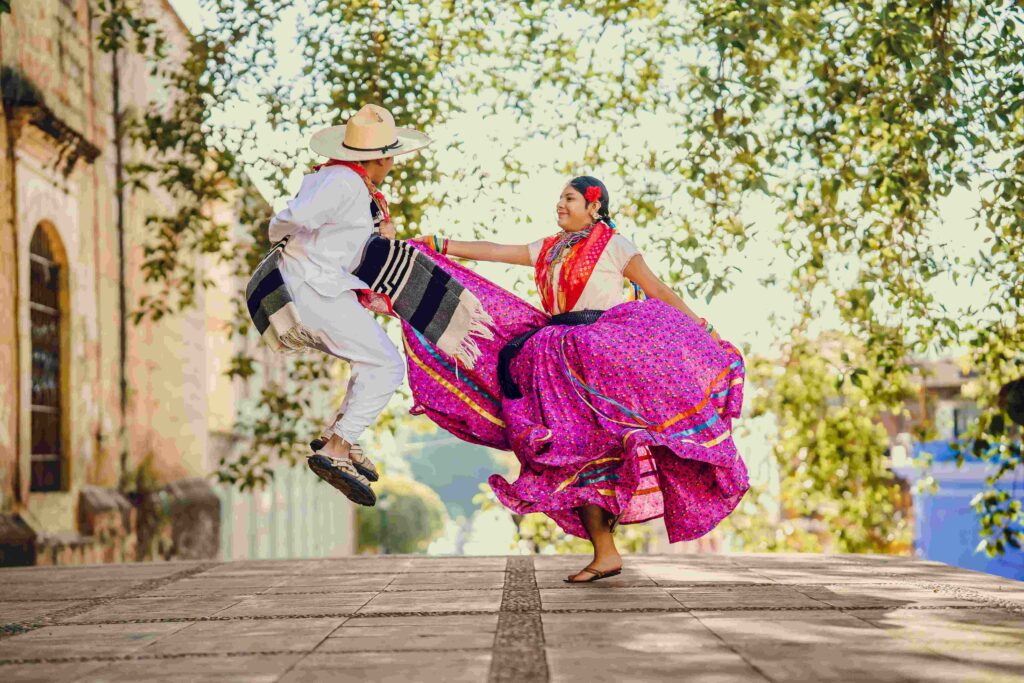
Guelaguetza Festival: Explore this Magical Tradition of Oaxaca
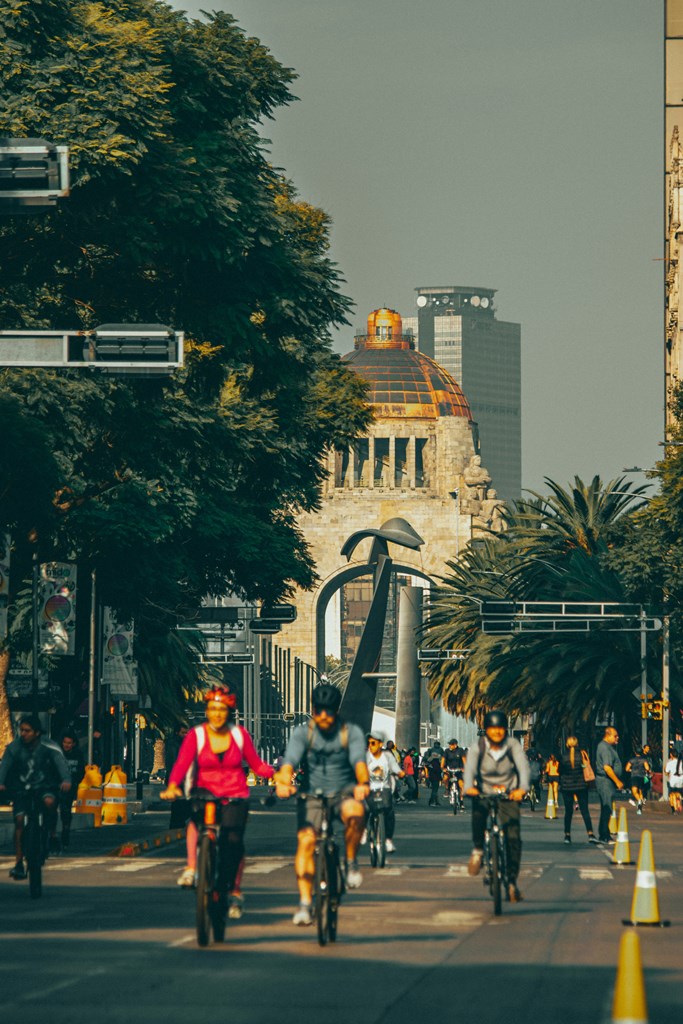
Mexico City Bike Tour: Ride into the Marvels of the Capital (4 h)
See all 🇲🇽 Mexico tours
Get 5% off this tour with "Back2Travel" promo code or check similar tours 🌎 Keep safe & travel soon!

This Virtual Tour of Mexico's Tulum Ruins Shows How the Maya Lived
T he Tulum Archaeological Zone is one of Mexico's greatest treasures and its third most-visited site (after Teotihuacan and Chichen Itza). Mostly built during the 13th century in the post-classic period, this Maya city was a major port for trading and commerce.
Though the walled city was abandoned less than a century after the Spanish arrival, it is surprisingly well-preserved and deserves a spot on everyone's Mexico bucket list. But since we can't all hop on a plane at any whim, this virtual tour lets you enjoy the magnificent site from the comfort of your home ... for now.
The Entrance
Tulum, Mexico, is located in the Mexican state of Quintana Roo on the Yucatan peninsula about a two-hour's drive south of Cancun. To visit the Tulum ruins, start in the center of Tulum Town, from where you can take a taxi or a shuttle. It's also possible to walk to the Tulum archaeological site if you like the idea of a one-hour stroll. Keep in mind that the journey is very pretty, but the heat is intense.
Once you're at the ruins, you'll see a large stone wall that once protected the city, along with a watchtower. This feature is remarkable because the Maya rarely used fortifications, proving Tulum's importance due to its strategic position. (That said, other cities like Mayapan had more extensive walls.)
Continue on, and you'll pass through a stone archway to find the ticket booth, where tickets can be purchased and official guides are available to hire. While having a guide isn't necessary, you'll appreciate the site much more if you understand what life here was like.
RELATED: 35 Fascinating Facts About the Maya
Northwest House
The jungle soon gives way to a large cleared space filled with ruins. As you enter, the first structure you'll see is the Northwest House, thought to have been the house of an important member of the community. How do we know? Because it has a stone platform, something reserved only for the upper classes.
You'll also see platforms with nothing on top near this house and throughout this site. These mark the homes of residents who were not as wealthy and who used materials that could not withstand time like stone does.
House of Columns
Continue on the path southward until you see the House of Columns. This large residential building once housed nobles. There is evidence of spaces that would have been used to receive visitors, many of whom came to Tulum to trade.
A row of columns marks the main entrance and the place where the main roof of the house used to be. One feature that stands out here is the thatched roof over a room that houses a statue of the Descending (or Diving) God, a deity closely linked to war and commerce.
House of Chultun
Keep walking south on the main road towards the House of Chultun, thought to be a residence. It has two staircases, columns and a shrine.
Its most fascinating feature is the chultun, a kind of cistern. The residents of the building would collect rainwater to be used during dry spells. It also probably served as an emergency water source when hurricanes came and caused damage around the area.
Temple of the Frescoes
This beautifully preserved building hides a mural whose colors are still perceptible. Reflecting the Maya worldview, the mural is divided into three levels: The lowest represents the underworld, the middle represents our world, and the highest represents the place of the gods. Sadly, you won't be able to enter the room anymore.
But pay attention to the temple doorway, where you'll find a carving of the Descending God.
In front of the Temple of the Frescoes, you'll find the most important building in Tulum: The Castle.
Perched on a cliff over the Caribbean Sea, this structure is a 25-foot pyramid. The large upper temple was reached by a series of steep steps (though visitors can't climb them) and has yet another sculpture of the Descending God. Two smaller temples stand on the lower level. Throughout the structure, you can see serpents and stucco masks.
The Castle is where the city's religious, political and social ceremonies would occur. Of course, many of these would have taken place in the temples, but there's also a platform in front of the structure that was used for dances. Besides being the spiritual and social center of the city, this structure served as a lighthouse. When canoes came from the sea, they could use its beacon to find their way to shore and avoid the surrounding reef.
On this part of the tour, you'll also get gorgeous views of the Caribbean.
Temple of the Descending God
It wasn't enough for the Maya people in Tulum to have numerous shrines and statues dedicated to the Descending God. This deity held such importance that they also built a dedicated temple to him.
The small temple is on a higher level, with short steps and a single entrance. You won't be able to peer inside, but you can admire it from the outside, where a sculpture of the god can be seen. As usual, he is upside down, has wings and holds an object with two hands.
RELATED: Where to See the Most Impressive Maya Ruins
Temple of the Wind God
Keep following the path next to the coast to reach one of the most photographed structures in the Tulum Archaeological Zone: the Temple of the Wind God. (You'll pass by the beach, but resist temptation, and don't go in just yet!)
Though the temple is small, it is dedicated to K'uk'ulkan, or the feathered serpent god known as Quetzalcoatl to the Aztecs. This deity was considered the god of creation, rain and wind, making him extremely important to daily life. Modern Maya were known to use this site for religious purposes up until the early 20th century.
It's an excellent example of a style of shrine that does not allow access to the inside. People would have venerated the sculpture protected wherein from the outside.
Cenote House
Just west of the Temple of the Wind God is the Cenote House. Often ignored by tourists, this small structure hides a cenote (a natural sinkhole) that once served as another water source for the city.
You can't see the cenote, but there are plenty around the ruins that you can visit after your (real-life) tour, including the Gran Cenote.
It's time to reward yourself with a little dip in the Caribbean Sea. Head back on the main path along the coast until you see a beach access path. Take the stairs to a small cove in between the Temple of the Wind God and the Castle. The views are absolutely amazing.
Tulum was one of the few major Maya cities built on the coast, so it offers the unique chance to enjoy Maya ruins from the sea.
The combination of the stone structures perched on cliffs, the white sand and the baby blue water of the Caribbean lands this beach among the most beautiful in Mexico .
Leaving the Tulum Ruins
Once you're back from the beach, you can walk along the coastal path to enjoy the views a little longer.
As you make your way to the exit, take a look around this incredible archaeological treasure — and say goodbye to the wild iguanas that now inhabit it.


- Caribbean / Mexico / Ports of Call
The Best Cruise Tour to See Mayan Ruins Near Costa Maya
by Prof. Cruise · Published April 30, 2019 · Updated June 26, 2019

When you first booked your cruise and saw “Costa Maya” as a port of call, did the little voice in your head – the same one that’s constantly opining about the benefits of chocolate and steering you away from green vegetables – wonder if this port would offer an opportunity to see ruins from those most famous of ancient peoples known for their calendar and Logosyllabic scripts? What were they called again? Oh yeah, the Mayans. Costa Maya – I get why you made that connection brain. Good job. Sure, I’ll reward you with some chocolate.
While your brain may be a world-class chocoholic, the Mayans were processing cocoa over 2,600 years before you experienced your first chocolate induced release of endorphins: “those people were smart, I need to learn more about them!”
Well you’re in luck because Costa Maya does allow for excursions to see Mayan ruins. While the three sites feasible to visit during your one day at port in Costa Maya – Chacchoben, Dzibanche, and Kohunlich – are less well known than ruins discovered earlier and more fully excavated such as Tulum and Chichen Itza, they offer a rich and fascinating experience.
Which Mayan Site Should I Choose for My Port Day in Costa Maya?
“So tell me, Prof. Cruise, which of these sites is the best? Chacchoben, Dzibanche, or Kohunlich?” I’ve only visited one out of the three; but I can illuminate why we selected Chacchoben and provide some basic information about the other two. (That was a classic professor’s dodge – answer the question without really answering the question.)
Why we Chose Chacchoben to see Mayan Ruins While at Port in Costa Maya

It’s much closer. That was the only reason we chose Chacchoben over Dzibanche and Kohunlich. In our group we had “H,” my 5 year-old travel/teaching assistant, and my father-in-law (Poppi) who was recovering from a liver transplant. So unless it was the difference between the Grand Canyon and a pothole (although “The Grand Canyon” is how I described a particularly perilous pothole on Spring Street to the Seattle Department of Transportation just last week, so the difference between them isn’t always significant), we were going with the one requiring the least number of minutes in a van. Which would mean less time worrying about Poppi’s new liver falling out of his incision every time we went over a Grand Canyon sized pothole and “H” announcing the status of his bowels, “I need to poop!” to total strangers.

Travel Times to Chacchoben, Dzibanche, and Kohunlich from the Cruise Port in Costa Maya
Travel times from port to the three sites closest to Costa Maya are as follows:
- Chocchoben: 50 minutes
- Dzibanche: 1 hour 50 minutes
- Kohunlich: 1 hour 50 minutes
So for us, the choice of site was an easy one. But then we had to decide whether to book an excursion through the ship or go with a private company.
What’s the Best Tour Company to see Mayan Ruins in Costa Maya?

It’s always tempting to go with a ship excursion because they’re convenient, easy to book, and don’t require much research. The night before you arrive in Costa Maya: “oh, that sounds good. Let’s just do that.” And five minutes later you’re booked with tickets in hand for Chocchoben.
Most lines that cruise to Costa Maya (including NCL, which is what we were on) offer a 4 hour tour of Chocchoben for $99 ($79 for children).
In our case, we were on a 21 day sailing and cost was a major factor in choosing excursions considering how many ports we were visiting. We decided to research some private companies to see if we could find something less expensive. And that’s how we came upon The Native Choice .
With mostly 5 star reviews and a cost of $55 ($45 for children 6-12; under 6 are free) for a 4 hour tour, ding ding ding, we had a winner! They also offer tours to Dzibanche and Kohunlich for $75 ($65 for children 6-12; under 6 are free) each or a combined tour of both Dzibanche and Kohunlich available for ships in port for at least 10 hours for $100 ($85 for children 6-12; under 6 are free).
The Native Choice Tour to the Chocchoben Ruins
The online booking process was easy and I was immediately e-mailed a confirmation of my reservation with a receipt of my deposit paid and detailed instructions for the day of the tour. Upon learning that my husband would be able to join us for the cruise, I contacted them to see if I could add another person to our reservation and they were able to kindly accommodate us.
The Native Choice: Meeting Location
The confirmation e-mail included the following map with instructions on how to find their office located outside of the port area.

People call me “Dr. Cruise” for a reason. Sarcasm. That’s the reason. Because this doctor couldn’t follow these simple directions and we nearly missed our tour! We were the last group to arrive to vans loaded and ready to depart. Plan on giving yourself a bit of extra time to find The Native Choice office location and don’t forget to bring along the handy map!
The Native Choice: Transportation to the Chocchoben Ruins

We were in a group of ten and transported in a small, comfortable, air conditioned van like the one pictured above. We were treated to commentary about the area and the Mayan people as well as to some personal information about our tour guide, who was of Mayan descent himself, en route to our destination.
Before we arrived at the ruins, we made a stop at a pineapple stand where we were able to purchase a bag of fresh local pineapple with chili powder for $1.

While I like fruit just fine, I still consider it a health food and not a treat. Well this pineapple was like showing up for karaoke at your local bar only to find Chris Martin – lead singer of the band Coldplay for those of you unfamiliar with my rock star crush – at the mic. I passed up a 20 dollar bill to our guide and when he said he didn’t have enough change, I was like, “good because I want 20 more bags!” That pineapple was delicious. Plus, “H” hadn’t yet declared “I need to poop!” to the whole bus, so I figured he was probably backed up from three meals a day of cheese and instructed him to, “eat some fruit!” Which he was agreeable to do for the first time in his life. It was that sweet!
We arrived at the ruins, 60 minutes after setting off on our journey (factoring in 10 minutes or so for the pineapple), with happy bellies, with Poppi’s liver still safely on the inside of him, and after a miraculous zero bathroom stops for the kid who refused to go before we left our ship. So far, so good!
The Chacchoben Ruins: Discovered by Dr. Peter Harrison and Rediscovered by Another “H”

As we departed the bus in a parking lot seemingly plopped in the middle of the jungle, we were given a bottle of cold water and directed to some stands where additional drinks, snacks, and local trinkets were available for purchase. We bought some Mexican cookies and chips to try and used the restrooms before we reconvened and started the tour.

During our hour and a half long tour we learned all about each area of the ruins and about the history and culture of the Mayans. In 1972 an American archeologist named Peter Harrison accidentally discovered the ruins while flying over them in a helicopter on assignment for The Royal Ontario Museum. Our “H” approached the Chacchoben temples and other structures with the same awe and wonder that I imagine the original archeologists did as he explored and climbed Gran Basamento, perhaps not appreciating the historical significance to the same degree, but certainly taking delight in the construction and playground-like quality of the place.

The tour proceeded at a nice pace, with commentary followed by some time to explore each area on our own and take photos. I had to cover “H’s” ears a few times during explanations of some of the more gruesome aspects of Mayan culture – I can only assume the creator of Game of Thrones was taken to this place as a child with ears left exposed to talk of human sacrifice and the like. We also learned about the flora and fauna of the area which delighted Poppi and I as the two gardeners in our group.

Chacchoben for Those with Mobility Limitations
While the main circular path, covering the equivalent of about six blocks, would be manageable for most, there were some uneven patches of ground that would make pushing a stroller or wheelchair somewhat difficult and may present a tripping hazard for those unsteady on their feet. Consider a walking stick or cane or offering an arm if that’s the case for anyone in your party. There was also an optional steep stair climb up to another section of the ruins. It was pretty fun for those of us able to make it, but you’ll want to skip that part if you have balance issues or limited endurance.
As I mentioned, my father-in-law was recovering from a liver transplant. He needed to stop to rest at times, but was able to do so without any problems and avoided the more strenuous areas.
Prof. Cruise’s Best Tips for Enjoying Your Port Day at the Chacchoben Ruins
- Wear a wide rimmed hat and bathe in sunscreen. While I’m often mistaken for a friendly, but equally pesky ghost and can get a sunburn in my apartment with the lights off and shades drawn, the sun was relentless here and even those blessed with skin less prone to unsightly and painful freckling, blistering, and peeling (stay back boys, Mr. Cruise saw me first!) will want to take appropriate precautions.
- Pack bug spray. In addition to being prone to sunburn, my blood must taste like chocolate to mosquitoes. Because they attack me like a swarm of cruise ship passengers at the Lido buffet on embarkation day. Save your husband having to scratch that spot on your back you can’t quite reach, “a little to the left!” by packing bug spray.
- Drink plenty of water. During our visit in April it was HOT. Drink water and rest in the shade when needed. If I were going again, I’d also bring my portable fan and maybe an umbrella and not feel one bit embarrassed about it because everyone else would wish they looked so ridiculously cool and comfortable.
- Bring cash. While all the essentials are included in your fee, bring some cash (dollars are accepted) for pineapple and any optional items you might want to purchase. Carnival credit cards are not accepted so if you’re only 65,000 points away from a free cruise, you’re out of luck. And finally…
- Take time to marvel. Like I told Eric, “if the Mayans could figure out how to build this place without sophisticated machines and technology, surely you can figure out how to change the ink cartridge in the printer!”
Final Thoughts on the Chacchoben Ruins in Costa Maya

My strong suggestion would be to consider visiting the Chacchoben ruins via a private company versus a cruise ship excursion. Our group was small and we were able to arrive at the site before the crowds which made the experience more intimate and meaningful. We weren’t competing with 40-50 other people to hear our guide or get our questions answered and he was tuned into our particular needs (like for places to sit and shade).
But however you get there, go there. Or to one of the other two sites which I’m sure are equally impressive. They offer a fascinating look at a culture of people who came long before us. People who had to figure out how to live in the world during their unique time and place in history. To feed and shelter themselves. To communicate. To give structure to the passage of time. To govern. To trade with their neighbors. To answer lofty questions like, “why are we here.” To create art and entertain themselves. At times they were brutal and cruel. It wasn’t always rosy back then either.
There are many ways in which the specifics of their lives were so different than the lives of modern American tourists. But in the fundamental ways, they were exactly the same. And because of that, it’s important we learn the lessons they have to teach us. Like how to make the perfect cup of hot chocolate: mix cacao with water, honey, chili peppers, and cornmeal.
And with that, class dismissed .
*Check out my other Mexico port posts here . And don’t forget to subscribe to the blog (scroll up to the top right) and follow me on social media:
Share this:
Tags: Chacchoben ruins Costa Maya
You may also like...

Trip Report: South America/Antarctica Itinerary on the NCL Star
January 23, 2024
by Prof. Cruise · Published January 23, 2024 · Last modified February 7, 2024

The Best Excursion in Acapulco and the Tale of Doug, the Sea Turtle
February 10, 2019
by Prof. Cruise · Published February 10, 2019 · Last modified February 25, 2019

The Best Excursion for First-Time Cruisers to Skagway
May 18, 2019
by Prof. Cruise · Published May 18, 2019 · Last modified June 29, 2021
4 Responses
- Pingbacks 0
Very good blog post.Really thank you! Fantastic. eadeddddddaaekbb
Thanks for your kind feedback. I’m glad you enjoyed it!
Going here in Sept , useful information. Thank you!
My pleasure. Have a wonderful trip!!!
- Next story Victoria’s Butchart and Butterfly Gardens Excursion: Prof. Cruise Reviews
- Previous story Cruising Alaska: How to Spend a Day in Kodiak
About Prof. Cruise

Given name Sarah, but also answers to Prof. Cruise. Retired after 10 years as a college professor to focus full-time on her primary research interest: travel. With a concentration in cruising. Home port: Seattle. Mom of a shaggy-haired dog and a shaggy-haired human. Lover of books and dessert. Fancies herself a bit of a comedian – you’ve been warned.

Email Address
Subscribe To Blog
Search and you shall (hopefully) find!
Save on shore excursions.

Start your own travel blog with hosting from Bluehost!

Popular Posts

Copan Ruinas Honduras — Mayan ruins
The other option for getting to Copan Ruinas is to rent a car and drive yourself, or hire a private driver to take you there.
I wouldn’t recommend self driving unless you’re already familiar with driving in Central America. The roads to Copan Ruinas are rough, with lots of potholes and less than stellar drivers.
Trifinio Tours can provide one way transfers to the town of Copan Ruinas from San Pedro Sula, as well as from places in Guatemala or El Salvador, although this only makes sense if you plan to stay in the town for more than a day or two.
Otherwise, a day tour package can be one of the easiest and most efficient ways to visit Copan Ruinas, because it includes all of the transport and everything else you need to go see the ruins and then get on your way. I’ll list some good tour options below.
No matter how you choose to get to Copan Ruinas, it’s also a good idea to hire a local guide to show you around the Mayan ruins and explain everything you’re looking at. The whole experience is more valuable that way!

Copan Ruinas is famous for its intricate carvings
Best Copan Ruinas Tours
Here are some good options if you want to visit Copan Ruinas with a tour package:
- From San Pedro Sula: Mayan Ruins of Copan Day Tour – Viator
- From San Pedro Sula: Day Trip to the Mayan Ruins of Copan – GetYourGuide
- Copan Ruins Day Tour From Guatemala City – GetYourGuide
- Copan Ruins Day Tour From Antigua Guatemala – GetYourGuide
We’ve used Viator and GetYourGuide for lots of tours and activities around the world, and they’re great. Highly recommended!
How To Get To The Mayan Ruins At Copan
Once you arrive in the town of Copan Ruinas, it’s easy to get to the Mayan ruins. They’re just a short distance outside of town, approximately one kilometer from the Copan Ruinas town center.
You can walk to the ruins from town in about 15 minutes, or you can hire a tuk-tuk taxi to drop you off there for a couple US Dollars. I think the tuk-tuk is the best way to go because it’s so cheap and easy.
Alternatively, if you booked a tour for Copan Ruinas, they’ll take you straight to the ruins so you can get started sightseeing right away.
Copan Mayan Ruins: What To Expect
The ruins of Copan are spread over a fairly large area in the archaeological park, with temples, statues, staircases, tunnels, residential areas, a ball court, and even a cemetery and museum.
You can see the main highlights of the park in about 2 hours or so, although if you really enjoy Mayan history and take the time to see the museum and tunnels at Copan, then I’m sure you could spend much longer.
The whole area is easily walkable. Most of the time, you’ll be walking on grass or flat rock. Just watch your step if you climb the stairs, because some of them are rough and uneven.
While other Mayan ruins like Tikal and Chichen Itza are mainly known for their impressive buildings, the Copan ruins are full of wonderful carvings and ancient hieroglyphics!

Lizard face in the Mayan ruins

The ball court at Copan
• Best Things To See At Copan Ruinas
- Monument Plaza. This grassy open plaza is one of the first things you’ll see when you enter the archaeological park. It has a bunch of amazing Mayan statues spread out around the area, and there’s a pyramid shaped platform you can climb for better views of Copan.
- Ball Court. Mesoamericans loved their ball games, so naturally there’s a ball court at Copan. This is one of the biggest ball courts ever built by the Mayans. Later on, don’t forget to look down at the ball court from above at the acropolis. It’s one of the most iconic photos of Copan Ruinas!
- Hieroglyphic Stairway. This stone staircase has 63 steps and 1,800 glyphs, making it the longest known hieroglyphic text of the Mayan civilization. The text is still being reconstructed today.
- Acropolis. The acropolis was the heart of Copan. It’s divided into an east and west court with lots of stone carvings, statues, and severed heads from statues that have fallen. Some of these figures are not very obvious at first, so take your time or you might miss them!

Statue of an ancient Maya ruler at Copan Ruinas
• Parrots At Copan Ruinas
You can see lots of amazing red parrots at Copan Ruinas! These are scarlet macaws, the national bird of Honduras, and they like to hang out in the trees near the entrance of the archaeological park.
The birds are wild, so please remember not to touch or feed them. They have sharp beaks and I’m sure they could do some damage if they wanted. They also need a special diet to stay healthy like in the wild.
As long as you don’t bother them, the parrots at Copan Ruinas are very relaxed, and it’s easy to get up close to them and take some great pictures. They can be seen anywhere in the ruins, but near the entrance is generally the best place to spot them.
If you want to see even more parrots in Honduras, you can check out the Macaw Mountain Bird Park, which is just a short distance north of Copan Ruinas town.

You can see lots of parrots at Copan Ruinas

Scarlet macaw in the treetops
• Entrance Fees
- Archaeological Site: $15 USD (370 Honduran lempira)
- Tunnels (Optional): $15 USD
- Museum (Optional): $7 USD
- Guide (Optional): $30 – $40 USD per group
Nowadays, you can pay the Copan Ruinas entrance fee with cash or credit card. I used a foreign Visa credit card with no issues.
• Opening Hours
- 8 AM – 5 PM
The Mayan ruins are open seven days a week, every day of the year, from 8 AM to 5 PM. This includes the museum and tunnels.

Jungle covered ruins
Best Time To Visit Copan Ruinas Honduras
Morning is the best time of day to visit Copan Ruinas because you can avoid some of the heat and crowds.
During the daytime, temperatures can reach 32° Celcius (90° Fahrenheit), so it’s much more pleasant to tour the ruins in the morning when it’s still relatively cool. When I started touring the ruins at about 9 AM, there were not too many tourists at all, but leaving later in the day was a very different story!
Any month is okay for visiting Copan Ruinas. The wet season in this part of Honduras runs from May to October, so you’re more likely to encounter rain in those months. However, it gives the ruins a nice green background of jungle foliage, so that’s a plus, especially if you plan to take pictures.
The dry season in Copan Ruinas runs from November to April, so these months have the best chance of nice, sunny weather. The temperatures are also a bit cooler and more manageable from November to January, with daytime highs of less than 26° Celcius (80° Fahrenheit).

Wall detail near the ball court
History Of Copan Ruinas Honduras
Ancient Copán was inhabited by Central American people for more than 2,000 years, and it was a powerful capital city of the Mayans from the 5th to 9th centuries AD.
During this time, Copan thrived and became a cultural hotspot with advances in math, astronomy, and hieroglyphic writing. At its peak, more than 20,000 people lived in the Copan area, and their kingdom covered an area of over 250 square kilometers (100 sq mi).
For unknown reasons, Copan’s population declined majorly in the 8th and 9th centuries, and the kingdom gradually weakened and collapsed. Earthquakes and nature also took a toll on what was left of the buildings.
By the time the Spanish arrived in the 16th century, Copan had already been long abandoned. The ruins were re-discovered in 1570 by Diego García de Palacio, but Copan wasn’t excavated until the 19th century.
Since 1980, Copan is recognized as a UNESCO World Heritage Site for its outstanding art, architecture, and historical significance. Today, it’s one of the best places to visit if you’re traveling in Honduras!

Is Copan Ruinas Safe?
Honduras doesn’t have a great reputation for safety, but the Copan Ruinas area is known as one of the safest parts of the mainland. That goes for the quaint little town of Copan Ruinas, as well as the actual Mayan ruins just outside of town.
People who go to Copan will tell you it’s a pretty safe place to visit, and I would have to agree based on my own experience as a solo traveler. I carried my Fuji camera and took lots of pictures at the Mayan ruins, but I kept it hidden discreetly in my bag when I was walking around town or at the ruins.
It’s true that Honduras has one of the highest murder rates in the world, but apparently the bulk of this is from drug gangs fighting each other, and other violence in the big cities. Tourists are generally not the target. That doesn’t mean we’re immune to it, but the main place to be careful is in big cities like Tegucigalpa and San Pedro Sula.
Lots of international tourists come to Copan Ruinas every year, and I haven’t heard of any recent reports of crime, robberies, or violence toward tourists. I will update this travel guide if anything changes. Overall, I think it’s pretty safe.
If you want some extra peace of mind, you could also bring a hidden travel belt (like this one on Amazon ) and put some of your valuables in it. That’s what I did with my phone, cash, and credit cards on my first visit to Honduras.

A friendly macaw walking the grounds at Copan
Other Tips For Copan Ruinas Honduras
- Where To Stay: There are plenty of safe and comfortable hotels in Copan Ruinas town . I stayed at Hotel La Escalinata , which has a friendly owner, free breakfast, and jungle views from the terrace. Two other good options are Hostel Iguana Azul or Terramaya Boutique Hotel .
- Where To Eat: There are lots of good restaurants to choose from in Copan town. My favorite was Los Asados near the town center, which has great food and huge portions! I got mixed meat with chicken, beef, and sausages, plus a side of plantains and refried beans. Some other good places to eat are Sol de Copán , Cafe Via Via , and Mayan Harvest cafe .
- What To Wear: Dress for the tropics! Temperatures can be hot and humid here in the daytime, so you’ll want to have lightweight summer clothing. I wore shorts and flip flops. Just remember to dress modestly since Copan is an important place for the locals.
- Currency: Some places accept credit cards, including the Mayan ruins, where you can use your card to pay the entrance fee. However, a lot of places in town are cash only, including many of the hotels and restaurants. Bring some cash in case you need it. You can pay in Honduran lempira or US dollars.
- ATMs: If you run out of cash, there are banks with working ATMs in Copan Ruinas town.

More carvings in the Copan acropolis
- Tour Guides: There are always local guides for hire standing around at the entrance to the Copan archaeological park. Expect to pay around $30 – $40 USD per group, but the prices may vary depending on the size of your group.
- Bathrooms: There are public toilets at the entrance to the park, but no bathrooms once you get to the ruins, so you’ll want to take care of business before you start touring the ruins.
- Snacks & Drinks: There are little shops at the entrance to the park where you can buy snacks and drinks. I got some bottled water here after a long day of touring the ruins.
- Cell Service: There is cell service at the Copan park if you need to make a phone call or send a text message. This is handy if you’re expecting a driver to pick you up after touring the ruins.
- Drones: They don’t allow drones at the Mayan ruins. They’re pretty strict about this, so I wouldn’t recommend bringing a drone at all.
- Bug Spray: I didn’t notice any bugs or mosquitoes at Copan during the dry season, but it’s still a good idea to apply bug spray just in case. This is especially true if you visit in the wet season, when there are likely to be more bugs. Malaria is not an issue at Copan. I would not take anti-malarials.
- Wildlife: Obviously there are the parrots (scarlet macaws) at Copan Ruinas, and you can see many other kinds of colorful birds in the treetops as well. If you’re lucky, you might also see monkeys or other animals in the area.

Hieroglyphic stairway
Is Copan Ruinas Worth It?
I enjoyed Copan Ruinas even though the drive was a bit long and tedious. I probably wouldn’t rank these Mayan ruins up there with something really epic like Tikal Guatemala , but I’ve already seen Tikal before, and this was something new.
One of the good things about the somewhat remote location of Copan is that it’s kept it from getting too touristy or crowded. I mean sure, there are plenty of comfortable hotels and restaurants, and you’ll probably see other international travelers when you visit, but the whole area is still quaint and it feels like you’re off the beaten path, which I liked.
Overall, if you enjoy archaeological sites, culture, history, and wildlife, then I think Copan Ruinas is definitely worth a visit!

Monument plaza
More Things To Do In Copan Ruinas
If you’re looking for more things to do in the Copan Ruinas area, here are some ideas:
- Macaw Mountain Bird Park. A nice conservation park where you can be close to some colorful birds! They have parrots, toucans, and other exotic birds.
- Lunar Jaguar Hot Spring . Relaxing hot springs designed with a fun Mayan theme, and a scenic jungle setting.
- The Tea & Chocolate Place . An educational place on the edge of town where you can sample and buy tea, chocolate, and hot sauce made in Honduras.
- Museo de Arqueología Maya . An archaeological museum in the center of town with lots of Mayan items, including statues, skeletons, pots and plates, and other art pieces.
More Central America Travel Tips
Thanks for looking! I hope you enjoyed this travel guide for the Mayan ruins of Copan Ruinas in Honduras.
Don’t forget to check out my other travel blog posts for Central America and South America before you go!

You may also like
13 best traditional shrines & temples to visit in japan, 7 days in bhutan travel itinerary: best things to do & see, tiger’s nest monastery hike in bhutan (paro taktsang), angkor wat travel guide for cambodia, 10-day bali itinerary & nusa penida highlights, how to visit himeji castle in japan, leave a comment cancel reply.
Save my name, email, and website in this browser for the next time I comment.
Merida Travel Guide
Courtesy of Mehdi33300 | Getty Images

13 Best Things To Do in Merida
Updated May. 8, 2023
Mérida is a bustling city at its heart, but it also has its share of nearby natural wonders. Spend your days touring the Catedral de San Ildefonso (Mexico's oldest cathedral), gazing upon flocks of pink flamingos in Celestún or wandering through
- All Things To Do

Paseo de Montejo Paseo de Montejo free
One of the premier things to do in Mérida, Paseo de Montejo is a wide street modeled after the Champs-Élysées in Paris . Stretching almost 4 miles long, it is lined with mansions dating back to Mérida's old aristocracy, as well as some restaurants and cafes. There are also a few museums along this stretch, including the popular Casa Museo Montes Molina. Built in 1902, Casa Montes Molina contains original furniture, fine china, antiques and more dating back to the early 1900s.
On Sunday mornings, Paseo de Montejo closes to street traffic to allow cyclists to participate in La Bici Ruta. You'll find several bike shops open for business during that time. Recent visitors recommend blocking off at least three hours if you plan to take your time walking down the avenue and would like to stop into a museum or two. Patrons loved the tree-lined boulevard and said that strolling down the street was definitely worth the time. Walking the avenue is free of charge, but you may have to pay additional fees to take a guided tour of some of the mansions.

Plaza Grande Plaza Grande free
Boasting green spaces and some of the most historic and beautiful buildings in all of Mérida, Plaza Grande is considered the city's main square. Travelers can walk down the charming paths with a camera in hand, or sit on a bench for some much-needed shade and people-watching. According to reviewers, Plaza Grande is a great place to witness true Mexican culture, and it hosts colorful Sunday markets with food carts, music and dancing.
Recent visitors said this major hub is a must-see and is buzzing at all times of the day. They praised the free Wi-Fi throughout the square and the impressively manicured trees. Free cultural events take place here throughout the week, so be sure to check a calendar online before your visit. One common complaint was the abundance of vendors in the area, but most travelers still enjoyed their time here. Strolling Plaza Grande is free, but charges for dining and attractions in the area vary.

El Gran Museo del Mundo Maya de Mérida El Gran Museo del Mundo Maya de Mérida
El Gran Museo del Mundo Maya de Mérida translates to The Great Museum of the Mayan World of Mérida. With more than 1,160 artifacts on display, the museum combines ancient textiles, religious elements, sculptures and ceramics with modern-day digital systems like touch screens to help visitors fully immerse themselves in the history of Mérida and Mayan culture as a whole. Located next to the Yucat á n Siglo XXI Convention Centre, the museum spans almost 5 acres and sits about 12 miles northwest of Mérida's city center. In addition to the museum exhibits, patrons will find an on-site gift shop, a coffee shop and a jumbo-screen movie theater.
Though this attraction is a bit off of the beaten path, recent travelers said it was definitely worth a visit – especially if you take an Uber, which reportedly costs about $5 each way. Reviewers said the educational exhibits were easy to understand and thoroughly showcased Mayan history. With the large size of the property, some travelers noted they could have wandered around for more than a day to get through all of the artifacts. Still, some felt this museum was not the most interesting for children, so keep that in mind if you are traveling with young ones.

Popular Tours

Chichen Itza Full Day Tour
(104 reviews)
from $ 90.00

Full Day Tour Chichen Magic Towns Izamal and Valladolid
(32 reviews)
from $ 55.30

Chichen Itza, Private Cenote , Food Experience & the magic Izamal
(241 reviews)
from $ 86.36

Catedral de San Ildefonso (Mérida Cathedral) Catedral de San Ildefonso (Mérida Cathedral) free
Catedral de San Ildefonso, also known as the Mérida Cathedral, is the oldest cathedral in Mexico. Completed at the end of the 16th century, the structure stands tall on the site of an ancient Maya temple and is constructed from some of the original building's reclaimed stone. Inside, there is a small chapel and an array of important artifacts, including a statue called Cristo de las Ampollas, or Christ of the Blisters. It is said to have been carved from a tree that was struck by lightning, and it was the only surviving artifact of a fire that destroyed its former church. Visitors will also see a giant crucifix behind the church's altar, which is said to symbolize the reconciliation between the Spanish and Mayan people.
Catedral de San Ildefonso is located in Mérida's main square near other things to do in the city. Though it is not extravagantly decorated (you won't find elaborate painted ceilings or other rich features), recent visitors found the stone architecture pretty and said it was worth the trip. Travelers will be especially impressed when the sun goes down, as the cathedral offers a light show on select nights of the week.

Dzibilchaltún Dzibilchaltún
For a unique archeological experience, take a drive 17 miles north of Mérida's city center to the ancient Mayan settlement of Dzibilchaltún. Translating literally to the "place where there is writing on the stones," Dzibilchaltún (pronounced "sibby-chal-toon") is home to tombstones, temples, pyramids and other vaulted stone structures dating back to 500 B.C. The most well-known building in this complex is the Temple of the Seven Dolls, which earned its name thanks to seven effigies found inside.
Past travelers recommended these ruins over others in the area because of their close proximity to Mérida, though some noted that can translate to heavy crowds. To avoid these crowds, plan your visit for a weekday or go early in the morning, when you'll also have the pleasure of watching the sun peek through the windows of the stone structures. Then, get your bearings and learn about the history of the grounds at the on-site museum, which displays information in English. Keep in mind that you cannot bring backpacks into the ruins; rental lockers are available for a small fee.

Celestún Celestún
Located about 66 miles west of Mérida's city center, Celestún is a fishing village with a wildlife sanctuary best known for its dazzling flock of pink flamingos. The best time to see flamingos is between December and April. The Reserva de la Biosfera Ría Celestún, as the sanctuary is called, is also home to mangroves, crocodiles, raccoons and a freshwater pool. Recent visitors advised traveling by tour bus from Mérida, though you can also take a cab or more private shuttle. Travelers enjoyed having an up-close look at Mexico's wildlife, taking boat rides through the estuary and lounging on the spotless beach.
Though several had high praise for Celestún and its wildlife, many also warned that it is not a particularly tourist-heavy area, which may present some challenges. Bring pesos to pay for a fresh seafood lunch (some venues don't accept credit cards) and your phone to translate words and phrases to Spanish if you need. Restaurant hours may be limited during the village's slower seasons (summer and fall), but many remain open for lunch.

Hacienda Sotuta de Peon Hacienda Sotuta de Peon
Once you step out of your tour bus and onto Hacienda Sotuta de Peon's property, you'll feel like you've been transported back in time to the days of old Mérida. Situated about 20 miles south of central Mérida, this 19th-century living museum sets the stage for what life was once like in the city, before modern-day luxuries came into play.
Recent visitors loved the rich history of the attraction and recommend arriving early to take a look around or grab a bite to eat at the on-site restaurant, which serves up colorful Yucatecan cuisine. The property also boasts a hotel and offers activities like horseback riding and cenote swimming.

Mayapan Archeological Zone Mayapan Archeological Zone
Founded in about 1000 A.D., the Mayapan Archeological Zone was once the capital of the Yucatan and the hub of social and political activities. Between then and around 1440 – when the city was abandoned – it was home to between 12,000 and 17,000 people. Today, travelers can head about 30 miles south of Mérida to explore the Mayan ruins and learn more about their history. The site covers about 980 acres of land and features roughly 4,000 ancient structures, including temples, shrines, altars, former dwellings, murals and more.
Recent visitors loved how empty this site was – it is typically not served by large tour buses, so you shouldn’t expect to be rubbing shoulders with fellow travelers. Most felt the ruins were well-kept and easy to explore, noting that they seemed more authentic than some of the more popular Mayan ruins in the area, thanks to the lack of souvenir stands. While the majority of past travelers said the site was worth seeing, a handful said it was not worth a special trip and felt there should have been more historical information placards for the various artifacts.

Tour to Chichen Itza, Izamal & Cenote from Merida
(86 reviews)
from $ 83.58

Tour to Uxmal, Cenote & Kabah or Choco-Story Museum from Merida
(101 reviews)
from $ 88.22

Celestun Beach and Mangrove Boat Ride from Merida
(56 reviews)
from $ 122.00

Palacio de Gobierno Palacio de Gobierno free
Situated at the intersection of two major streets – Calle 60 and 61 – Palacio de Gobierno was completed in 1892 and is an important piece of Mérida's history. Today, it is not only a fully functioning government office, but also a museum that visitors can stroll through to see local artifacts (like murals and oil paintings) and admire the building's colonial architecture.
Past travelers recommend checking out the palace, noting the upstairs area offers great views of Plaza Grande below. Travelers report that the artwork displayed throughout the building depicts important moments of the Yucatan's history. Some of the paintings include descriptions in English, which makes it easier for vacationers to learn more. Visitors were also fond of the open-air courtyard at the center of the building.

Museo Fernando García Ponce Macay Museo Fernando García Ponce Macay free
Opened in 1994, Museo Fernando Garcia Ponce Macay is a roughly 38,000-square-foot museum housing contemporary and modern art. Within the building, there are two galleries and four permanent showrooms, as well as 15 temporary exhibition rooms where pieces are refreshed every three months. Visitors can admire work by both international and national artists, including Yucatecan visionaries Fernando Castro Pacheco, Fernando Garcia Ponce and Gabriel Ramirez Aznar. The museum welcomes approximately 72,000 people annually – around 22,000 of which are children visiting through specialized programs, courses or workshops.
Many travelers considered this museum something of a hidden gem, noting it was not often touted as a top attraction in guide books or online. They reported that the beautiful building – fitted with a charming courtyard – was worth a visit for art lovers, especially those who are interested in discovering lesser-known Mexican figures. The attraction's convenient location adjacent to Plaza Grande – Mérida's main square – makes it easy to pop in and out for a quick visit.

Anthropology and History Museum (Palacio Canton) Anthropology and History Museum (Palacio Canton)
Read More »

Monumento a la Patria Monumento a la Patria free

Ruta Puuc Ruta Puuc

Chichen Itza, Cenote & Buffet Lunch
(204 reviews)
from $ 80.00

Private Tour: Archeological Site Of Uxmal and the Chocolate Museum Day Trip
(10 reviews)
from $ 118.00

Tour to Cenotes of Santa Barbara and Acanceh area from Merida
(65 reviews)
from $ 101.97
Explore More of Merida

Best Hotels

When To Visit
If you make a purchase from our site, we may earn a commission. This does not affect the quality or independence of our editorial content.
Recommended
The 28 Best Water Parks in the U.S. for 2024
Holly Johnson|Timothy J. Forster May 8, 2024

The 18 Best Napa Valley Wineries to Visit in 2024
Lyn Mettler|Sharael Kolberg April 23, 2024

The 25 Best Beaches on the East Coast for 2024
Timothy J. Forster|Sharael Kolberg April 19, 2024

The 50 Best Hotels in the USA 2024
Christina Maggitas February 6, 2024

The 32 Most Famous Landmarks in the World
Gwen Pratesi|Timothy J. Forster February 1, 2024

9 Top All-Inclusive Resorts in Florida for 2024
Gwen Pratesi|Amanda Norcross January 5, 2024

24 Top All-Inclusive Resorts in the U.S. for 2024
Erin Evans January 4, 2024

26 Top Adults-Only All-Inclusive Resorts for 2024
Zach Watson December 28, 2023

Solo Vacations: The 36 Best Places to Travel Alone in 2024
Lyn Mettler|Erin Vasta December 22, 2023

26 Cheap Beach Vacations for Travelers on a Budget
Kyle McCarthy|Sharael Kolberg December 4, 2023

Escape Cancun crowds: 8 quieter Mexico beach towns for your next vacation

- Cancun is one of the world’s top tourist destinations, but there are a plethora of other, less popular Mexican beach towns just waiting to enchant travelers.
- From charming surf towns to snorkeling along sea turtles, travelers should explore the diverse beauty of the rest of Mexico’s expansive coastline.
- With no shortage of warm weather, sun and surf throughout Mexico, these destinations offer a quieter, less crowded experience.
Cancun reigns as one of the world’s top tourist destinations, and there’s no mystery why. The Caribbean Sea-adjacent locale has a myriad of sprawling beach resorts, clear turquoise waters and a vibrant nightlife. In 2023, Cancun welcomed over 21 million tourists .
While Cancun is beautiful and lively, there are a plethora of other, less popular Mexican beach towns just waiting to enchant travelers. From charming surf towns to snorkeling along sea turtles, travelers should explore the diverse beauty of the rest of Mexico’s expansive coastline.
With no shortage of warm weather, sun and surf throughout Mexico, these destinations offer a quieter, less crowded experience than enjoying Cancun alongside 30 million other tourists.
Far Homes spotted hidden gems across Mexico’s coast, looking at the destinations’ natural beauty, recreational activity offerings, safety and accessibility to learn and experience the local culture. To assess each town’s safety ratings, Far Homes released a report looking at crime statistics from data by the Executive Secretary of the National Security System. While some of these spots are known to attract tourists, they’re nowhere near as saturated as Cancun or Cabo.
Here are eight under-the-radar beach towns in Mexico to consider adding to your travel list.
Learn more: Best travel insurance
Cancun without the crowds: Meet Isla Mujeres, a quieter Mexican getaway
Located about an hour from Puerto Vallarta, Sayulita perfectly balances bustling and mellow energy. “Sayulita is a fun little town full of eclectic restaurants and shops,” said Gene Alvarez, a local real estate agent from Net Real Estate who works with Far Homes. “With several great surf breaks and a laid-back atmosphere, it attracts surfers, backpackers, and bohemians.” It’s easy to get around for travelers not well-versed in Spanish, and many people rent mopeds or golf carts to cruise around the town. While the main beach in town, Playa Sayulita, can be crowded for both surfers and beachgoers, travelers can head north to the neighboring village of Playa San Pancho for quieter, more serene beaches.
Fly into Cancun Airport and head about three hours south to Akumal for a quieter escape from Cancun and Tulum. Scoring high with Far Homes for its natural beauty, Akumal has become more known among travelers for its pristine beaches and lush jungles. Must-dos in Akumal include snorkeling with sea turtles in the clear waters of the marine protected area of Half Moon Bay and swimming in the enclosed cenote Yal-Ku Lagoon, said local real estate agent Rob Kinnon from BuyPlaya. Just 15 minutes south is the famous Tulum Archaeological Site, where Mayan ruins made of limestone sit perched upon a cliff.
Puerto Escondido
Located in the Pacific Ocean-facing state of Oaxaca, Puerto Escondido is a rising destination for its world-class surfing breaks and easy-going lifestyle. Travelers can fly directly to Puerto Escondido International Airport, less than two miles from town. “From the trendy bars of Zicatela to the laid back vibes of La Punta, the town has something for everyone,” said local real estate agent Jon Ferioli from Bayside Real Estate. “And with nods from international magazines, Puerto Escondido is quickly becoming the go-to spot for digital nomads seeking inspiration and connection.” The town scored high for its activities offerings. Even if you don’t want to brave the often powerful waves, travelers can go on crocodile boat tours through the mangroves, witness the glowing bioluminescent plankton in two of the nearby lagoons at night, or visit Casa Wabi, a contemporary art and architecture museum.
Isla Holbox
If you’re really itching to escape the crowds, head to Isla Holbox, a 26-mile-long car-free island located right off the coast of the Yucatan Peninsula. While the island has grown in popularity and therefore development, it still offers travelers a secluded beachside retreat. Travelers can wander the streets, which are paved in sand, barefoot or in golf carts – the main mode of transportation on the skinny island. To get there, travelers fly to Cancun International Airport then travel by car for two hours to Chiquila to board a 15-minute ferry ride to the island. While it may take more effort to visit Isla Holbox over Cancun or Cabo, it’s well worth it. The resort town ranks high for natural beauty, including bioluminescent lagoons and whale shark tours, and safety.
Those seeking out the sun and sand will find Huatulco to be paradise with its 36 beaches and nine bays, and endlessly sunny weather. Less developed than Puerto Vallarta and Cancun, the small resort town offers activities like kayaking, hiking waterfalls or scuba diving, and is bordered by the Huatulco National Park. Of course, travelers can just relax on the beach as well. To get there, travelers can fly into Bahias de Huatulco International Airport, a short hour-and-a-half flight from Mexico City. “The international airport is only 10 minutes away, and the area attracts tourists looking for a more authentic Mexican experience and small-town feeling,” said Brent May, founder and CEO of Bayside Real Estate.
Located on the Pacific coast in Oaxaca, Zipolite’s former hippie culture is still retained with its laidback, rustic charm and a focus on eco-tourism. The community evolved around a hippie beach culture and has now become known for its excellent restaurants, bars, trendy boutique hotels, and low-key party culture,” said May. Over an hour’s drive from Puerto Escondido International Airport, the town scored high for activities and safety, and there are not as many tourist traps as in the more developed parts of Mexico. The massive Zipolite beach remains Mexico’s only legal nude beach, but there’s also a western end known for surfing and a small eastern bay called Playa del Amor that's known among the LGTBTQ+ community. “
This sleepy fishing village of Mahahual has grown in popularity among travelers, thanks partly to cruise ships. However, it still has much to offer travelers, ranking high for culture and safety by Far Homes. “This charming coastal town is best explored by bicycle,” said Gaby Ortiz, sales manager at Maya Ocean, a local real estate broker. “As you pedal through its scenic streets, you can lose track of time, immersed in the natural beauty and tranquility of your surroundings.” To get to Mahahual, travelers can fly into Chetumal International Airport and drive for about two hours. Travelers eager to experience vibrant marine life will find Mahahual to be the perfect destination. Spanning nearly 72 miles, the largest barrier reef system in Mexico and the Caribbean, Banco Chinchorro, is just an hour-long boat ride away. The UNESCO biosphere reserve is home to coral, American crocodiles, rays, turtles, nurse sharks and even sunken ships. On land, travelers can visit the Museum of Costa Maya and the Chacchoben Mayan ruins to learn more about local history and culture.
Todos Santos
About an hour’s drive from Los Cabos International Airport on Mexico’s Baja California Peninsula, Todos Santos is known as a haven for artists and creatives as well as its colonial architecture. Nestled between the coast and the desert, the town ranked highly for natural beauty, safety and culture with Far Homes. If travelers venture away from the bustling town center – home to boutique galleries, shops and restaurants – they can go surfing at the nearby Playa Los Cerritos or hike the coast of Punta Lobos. “At one time a small fishing village, Todos Santos now boasts several chic hotels and world-class dining, but it hasn’t lost its indie soul. Make sure to stop at Jazamango for a true Todos Santos dining experience,” said Nancy Costa, a local real estate agent with Costa Cabo Realty.
Kathleen Wong is a travel reporter for USA TODAY based in Hawaii. You can reach her at [email protected] .
The Key Points at the top of this article were created with the assistance of Artificial Intelligence (AI) and reviewed by a journalist before publication. No other parts of the article were generated using AI. Learn more .

IMAGES
VIDEO
COMMENTS
The Best Mayan Ruins Tour Offers Guatemala City, Cancun, Ek Balam, Bonampak, Yaxchilan And More . Notice of Right to Opt Out of Sale/Sharing. Some states provide residents (or, in some cases ...
mayan RUINS TOURS. The Mayan World. The Mayan civilization left many cultural treasures behind in the mountains and jungles of Central America. Travel and discover; every park has a story to tell. Even more, each location offers a unique window into the history of the Mayan World. Several known sites are under continuous excavation, and at the ...
Price: Approx. 119 USD/pers + 13 USD reserve fee. Starting time: Leave Cancun between 6-7 am (7-8 am from Playa Del Carmen) Which ruins: Tulum ruins. Historical interest: 3/5. Duration: 12 hours (including 6 hours driving) What's included: Transportation, snacks, drinks, snorkeling gear, life vest, and activities.
Chichen Itza, Cenote and Valladolid (All-inclusive) 🕒 12 hours. 💲 from $59 USD. This all-inclusive tour in Tulum Mayan Ruins allows you to explore some of the region's most famous spots in just one day. You will visit the Ancient Tulum Mayan ruins of Chichen Itza, Cenote Saamal, and the colonial town of Valladolid.
Tulum Ruins Tour. Experience the culture and history of the ancient city of Tulum on this 2-hour family-friendly tour. Your cultural adventure begins with a hotel pick-up in one of our courtesy vehicles. Once we've arrived at Tulum, you'll be led by our experienced guides in small groups around the ancient Mayan Ruins of Tulum, learning ...
Tulum Guided Tour, Magical Cenote, Lagoon Snorkeling, and Beachside Lunch. The best Mayan ruins tours from Cancun: Coba. 9. Coba Ruins Day Trip from Cancun or Riviera Maya. The best Mayan ruins tours from Cancun: Ek Balam. 10. Visit the ancient Ek Balam, the colonial town of Valladolid & Cenote Hubiku. 11.
One of the cheapest ways to get to the ruins from the town center is to use a Colectivo, which costs around 20 Pesos (less than $1). On A Tulum Mayan Ruins Tour . Tours of the Tulum Ruins from Cancun, Playa del Carmen, or any other location in the Riviera Maya can cost anything between $50 and $250 depending on what's included in the tour.
The Coba Mayan ruins are the furthest afield of all the ruins, but if you've made it all the way to Tulum, Coba is only 45 minutes further. Thankfully, there's no need to choose as you can visit both Mayan ruins on this Tulum & Coba combo tour. The Xel-ha eco-park is on the way from Cancun to Tulum and makes for a good side trip.
The ancient Mayan sites of Belize, Guatemala, Honduras, and Mexico span more than 2,500 years of Mesoamerican history. Check out our picks for the 16 Best Mayan Ruins to Explore, including Actun Tunichil Muknal, Bonampak, Caracal, Chichen Itza, Cobá, Copán, Palenque, Tikal, Tulum, Uxmal, Xunantunich, and more.
Chichen Itza. One of the most fascinating Mayan ruins in Mexico is without any doubt Chichen Itza. Known worldwide for the play of light and shadow that looks like a descending serpent over the steps of the pyramid known as "The Castle". Today you will explore this fascinating Mayan city, now UNESCO World Heritage Site.
Where to visit from: Cancun, Playa Del Carmen, Tulum, Valladolid, Merida. Hours: 8 am - 5 pm every day. Chichen Itza is probably the most famous of all the Mayan ruins in Mexico, and it's also a UNESCO World Heritage Site. It's an ancient city that was once one of the most powerful in the Mayan Empire.
1. Chichen Itza Mayan Ruins. The Famous Ruins of Chichen Itza. One of the greatest Maya cities in Mexico was Chichen Itza - a sacred city which covers around six square miles and was once home to hundreds of buildings which were built in both the classic Maya period and the later Maya-Toltec period.
Here are a few of the best ruins to check out there: 13. Cobá. These ruins are between Lago Cobá and Lago Macanxoc in the jungle. This is unique, because it was once the most populated Mayan city, with over 50,000 people living there at its peak. The site's largest pyramid Nohoch Mul used to be accessible for climbing.
1. Chichen Itza Mayan Ruins. Considered one of the best Mayan ruins in Mexico, the archeological site of Chichen Itza is filled with history. Located on the Yucatan Peninsula, these Mayan ruins are just a short drive from Playa del Carmen and Valladolid. It's also a three-hour drive from Cancun, making it the ideal day trip.. Not only is Chichen Itza a UNESCO World Heritage Site, but it was ...
1. Chichen Itza. A must-see Mayan ruin in Mexico is Chichen Itza. Located not too far from Cancun, Chichen Itza is easily the most well-known Mexican Mayan ruins in the world. Chichen Itza is also a UNESCO World Heritage Site, adding more to the appeal of why its a must-visit if traveling around the Yucatan Peninsula.
Mayan City Uxmal, Mexico. This set of ruins is one of the most famous sites in Mexico. Uxmal means "built three times" in Mayan, and this refers to the intricate construction of the Pyramid of the Magician, which was built on top of other pyramids. It was the home of more than 25,000 people and catapulted to notoriety around 700-900 A.D.
The Mayan Tour is an incredible adventure through Mexico's natural and cultural gems. Explore waterfalls, ruins, and more. Join the journey now! ... From snorkeling in Isla Mujeres to exploring ancient Mayan ruins in near places like Tulum, there's something for everyone. With its crystal-clear turquoise waters, white sandy beaches, and lush ...
5 Day Mayan Ruin Tour From Cancun Mexico. Explore Incredible Sites. 4 Nights Accommodation. Round Trip Transportation. 1. Tulum Mayan Ruin s. 📍 2 miles outside of Tulum ( Google Maps) 📆 Every day 8:00 am - 5:00 pm. One of the biggest draws to this Yucatan ruin is the stunning backdrop of the Caribbean sea.
Tulum, Mexico, is located in the Mexican state of Quintana Roo on the Yucatan peninsula about a two-hour's drive south of Cancun. To visit the Tulum ruins, start in the center of Tulum Town, from ...
With mostly 5 star reviews and a cost of $55 ($45 for children 6-12; under 6 are free) for a 4 hour tour, ding ding ding, we had a winner! They also offer tours to Dzibanche and Kohunlich for $75 ($65 for children 6-12; under 6 are free) each or a combined tour of both Dzibanche and Kohunlich available for ships in port for at least 10 hours for $100 ($85 for children 6-12; under 6 are free).
Copan Mayan Ruins: What To Expect. The ruins of Copan are spread over a fairly large area in the archaeological park, with temples, statues, staircases, tunnels, residential areas, a ball court, and even a cemetery and museum. ... (90° Fahrenheit), so it's much more pleasant to tour the ruins in the morning when it's still relatively cool ...
In this video I'll take you on a complete walking tour of the Mayan Ruins. Discovered in 1570 by Diego García de Palacio, the ruins of Copán, one of the mos...
Kyle McCarthy|Sharael Kolberg December 4, 2023. Ranking of the top 13 things to do in Merida. Travelers favorites include #1 Paseo de Montejo, #2 Plaza Grande and more.
Escape to a tropical paradise in the lush rainforest of Mexico's Riviera Maya. Relax under swaying palms and walk along the pristine white-sand beach. Embark on an eco-tour boat cruise through the mangrove-filled jungle or snorkel, and swim in the clear turquoise water. Discover our magnificent 594-acre private community on the Caribbean ...
Just 15 minutes south is the famous Tulum Archaeological Site, where Mayan ruins made of limestone sit perched upon a cliff. ... including bioluminescent lagoons and whale shark tours, and safety. ...
a private tour. How do the detectives find the tourists? They see a tour bus. What is the problem the Teen Detectives encounter in this episode? The museum is closed. Jake says "Summer, this isn't helping. We may be good pour résoudre des indices, but visiblement we aren't very good at reading les plans! Let's just put down le plan and think ...
On The Go Tours are an award-winning provider of unforgettable tours and private holidays. From Egypt to Ecuador, India to Iceland, we love helping you see the world your way, unlocking the finest sights and experiences the world has to offer. Whether you're after culture, adventure, or just want to kick back and relax, our outstanding local ...
In the summer period (from May 15 to September 30) the Moscow Kremlin Museums are open from 10.00 to 18.00, in the winter period - from 10.00 to 17.00. The Armoury Chamber is open to the public from 10.00 to 18.00 according to timed admission system. Day off - Thursday. Please check the main page of our website for changes to opening hours.